The biggest entertainment stories
Get our big stories about Hollywood, film, television, music, arts, culture and more right in your inbox as soon as they publish.
You may occasionally receive promotional content from the Los Angeles Times.

A rising star who will be the first Latino lead in a superhero movie, and a Mexican American who is also TV’s first Native American showrunner. The director of original series at Netflix and the head of contemporary art at the Los Angeles County Museum of Art. A pioneer in Latino Urbanism and the creative director guiding Bad Bunny. “This Fool” and “What We Do in the Shadows.” Our inaugural LA Vanguardia class represents an amazing array of talent defining the culture of today — and tomorrow.
Read their stories, then check out the rest of our LA Vanguardia package rolling out all week long.
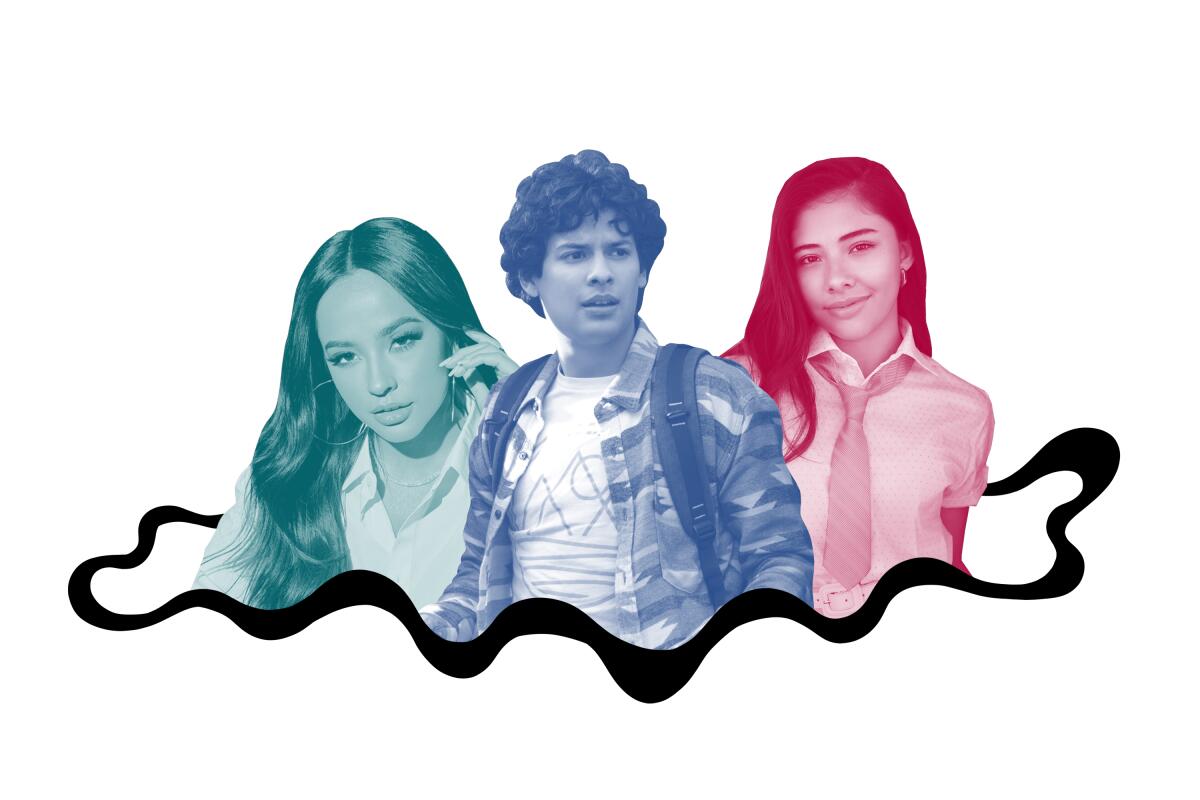
Doris Anahí Muñoz, musician
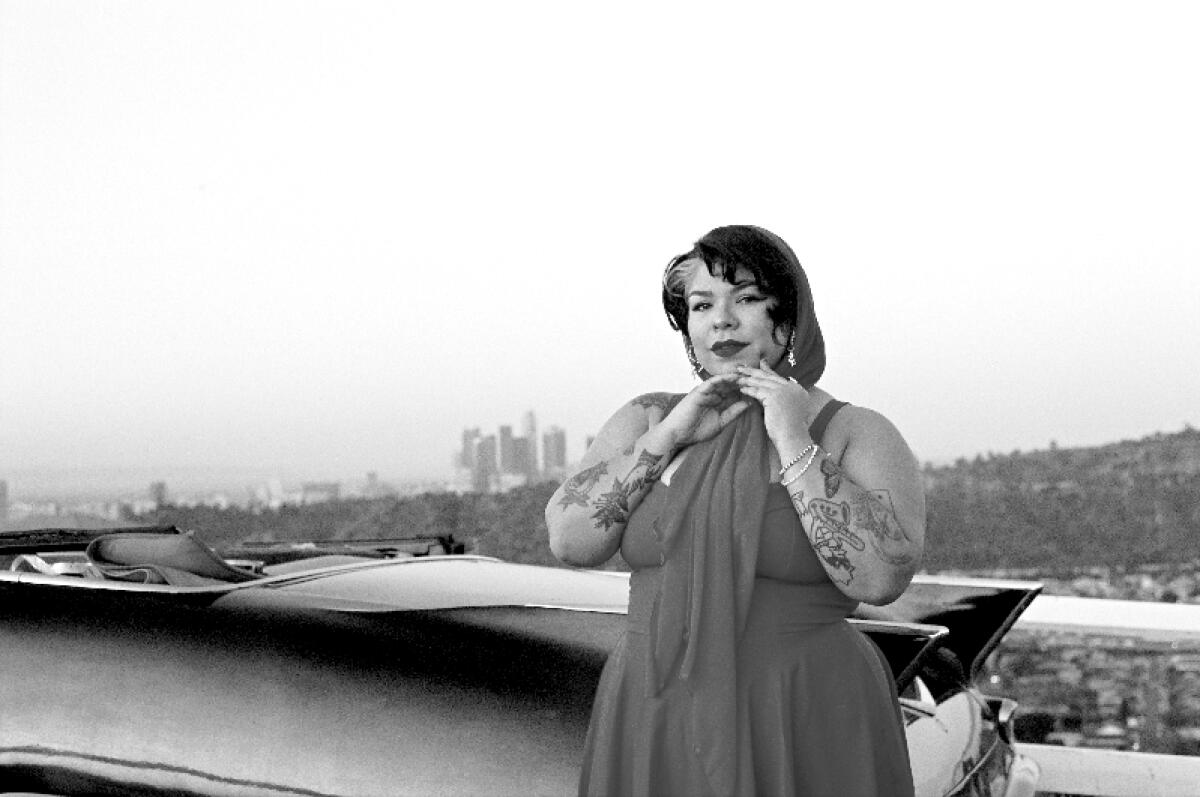
San Bernardino-raised and L.A.-based Anahí Muñoz has long been a power player in music, managing Chicano singer Cuco and creating the benefit concert series Selena for Sanctuary, which celebrates the late singer while helping send undocumented students to college. However, her latest feat might be her most impressive — grabbing the spotlight for herself to launch a career as a singer. Her journey recently got the big-screen treatment via Disney+, when she starred in a documentary about her life titled “Mija.” The film chronicles her ascent through the music industry, as she attempts to balance her dreams against the pressures that come along with being a first-generation immigrant born to parents living in the U.S. illegally. — Kenan Draughorne
Alice Bag, musician
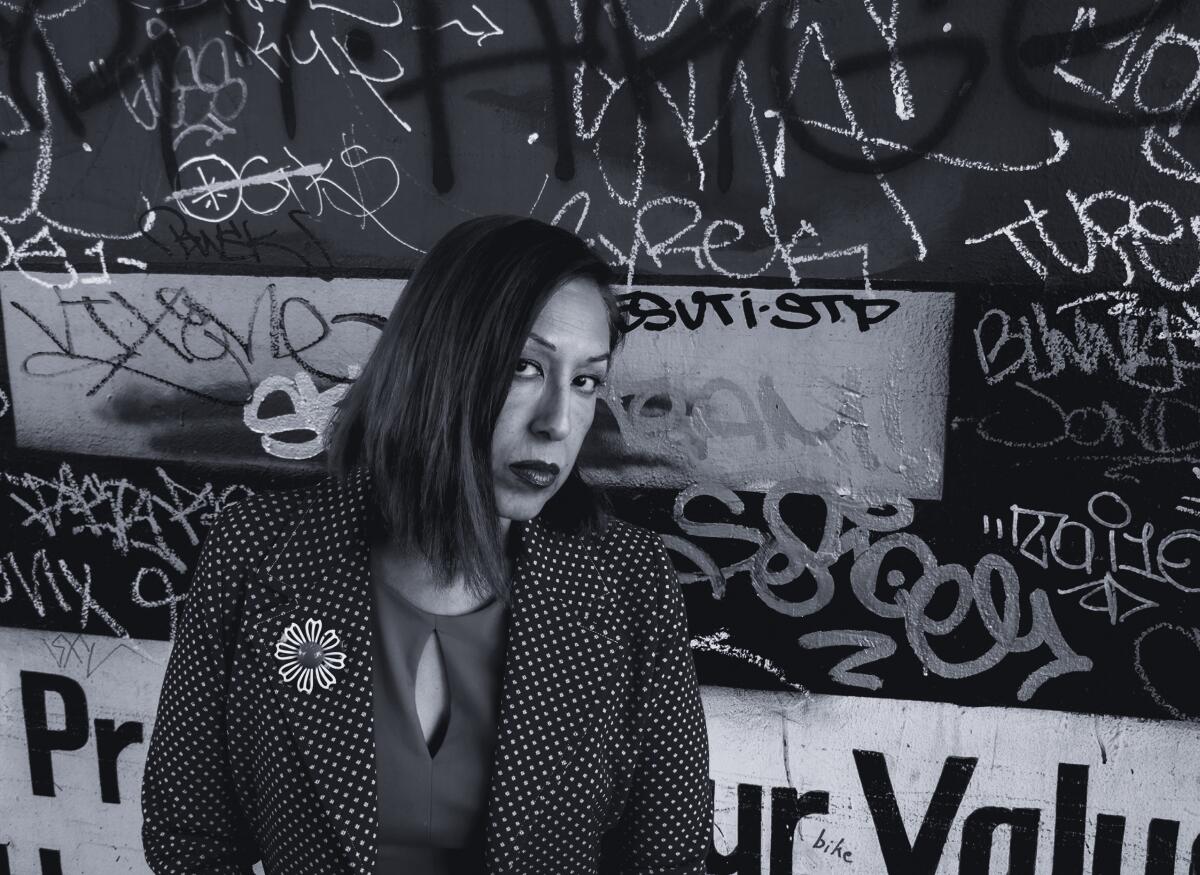
There is no L.A. punk without the formative vision of Alicia Armendariz. The Chicana singer better known as Alice Bag went steel toe to steel toe with the era’s heavy hitters like the Germs, Black Flag and X in her band the Bags. But unlike many of those “Decline of Western Civilization” peers, lost to drugs and gutter mythos, she’s still producing visceral and commanding work well into her 60s. Her late-career songs ring with fury about abuse and racist capitalism. She released a solo album, “Sister Dynamite,” in 2020, and her memoir “Violence Girl” should be right next to “Our Band Could Be Your Life” on any self-respecting punk bookshelf. — August Brown
Adel Carrera, nonprofit founder
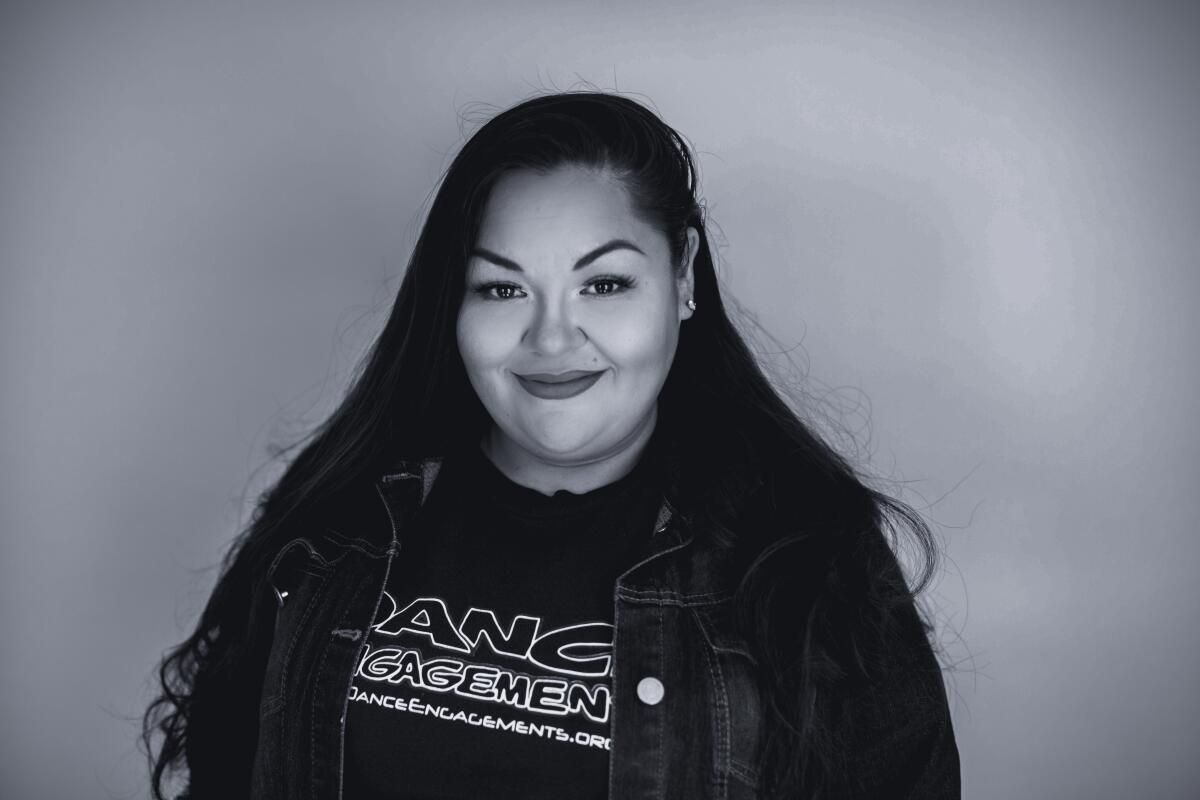
Born and raised in Los Angeles, Carrera grew up dancing at Hollywood High with the drill team and color guard. After graduating, she founded Dance Engagements in 2007, an organization dedicated to providing young dancers of all ages, shapes and sizes with dance education through camps, workshops and performances. “Whether they walk a little taller, have a little more confidence or go on to be on Broadway, I think that it’s important that us, as Latinos, are able to have those resources because dance can be a very intimidating space,” Carrera says. As someone who came to the U.S. at the age of 2 without documentation, she felt restricted in her own opportunities to dance abroad. After receiving protection under the Deferred Action for Childhood Arrivals program, or DACA, in 2015, she registered the organization as a 501(c)(3) to expand the opportunities she can pass on to future generations. — Steven Vargas
For the record:
10:22 a.m. Nov. 1, 2022An earlier version of this article said rafa esparza is a curator. He’s an artist. It also incorrectly gave Snow Tha Product’s real name as Claudia Alexandra Madriz Meza; it is Claudia Feliciano.
rafa esparza, artist
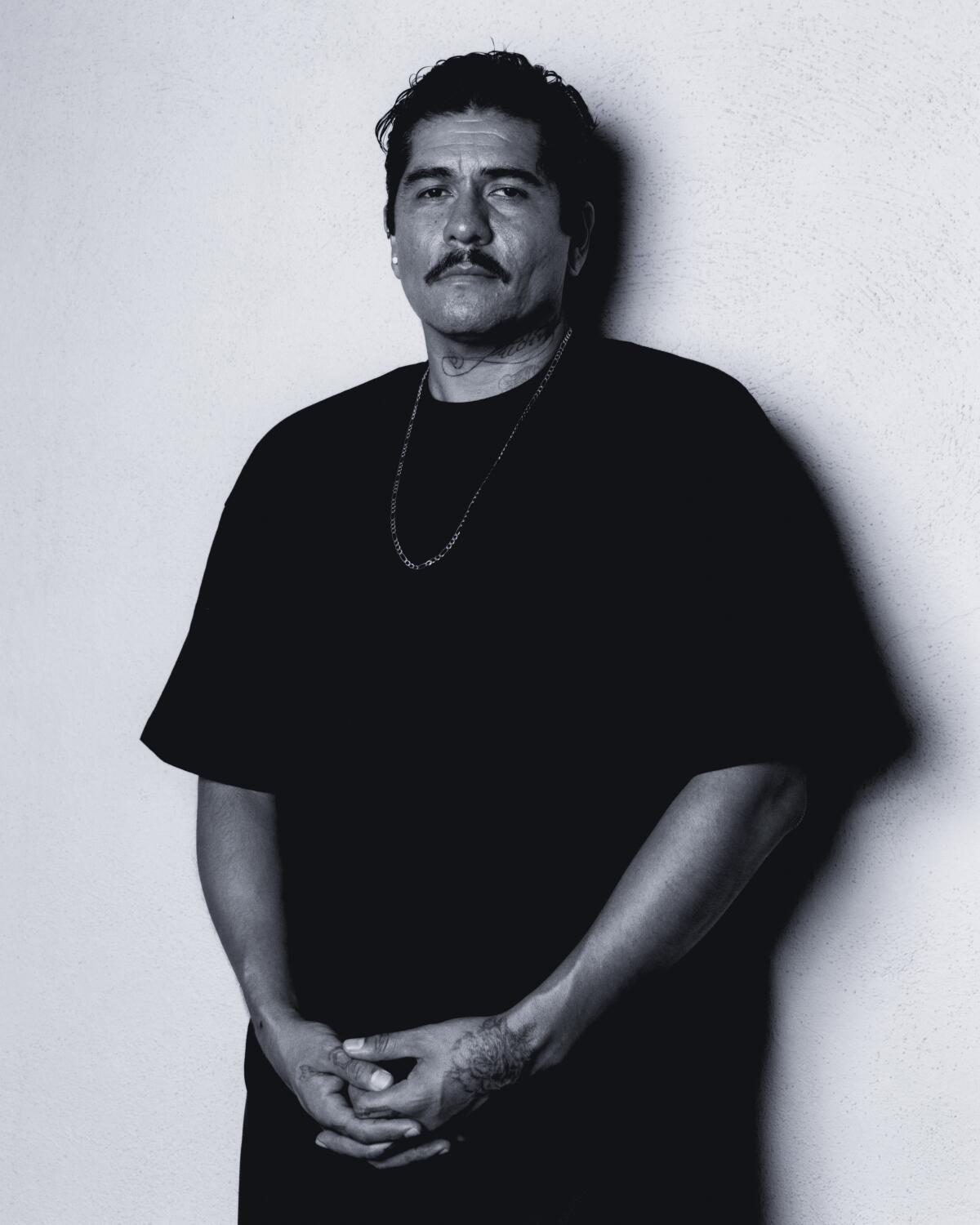
In 2015, esparza built a structure out of adobe bricks inside Los Angeles Contemporary Exhibitions on Hollywood Boulevard, then called on fellow artists, including poet Raquel Gutiérrez and vocalist Dorian Wood, to stage happenings on-site. Two years later, when he was invited to participate in the Whitney Biennial, he did the same thing — crafting a rotunda out of adobe then inviting others to make their mark. Esparza is an artist who turns art into collective enterprise, challenging the ideal of the lone genius in favor of something more inclusive. Moreover, his chosen material — adobe — brings to white box gallery spaces the brownness of earth and the scent of soil, along with its attendant signifiers of labor and connection to place. In L.A., where adobe is part of the city’s architectural legacy, this can make his work feel less like an installation than a poignant excavation — of histories that are too often overlooked. — Carolina A. Miranda
Becky G, musician

The eldest of four siblings in her Mexican American family, Becky was a breadwinner before she even finished elementary school. After an economic crisis forced her family out of their Moreno Valley home and into her grandparents’ garage, Becky took up work as a commercial voice actor and grew her following by singing covers of R&B songs on YouTube. By 14 she had signed to RCA and scored her first two hits: her 2013 throwback to J.Lo, “Becky From the Block,” followed by 2014’s “Shower.” When The Times caught up with her for LA Vanguardia, she had just learned of her four Latin Grammys nominations including song of the year and record of the year for “Pa’ Mis Muchachas,” or “For My Girls,” the sassy trap hit that heralded Christina Aguilera’s long-awaited return to Latin music, and also featured Argentine MCs Nicki Nicole and Nathy Peluso. The artist, now 25, is driven not only to push her own ascent in the music industry but also to lift up other Latinos along the way. “If we don’t use our platforms, if we don’t show our support for each other, how do we make it? We have to be championing one another.” Look for more on Becky in LA Vanguardia later this week. — Suzy Exposito
Xochitl Gomez, actor

Marvel superhero is a role Gomez didn’t think was in her cards. When her mom put her in martial arts classes years ago to add action skills to her resume, Gomez scoffed: “I always told her, ‘I’m never going to be a superhero, I’m never going to be in a blockbuster. This is just never going to happen. It’s never gonna be me.’ ” But there Gomez was earlier this year, playing queer Latina superhero America Chavez in Marvel’s “Doctor Strange in the Multiverse of Madness.” The actor has broader goals, not the least of which is to consider characters who aren’t necessarily Latino-coded. “It’s amazing getting to see more progressive casting that isn’t just solely interested in the fact that I’m a Latina,” she says. Gomez’s Hollywood ambitions extend behind the camera too. She’s been building her confidence in the director space by co-directing music videos, including “Runner Up” from artist GiaNina Paolantonio. The goal, she says, is “being in charge of how the stories and the point of views are shaped.” Look for more on Gomez in LA Vanguardia later this week. — Yvonne Villarreal
Xolo Maridueña, actor

Maridueña has kicked open doors, literally and figuratively, playing the role of a bullied-kid-turned-martial-arts-champ in Netflix’s ultra-popular series “Cobra Kai.” As the sensitive and handsome high schooler Miguel Diaz, breakout star (and heartthrob) Maridueña has continued to amass a fan base over five seasons of teen dramedy and impressive karate battles. And next year he’ll be tackling a new frontier: film. Maridueña takes on the lead role in the first superhero movie led by a Latino character, DC Extended Universe’s forthcoming “Blue Beetle.” Playing Jaime Reyes in the action film is a huge leap for the native Angeleno of Mexican, Cuban and Ecuadorian descent — and a long way from his beginnings as a child actor in the NBC family drama “Parenthood.” — Lorraine Ali
Natalia Molina, historian
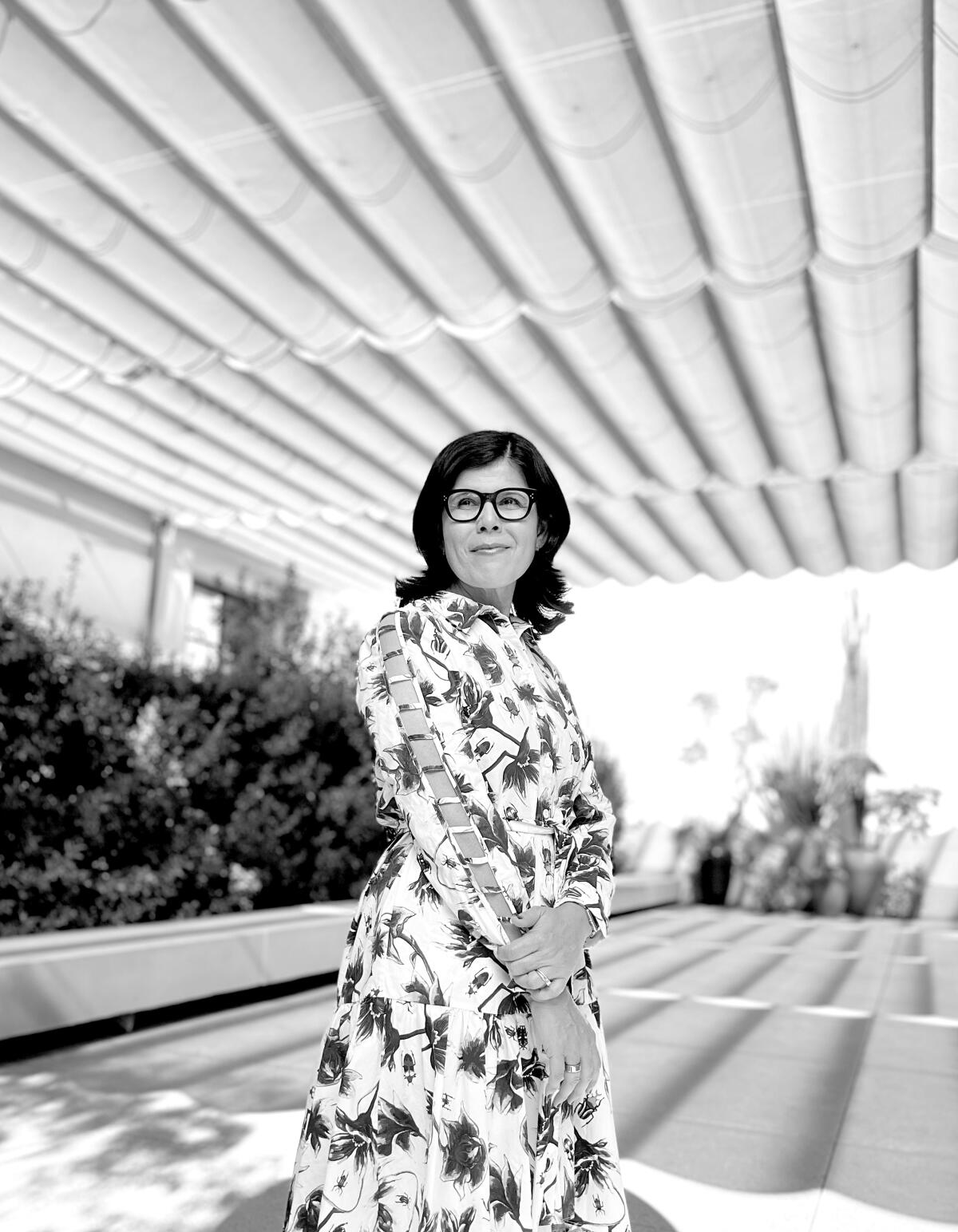
Molina will allege that she’s boring. This is not true. She is clever and funny even when talking about something serious, be it structural racism in immigration policy or the tios and tias who have shaped her life as a distinguished professor of American studies and ethnicity at USC and as interim director of research at the Huntington Library, Art Museum, and Botanical Gardens. Among her ancestors were strong women like Doña Natalia Barraza, her late grandmother and the inspiration for Molina’s latest book, “A Place at the Nayarit: How a Mexican Restaurant Nourished a Community.” The book she’s writing next is about the Mexican workers who built the Huntington. She sees her positions in places of privilege as an opportunity to create pipelines of opportunity. “I think we have to build them,” she says. “There’s just not enough of us. Once you’re in that position, you really need to know that this isn’t about you.” Look for a more on Molina later this week in LA Vanguardia. — Dorany Pineda
Carla Morrison, musician
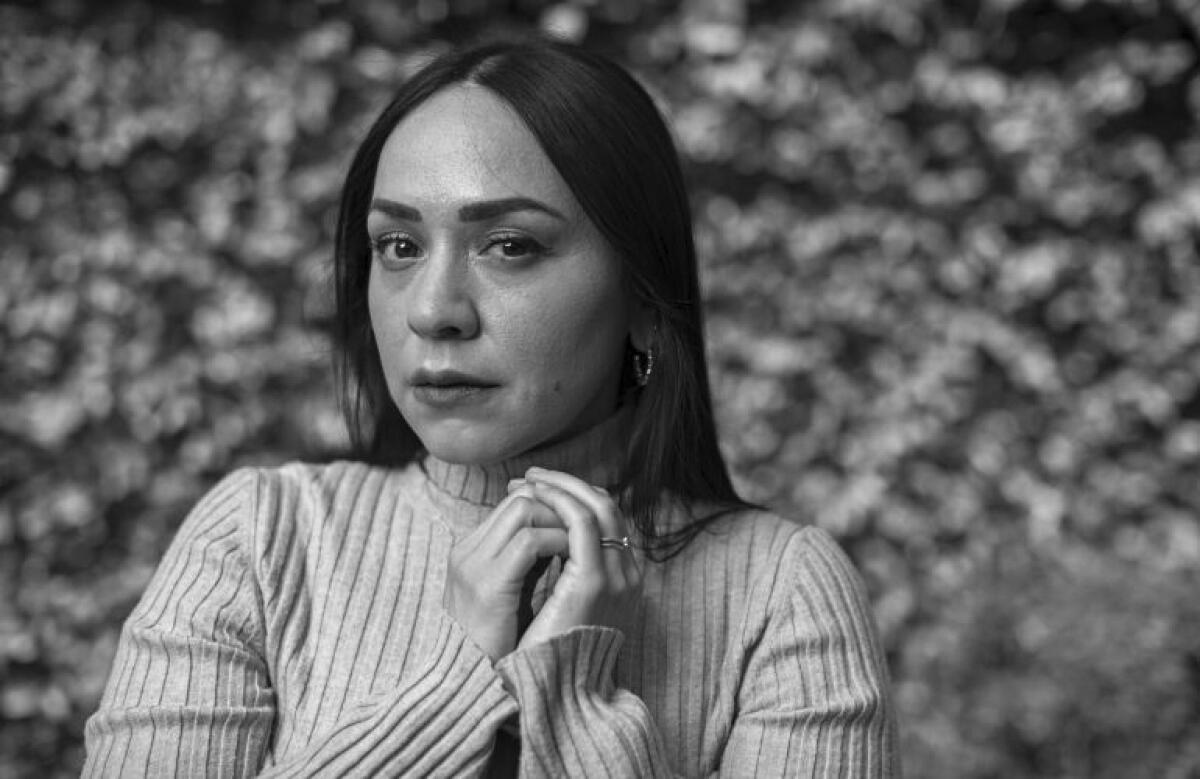
Mexican indie-pop star Morrison is for the sad girls — and she wouldn’t have it any other way. The L.A.-based artist first rocked the Latin music world in 2012 with her Latin Grammy-winning debut, “Déjenme Llorar,” or “Let Me Cry,” a collection of sweetly sung folk songs that bubble with an arresting sensuality — and, at times, righteous rage. Yet her time in the spotlight took a toll on her mental health; after taking a three-year sabbatical from music, Morrison bravely detailed her lifelong struggle with anxiety and PTSD from sexual abuse in her 2022 album, “El Renacimiento” (“The Renaissance”), which is nominated for contemporary pop vocal album at this year’s Latin Grammys. “I wish not only in Mexico, but in Latin America, we would talk [about our struggles] as much as we talk about the good things,” Morrison told The Times in May. “We should talk about the bad things in a more responsible, empathetic and compassionate way.” — S.E.
Jonathan Muñoz-Proulx, theatrical artistic director

His name may not be known to most theatergoers, but behind the scenes Muñoz-Proulx has been articulating a path for theaters to realize their ideals of becoming more inclusive and community-centered, more forward thinking not only in their programming but also in their institutional practice. A director whose work as an administrator and producer is profoundly creative, he was appointed artistic director this year of the Los Angeles LGBT Center’s Lily Tomlin/Jane Wagner Cultural Arts Center in Hollywood. He was previously at A Noise Within in Pasadena, Skylight Theatre and East West Players. A galvanizing proponent of a vision that is as expansive as it is evolving, Muñoz-Proulx is forthright in his commitment to centering the intersectionality of LGBTQ and BIPOC communities, which for him includes youth experiencing homelessness, queer seniors and non-English speakers. Laying out a roadmap for the future is one thing. Implementing it quite another. Muñoz-Proulx has the know-how and tenacity to steer Los Angeles theater toward a more equitable tomorrow. — Charles McNulty
Gerardo Ortiz, musician
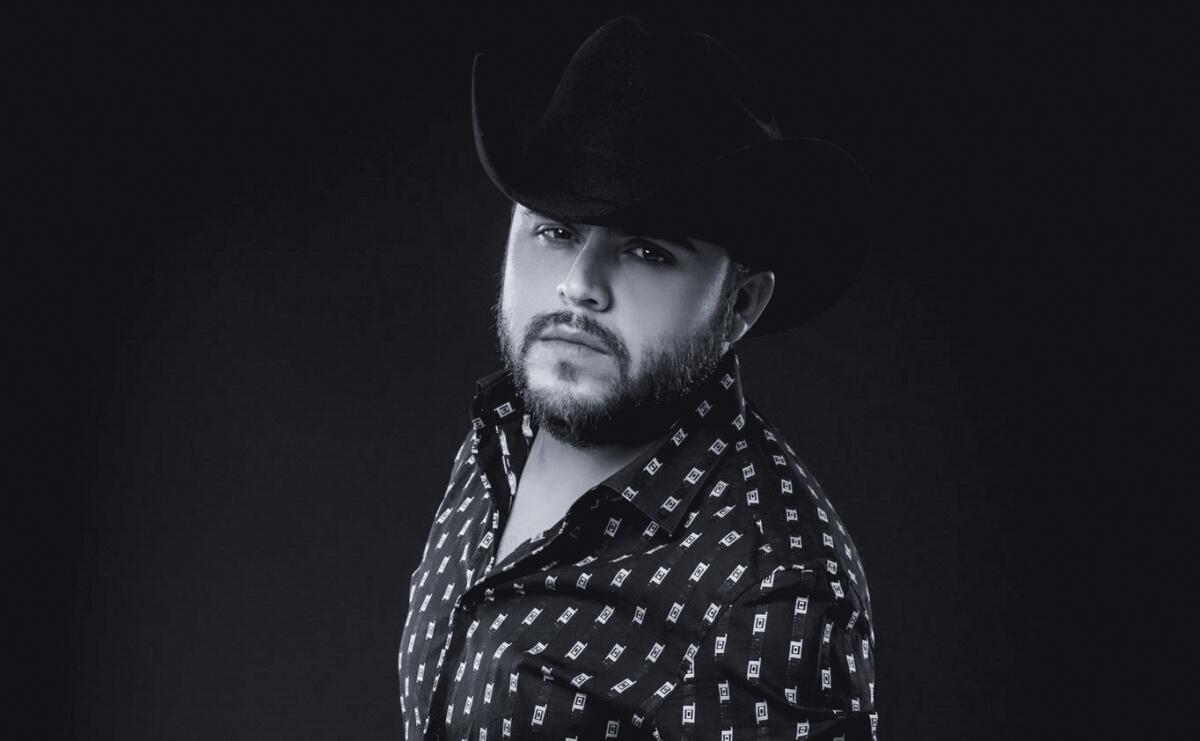
Somewhere between the Chalino Sánchez school of narcocorrido outlaws and their younger trap contemporaries, Pasadena-born banda and corrido artist Ortiz has carved out his own niche in regional Mexican music. Following his 2010 debut, “Ni Hoy Ni Mañana,” the two-time Grammy-nominated crooner racked up six consecutive No. 1 albums on the Top Latin Albums chart and eight No. 1s on the Regional Mexican Albums chart, surpassing previous records by icons like Vicente Fernández and Jenni Rivera. Since then, Ortiz’s gritty ballads made him both the toast of the industry and a thorn in the side of the law: He was arrested in Mexico for “criminal exaltation” after filming a since-banned music video for his 2016 song “Fuíste Mía,” which depicts him bounding a woman and leaving her trapped inside a burning car. (“I’ve made decisions that have directly impacted my career and have had major consequences,” he told Billboard in 2021.) Since then, the artist has offered more positive depictions of his genre and collaborated with reggaeton artists like Darell and Gente de Zona in fusions that meld the best of Mexican folk and Caribbean pop sounds. — S.E.
Sierra Teller Ornelas, showrunner

A former film programmer for the Smithsonian’s National Museum of the American Indian, Teller Ornelas produced “Brooklyn Nine-Nine” and wrote for “Happy Endings” and “Superstore” before co-creating “Rutherford Falls” with Mike Schur and star Ed Helms. Set in a small town that borders a Native American reservation, the Peacock sitcom collected critical acclaim for its warm and gentle satire of American mythmaking, standout performances of nonstereotypical characters by oft-overlooked Native actors and notable Indigenous representation in the writers room throughout its two seasons. What’s additionally groundbreaking: Teller Ornelas, who is Navajo and Mexican American (and also a sixth-generation Navajo weaver!), is known as the TV industry’s first Native American showrunner. Though “Rutherford Falls” won’t be returning for a third season, the deft comedy is just the beginning for Teller Ornelas, who also co-executive produced Apple TV+’s Maya Rudolph vehicle “Loot” and whose overall deal with Universal Television was renewed last year. — Ashley Lee
Rafael Agustín, CEO of the Latino Film Institute
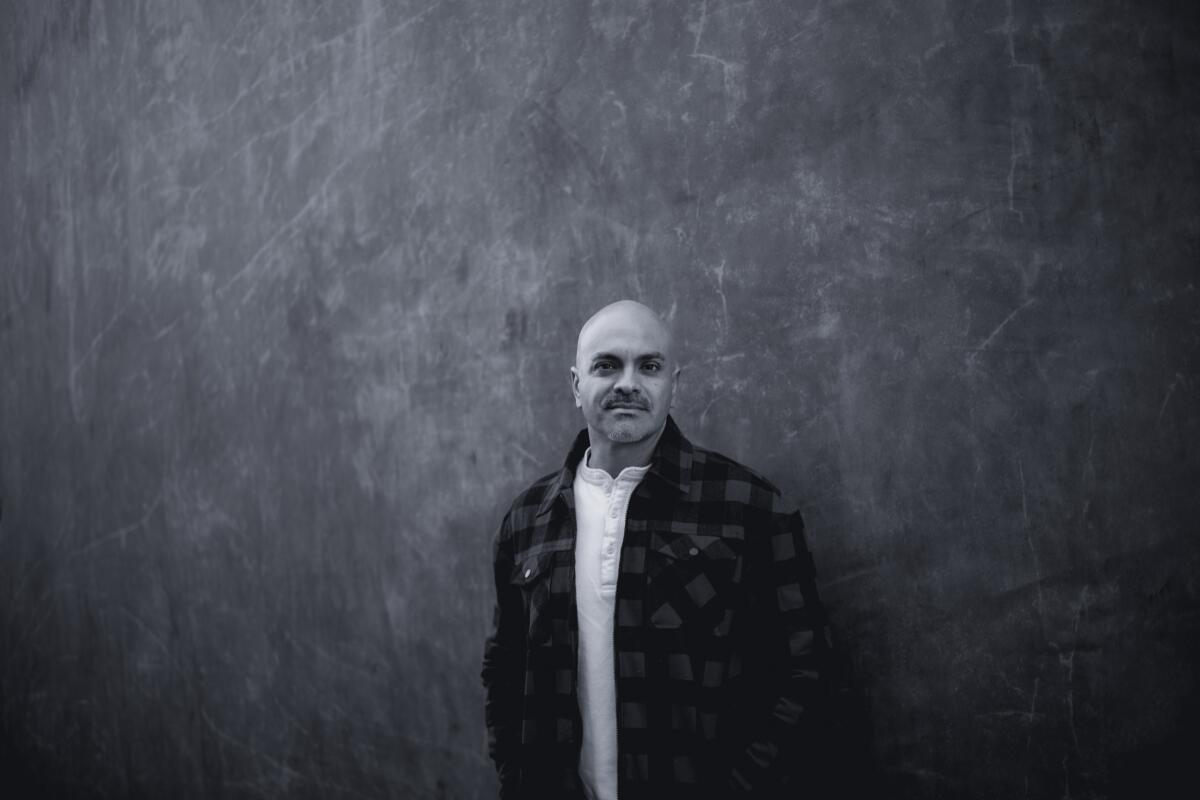
Agustín was a junior in high school when he learned that his family, originally from Ecuador, lacked legal status in the United States — a fact that he, as a teen immersed in American pop culture, had been oblivious to. In his heartwarming memoir “Illegally Yours,” he recounts his winding journey to college and, eventually, a career in Hollywood, including an unproduced pilot called “Illegal” that landed him a job as a writer on the CW’s charming telenovela spoof “Jane the Virgin.” He currently serves as CEO of the Latino Film Institute, where he works to give others a start in the business. As he told The Times, “There are people in my community more talented than me who weren’t able to rise up.” — Meredith Blake
Victoria Alonso, Marvel executive
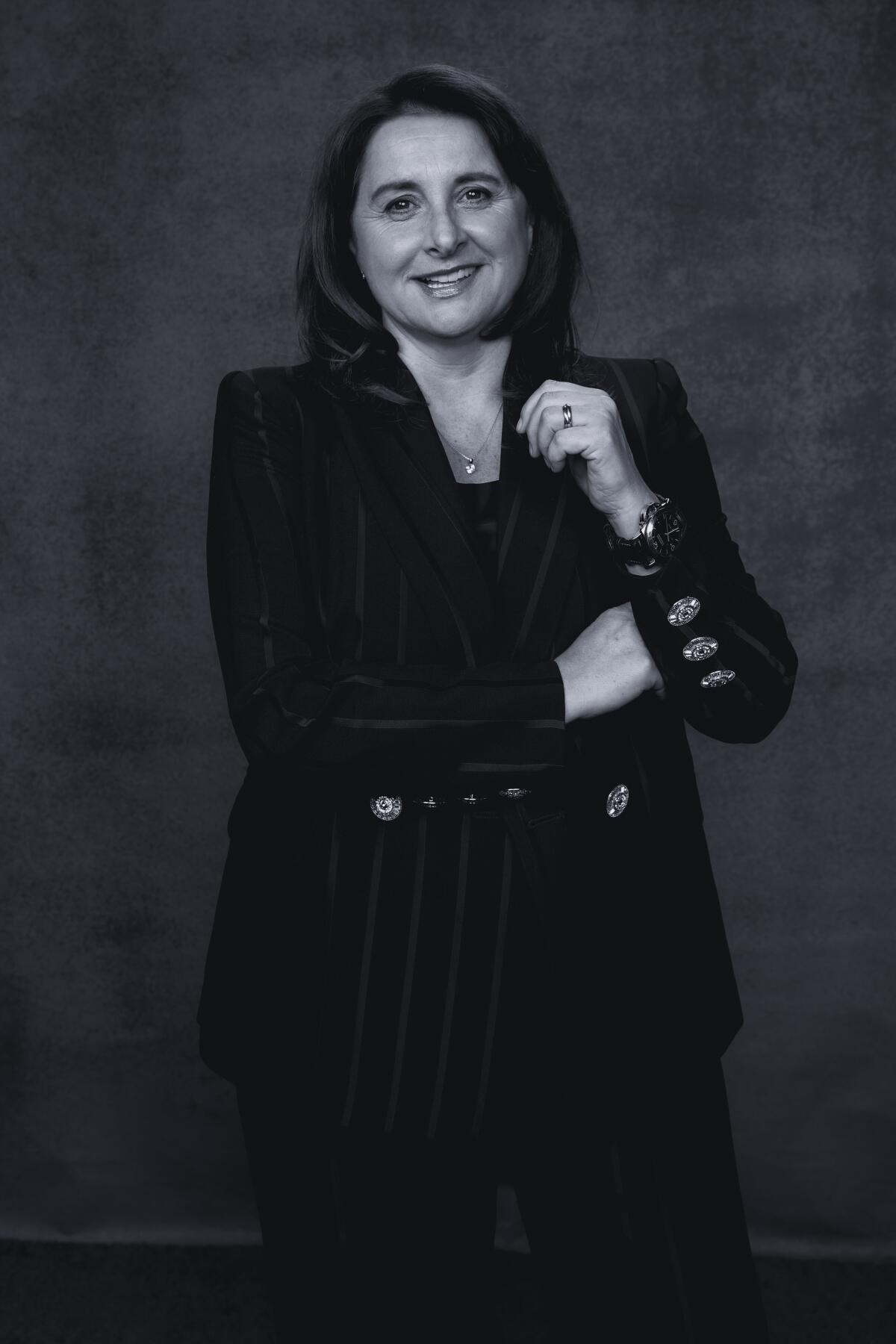
As the president of physical, post-production, VFX and animation at Marvel Studios, Alonso is the behind-the-scenes star of the Marvel Cinematic Universe. Alonso is listed as a producer or executive producer on every Marvel screen property since “Iron Man.” In the 1980s, the Buenos Aires-born Alonso moved to Los Angeles to get into the visual effects industry. She worked with James Cameron and Tim Burton before rising to her role alongside Marvel President Kevin Feige. She recently brought a Latina hero to the screen with “Doctor Strange in the Multiverse of Madness” character America Chavez (played by fellow LA Vanguardia standout Xochitl Gomez). It was another move in Alonso’s mission to keep diversity and inclusion at the forefront of what she, and Marvel, are doing. — Jevon Phillips
Ana de Armas, actor

With a vivacious presence that leaps from the screen, De Armas has shot to stardom with roles in films such as “Blade Runner 2049,” “Knives Out” and “No Time To Die.” Born in Cuba to a family of Spanish heritage, as a teenager De Armas moved to Spain to further pursue her acting career, eventually making her way to the U.S. (She learned her first few English-language roles phonetically.) Now with her starring role as Marilyn Monroe in Netflix’s “Blonde,” the part demanded that De Armas re-create scenes from Monroe’s life and movies that are already indelibly etched in the collective memory, while also depicting private moments of pain and torment that attempt to put everything people think they know about the Hollywood icon into a new light. Even as the film itself has received mixed-to-scathing responses, there has been near universal praise and award season buzz for De Armas’ committed performance as Monroe. — Mark Olsen
Betty Avila, nonprofit executive director
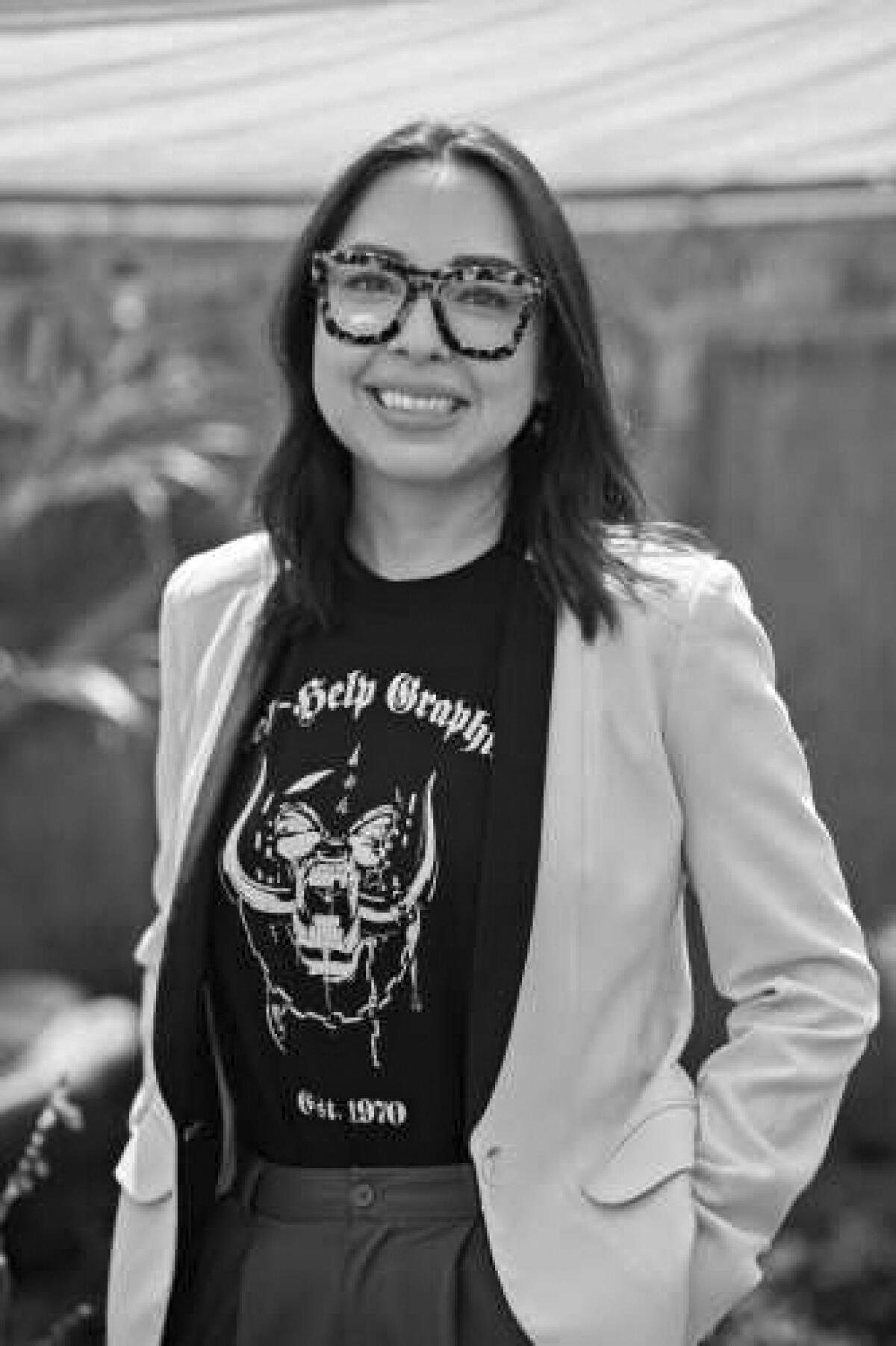
The East L.A. nonprofit Self Help Graphics & Art — a mainstay of the Chicano art movement in the early ‘70s — is part printmaking studio, part exhibition space and part cultural and community center. But it’s had somewhat of a precarious existence, having launched in a Boyle Heights garage and since moving locations after its building was sold. Executive Director Avila, who’s been at the helm since 2018, has been instrumental in ushering in the organization’s future. She helped oversee the purchase of its building; renovations on the century-old space will begin next year. Avila, who grew up in Northeast L.A. and currently chairs the Latinx Arts Alliance, is committed not only to the arts but also to equitable representation of Chicano and Latino artists, institutions and culture workers. Her efforts at Self Help Graphics have helped ensure permanence in L.A. for the vital organization and for the communities of young artists it supports. — Deborah Vankin
Elisa Bocanegra, theater founder

As the founder of the BIPOC-focused company Hero Theatre, Bocanegra has helped make live theater in Los Angeles more equitable and inclusive — providing space for and giving artistic voice to actors of all races, genders, sexualities, religions, beliefs and backgrounds. For more than a decade, Hero has presented plays that seek to represent America as it is: a complex, messy, beautiful, sometimes fractured melting pot — but always craning toward the light of justice. An actress and director with Puerto Rican roots, Bocanegra is a 2022-23 Fulbright Award recipient. She is currently working as a director on a 10-year-long stage and screen project called “Nuestra Planeta,” which seeks to educate Latino audiences about environmental justice in the Americas. During the height of the pandemic, Bocanegra used money she made from commercials to help keep Hero afloat. The company’s mission of creating a platform for artists of color, she said at the time, was too important to give up on, no matter the cost. — Jessica Gelt
Rene Contreras, talent buyer
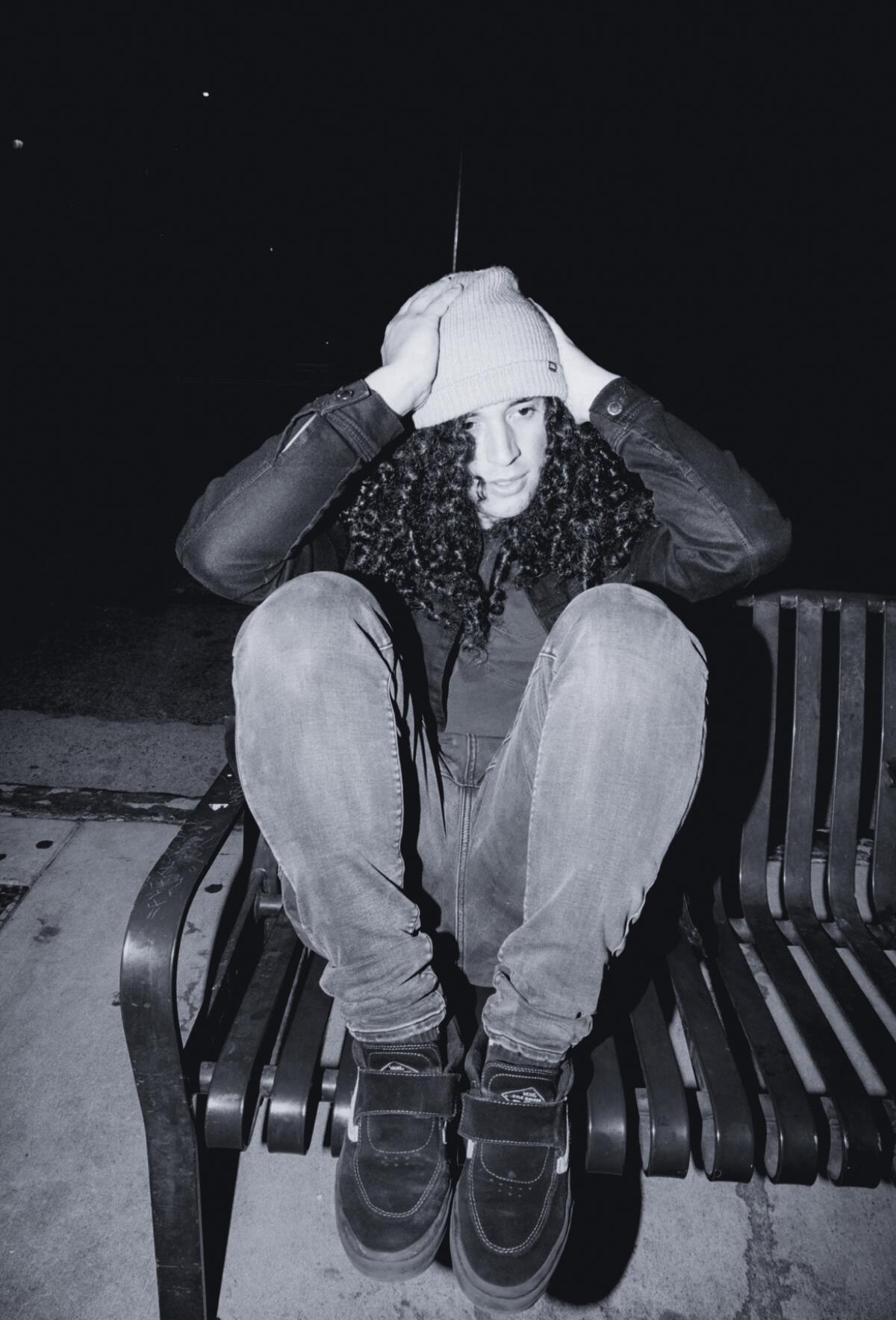
If you’ve wandered into Coachella’s punky Sonora tent in recent years, you’ve seen Contreras’ handiwork. The young promoter cut his teeth booking DIY shows around the Inland Empire in his teens, and caught the L.A. scene’s attention with his Viva! Pomona festival, an encyclopedic event for the Chicano and Latin hardcore underground. Promoter Goldenvoice brought him on to help book emerging festivals like Cruel World and This Ain’t No Picnic; the planned June debut of his Viva! L.A. mega-fest at Dodger Stadium, with headliners Daddy Yankee, J Balvin, Becky G and Kali Uchis, unfortunately became a late-pandemic casualty. Still, Contreras remains one of the most enthusiastic, exciting talent buyers in SoCal’s live music scene. — A.B.
Ariana DeBose, actor
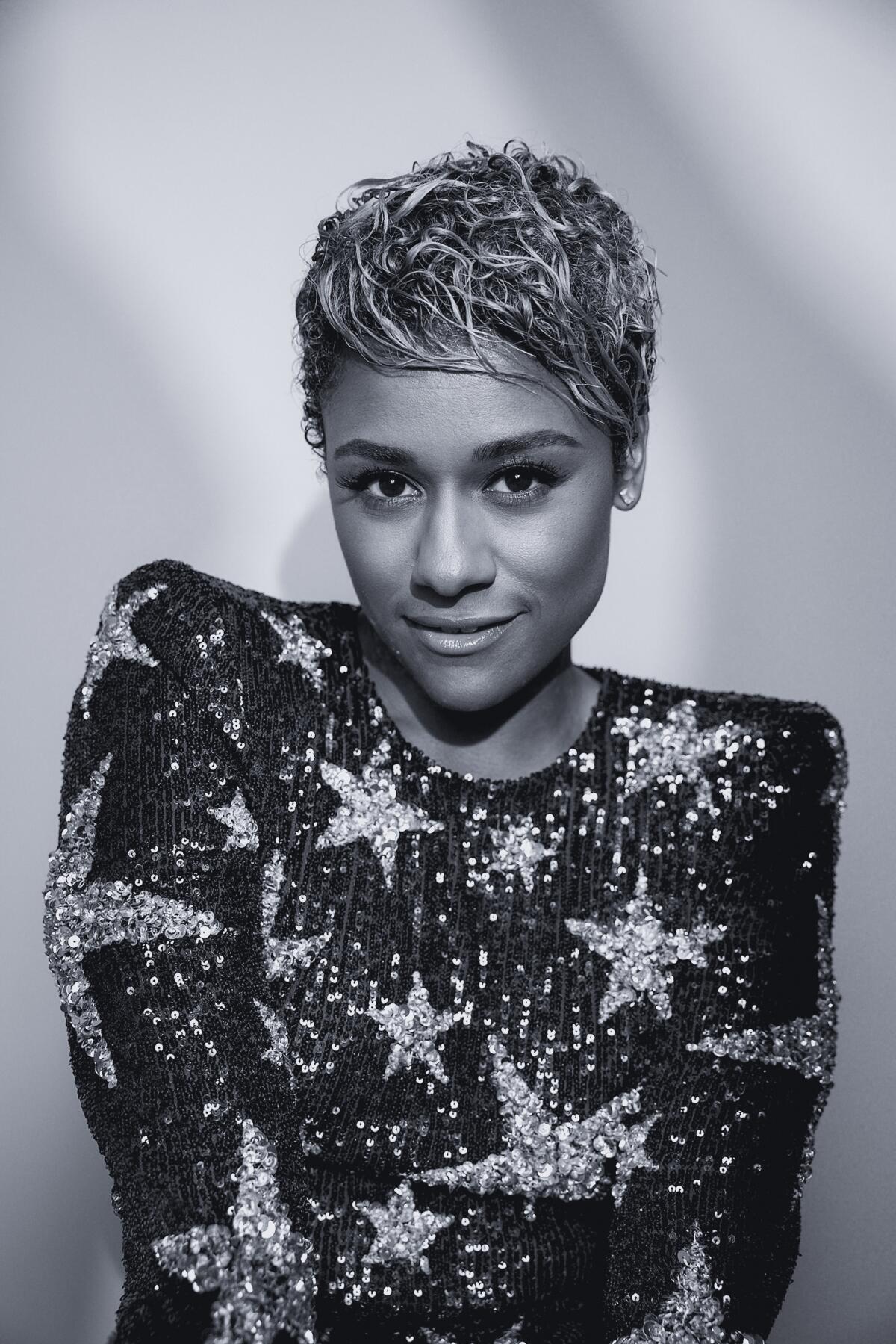
Multihyphenate DeBose first made a splash on Broadway, appearing as the Bullet in the original ensemble cast of “Hamilton” before breaking out as Disco Donna in “Summer: The Donna Summer Musical.” Then came the role of her career. In 2021, DeBose commanded the screen in her scene-stealing turn as Anita in Steven Spielberg’s musical “West Side Story,” then made history as the first out queer woman of color to win an Academy Award for acting, 60 years after Rita Moreno became the first Latina to win an Oscar for the same role. For the trailblazing Afro-Latina actor, dancer and singer — who also has a BAFTA win, a Golden Globe trophy and a Tony nomination under her belt — it feels like only the beginning. DeBose, also seen on TV in “Schmigadoon!” and “Westworld,” has lined up roles in sci-fi thriller “I.S.S.,” spy ensemble pic “Argylle” and her first foray into superhero blockbuster territory as Calypso in Sony’s Marvel tentpole “Kraven the Hunter,” due in 2023. — Jen Yamato
María Esther Fernández, museum artistic director

When the Cheech Marin Center for Chicano Art and Culture opened in June, the debut marked an important first for Southern California. No other museum has offered a substantive permanent exhibition dedicated to any aspect of the region’s bountiful postwar art history. An opportunity also opened for Fernández, the center’s new artistic director and a specialist in the Chicano movement. The Cheech appointment came just 11 months before the opening, while Fernández was also in the midst of co-organizing a retrospective of Bay Area Chicana feminist Amalia Mesa-Bains (opening at the Berkeley Art Museum in February). Fernández, a Chicago native who grew up in Inglewood, rose to become chief curator and deputy director during 16 years at the Triton Museum of Art in Santa Clara. A top priority, she told The Times when her Cheech appointment was announced, is to “expand the narrative of Chicanx art.” — Christopher Knight
José Galván, radio DJ and talent booker
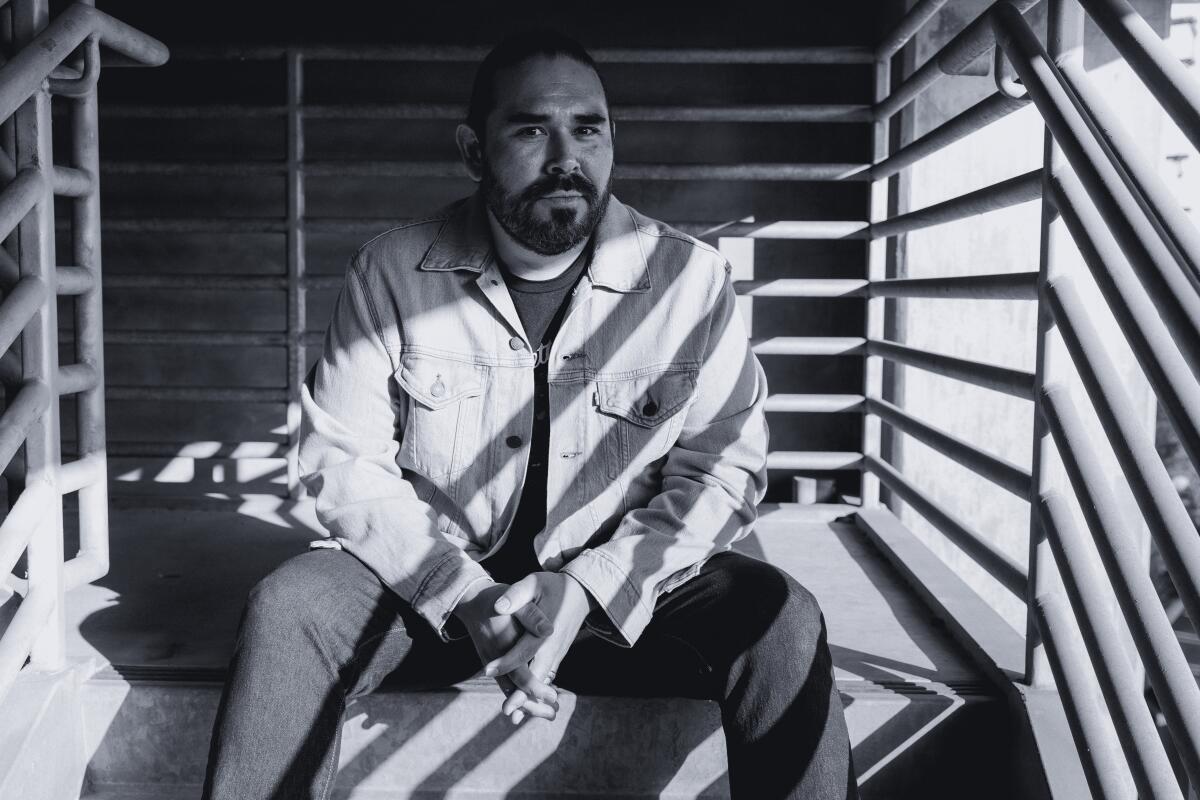
As lord of Monday nights at NPR-affiliate station KCRW-FM, DJ Galván has revitalized the city’s airwaves with his positively zany playlists, effortlessly weaving in the sounds of Björk with up-and-coming L.A. bands like the Red Pears. As curator of live music at Boyle Heights venue the Paramount — and previously at the now-defunct Hi-Hat in Highland Park — Galván has championed emerging Latin alternative acts like Silvana Estrada, Monogem and the Marías. Born in Mexico City and raised in the San Gabriel Valley, Galván fondly recalls frequenting backyard shows in Baldwin Park and, eventually, the monthly DIY parties in L.A. he named “Chido Chévere Cool,” an allusion to his Mexican, Colombian and American heritage. — S.E.
Carolina Garcia, director of original series at Netflix
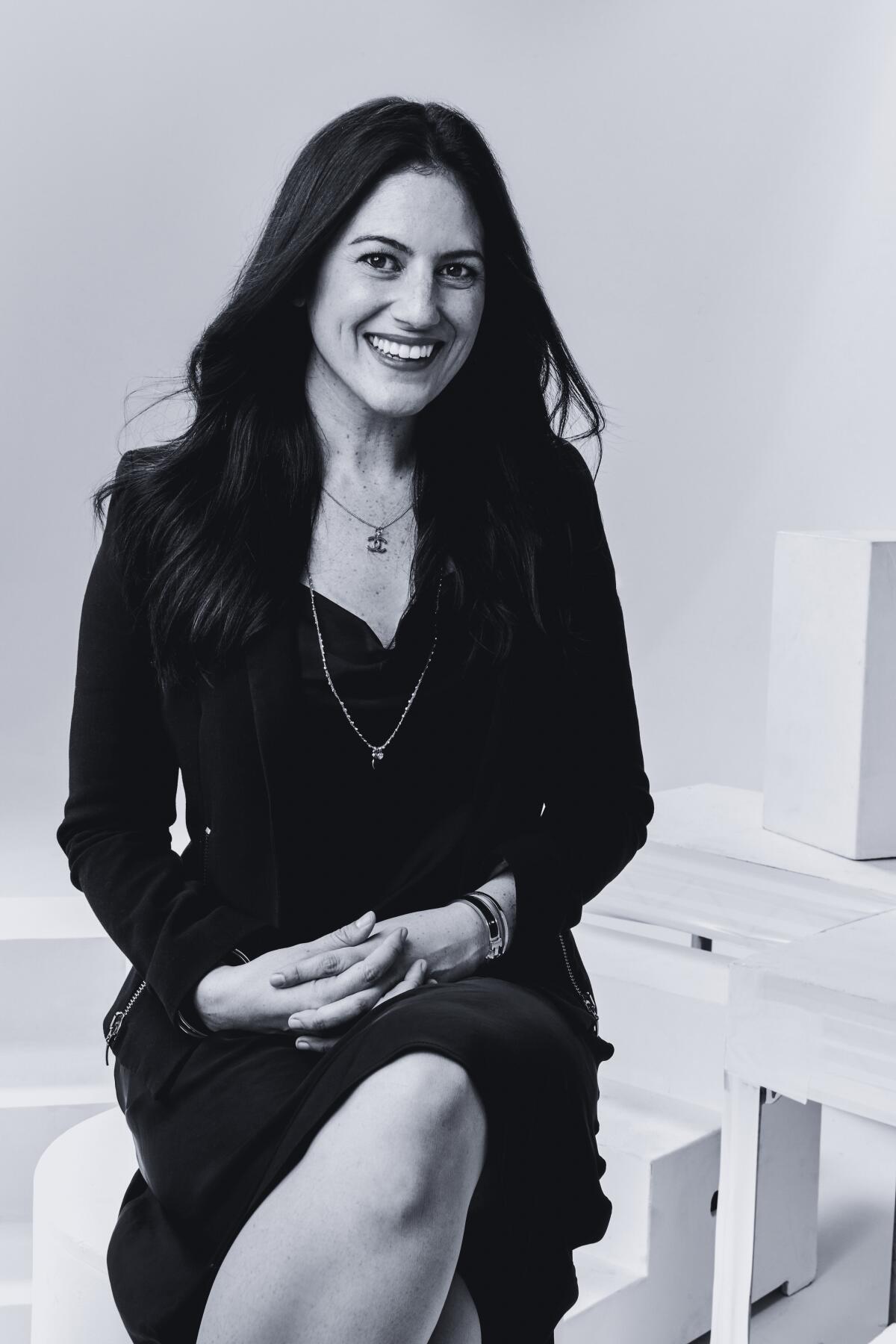
As a director of original series at Netflix, Garcia was instrumental in shepherding such popular series as “Stranger Things,” “13 Reasons Why” and “The Chilling Adventures of Sabrina.” Garcia was drawn to the entertainment industry from her love of the action-drama series “24.” She landed an internship at 20th Century Fox and, after college, joined Fox as an assistant. Garcia worked at 20th Century Fox for nine years, moving up the ranks to manager of current programming. In 2016, she joined Netflix, where she oversees some of the streamer’s deals with talent and production companies, including the Duffer Brothers, the Duke & Duchess of Sussex’s Archewell Productions and Shawn Levy’s 21 Laps. The native of Argentina who grew up in Claremont is also an avid singer and dancer who often collaborates with her sister, who is a singer-songwriter. — Wendy Lee
Rita Gonzalez, head of contemporary art at LACMA
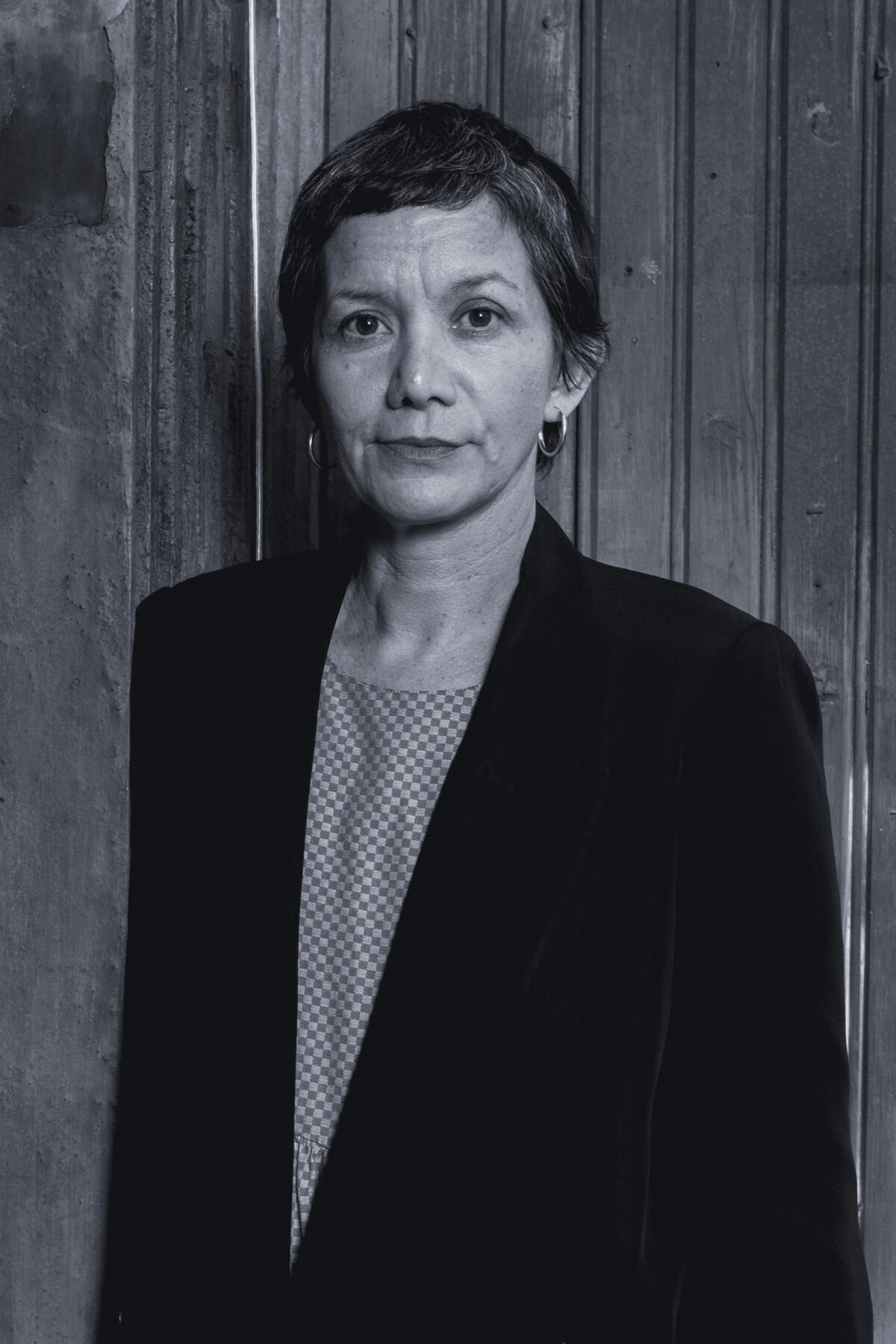
Gonzalez is among the most widely known curators of contemporary art working at a major U.S. museum. Some of her focus at LACMA, where she has been on staff for 16 years and for the past four has headed its contemporary department, has been Latino art — most notably “Asco: Elite of the Obscure, A Retrospective, 1972–1987,” unraveling the tangled history of the influential L.A. Chicano performance and Conceptual art group; and, with Howard N. Fox and Chon Noriega in 2008, “Phantom Sightings: Art after the Chicano Movement.” With 100 works by 30 artists, “Phantom” is reportedly the largest museum survey exhibition of new Chicano art anywhere, before or since. Farther afield, Gonzalez served as a curatorial and program advisor to Prospect New Orleans, the triennial exhibition of commissioned works around the Louisiana city that grew out of the devastation wrought by Hurricane Katrina in 2005. — C.K.
Jimmy Humilde, music executive
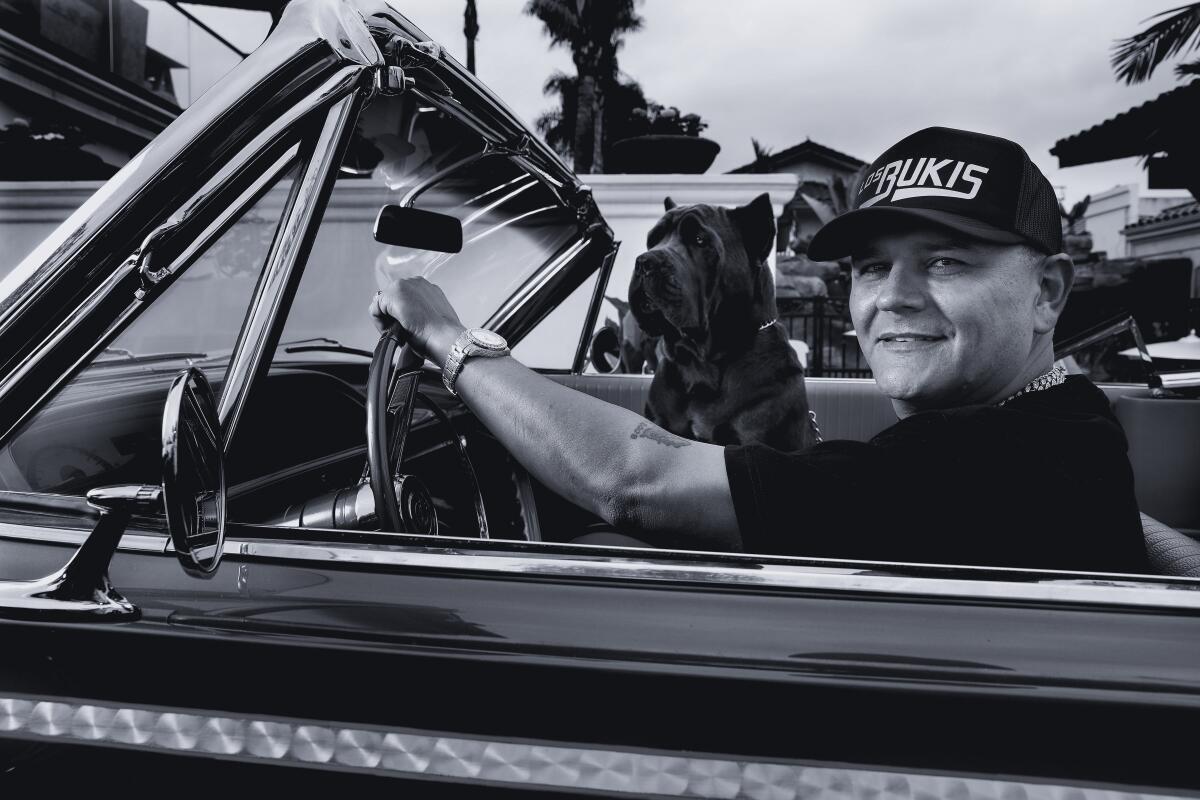
Humilde, founder and CEO of the powerhouse independent record label Rancho Humilde, looks to the future without abandoning the past. It’s how he’s become a leader in popularizing “corridos tumbados,” which updates regional Mexican music for a new generation. As he told The Times in 2021: “We still use the regional [Mexican] instruments, but our movement comes from urban life, the city life. At this point, calling what we do ‘regional Mexican’ … is like calling reggaeton salsa.” Before founding the Downey-based label in 2011, he was scouting and developing artists, only to watch them abandon him for the major label system. A decade later, the artists on Rancho Humilde are becoming stars in their own right, such as multiplatinum singer Natanael Cano, whose album “Corridos Tumbados” spent 31 weeks atop Billboard’s Regional Mexican Albums chart. The label is home to more than 80 artists in total, including Junior H and the quartet Fuerza Regida. — K.D.
Gustavo Lopez, music executive
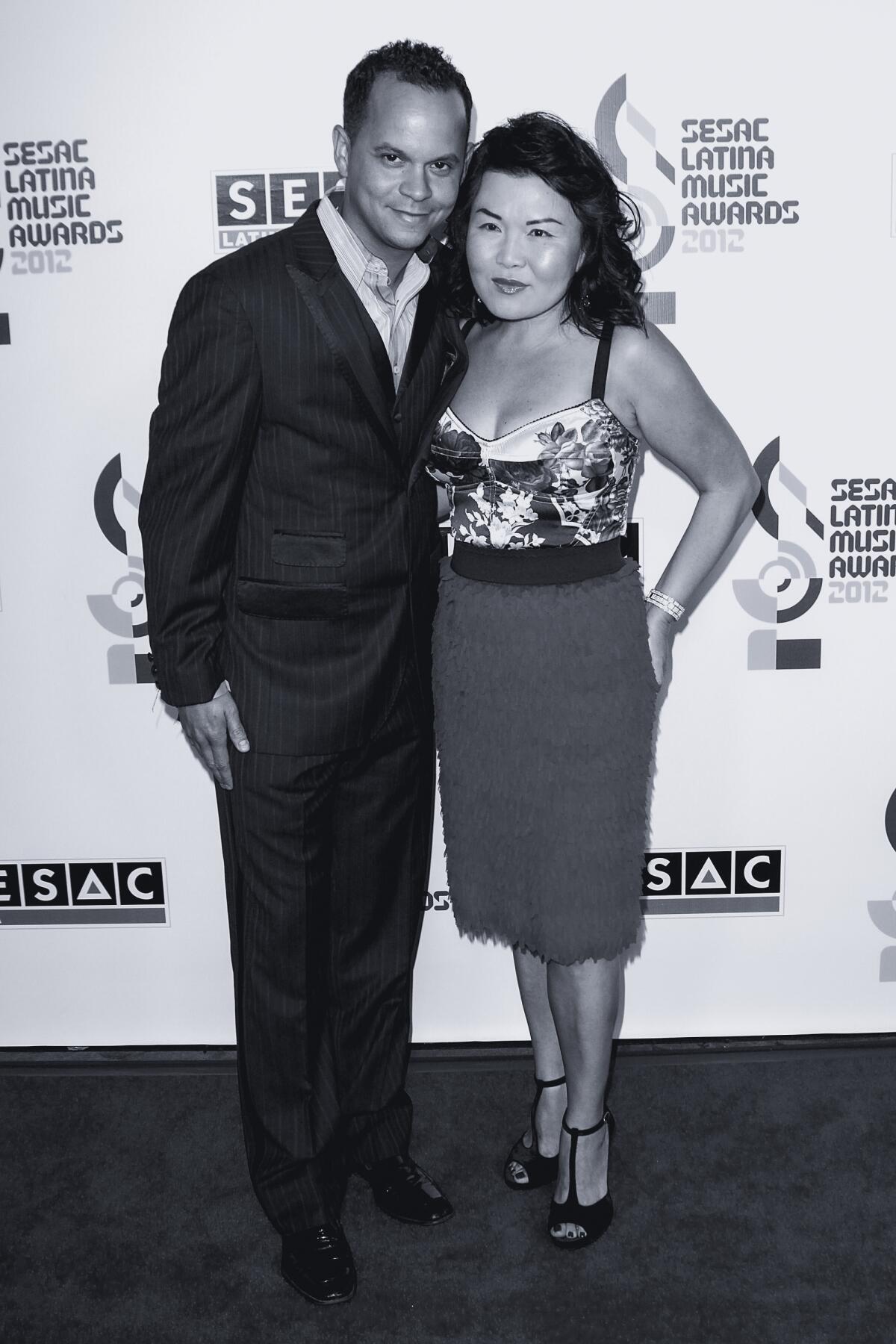
Over a decades-long career at Universal Music, the Puerto Rican-born, Cal State Northridge grad Lopez helmed Machete Music, the conglomerate’s first Latin urban imprint that helped launch Daddy Yankee, Don Omar and Wisin & Yandel into stardom. He’s also a formative figure in the current wave of regional Mexican music, having led the Fonovisa and Disa imprints, which released LPs from Marco Antonio Solis, Los Ángeles Azules, Los Tigres Del Norte, Jenni Rivera and Banda El Recodo. He left Universal to found the Talento Uno Music firm in 2017, and after entertainment impresario Haim Saban bought the company in 2019, Saban put him atop the new $500-million firm right as Latin urban music became the sound of global pop. — A.B.
Jose Luis Palacios, design director at SOM
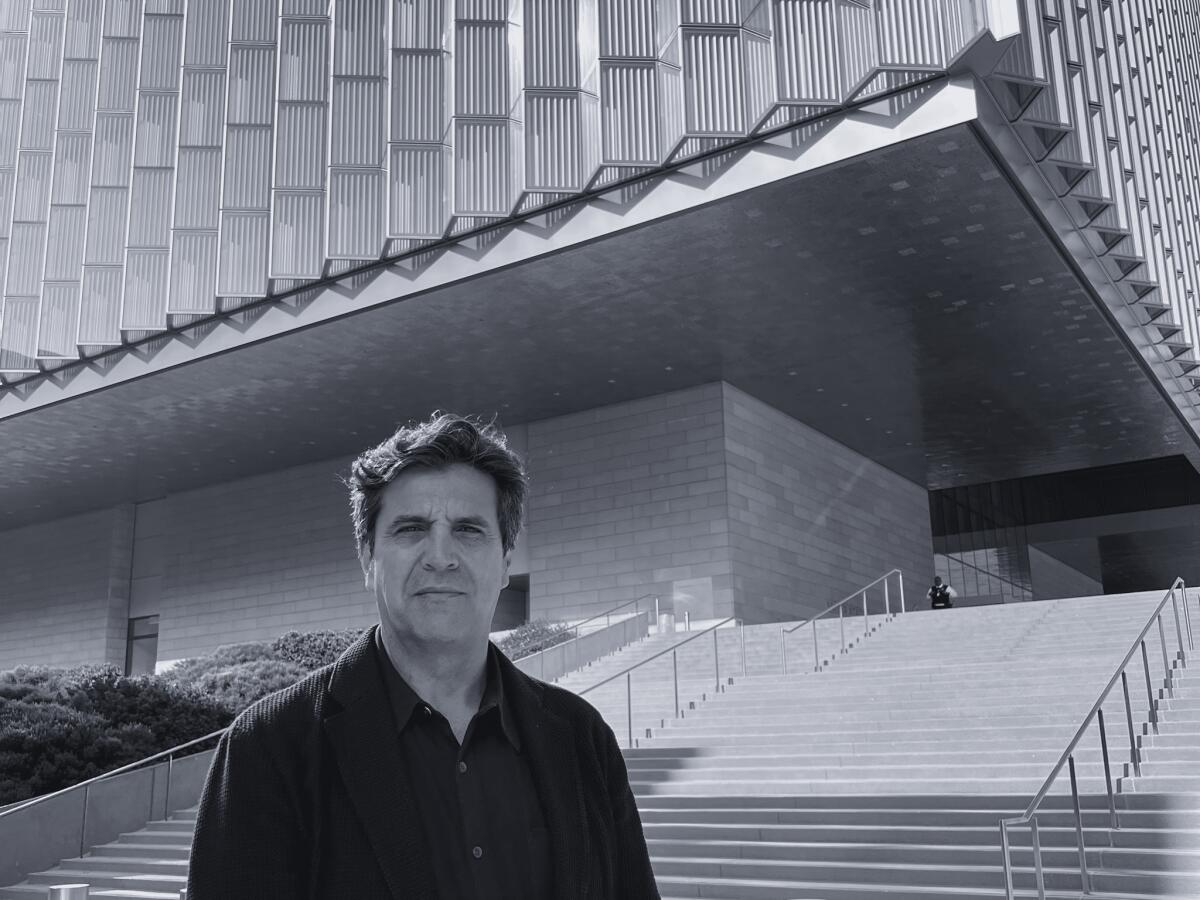
Chances are you’ve been around a building that Palacios helped shape. As a young architect in the ‘80s, he worked under Richard Keating of Skidmore, Owings & Merrill on structures such as the skyline-defining Gas Company Tower in downtown L.A. Now a principal at SOM, Palacios has been part of a team of architects (including Paul Danna, who leads the firm’s L.A. studio), who have given civic spaces greater permeability. For the Long Beach Civic Center City Hall and Port Headquarters, they brought glassy translucence to government functions, and their critically well-received U.S. Courthouse in downtown L.A., with its serrated glass facades and soaring atrium, saturates traditionally impregnable courtrooms in light. The Ecuadorean-born architect says the best buildings rest on collaboration. “Diversity is always richer than single authorship,” he says. “That is a product of thinking of architecture as a piece of art. But it’s both art and science — and very few people can do both.” — C.A.M.
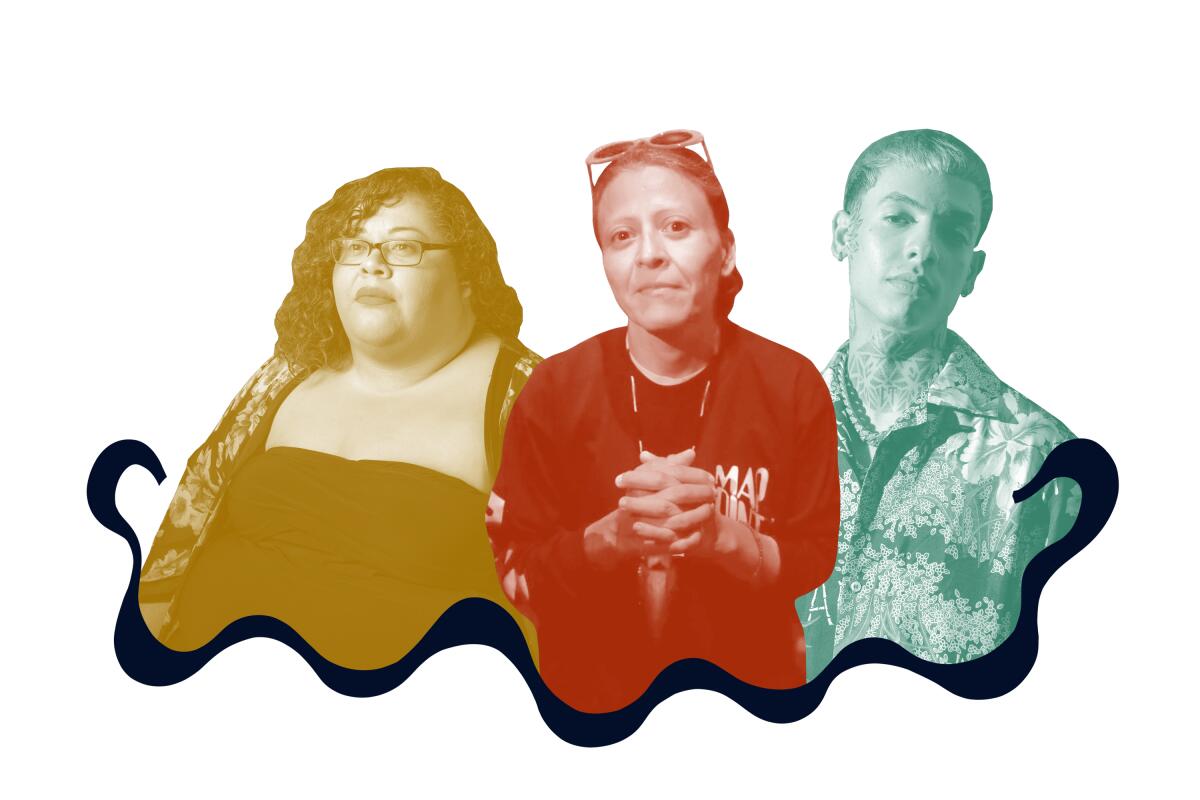
Janicza Bravo, filmmaker
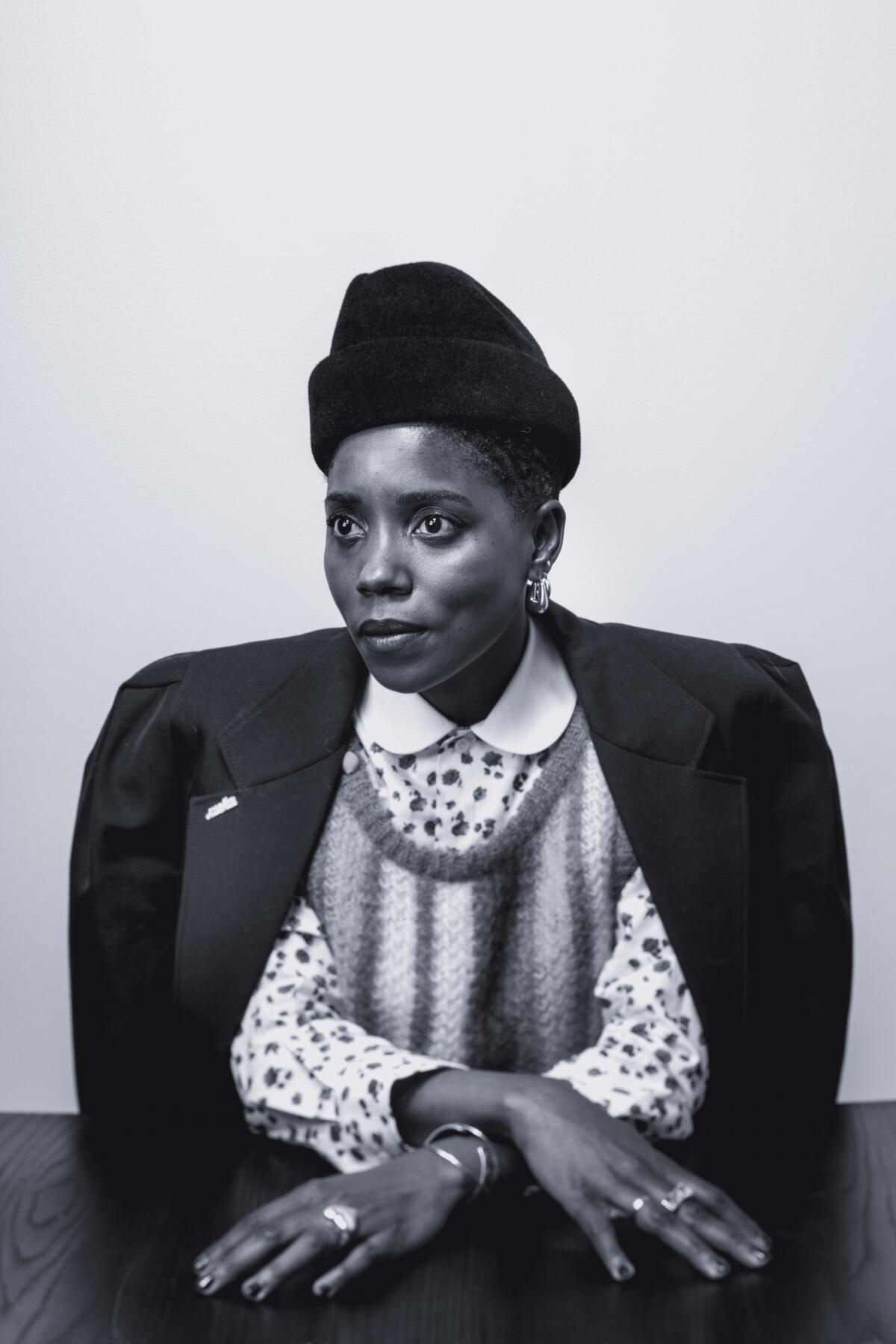
Born in New York City to Panamanian parents and having grown up in Panama and the U.S., filmmaker Bravo’s work captures confusing feelings of dislocation mixed with a strong sense of assured self-possession. Her two features to date, “Lemon” and “Zola,” are both playfully provocative, pushing audiences to confront their own cultural assumptions. By turns very funny and laceratingly insightful, Bravo’s work uses humor to slowly turn up the heat, catching viewers off guard when they realize they are in the boiling waters of the contradictions and paradoxes of modern life. “Zola” in particular feels like something of a landmark, an outrageous adaptation of a viral Twitter thread that bristles with electric energy and observational specificity. Bravo also easily transitions to directing for television, working on shows such as “Atlanta,” “Mrs. America” and “In Treatment,” putting her personal stamp on what could just be for-hire work. — M. Olsen
Francisco Cabrera-Feo, writer/director
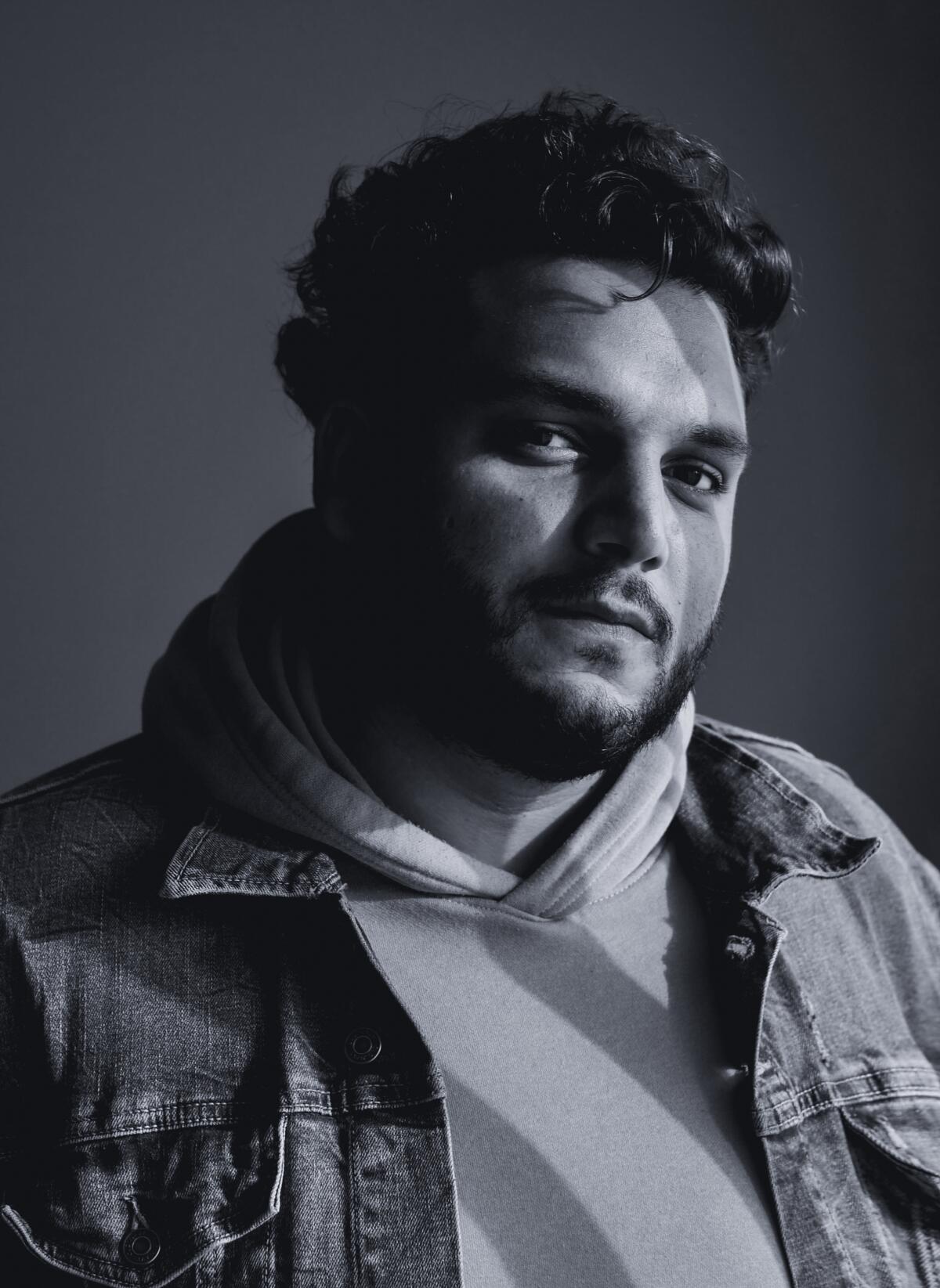
Were Cabrera-Feo an actor, you might say of his television credits, “He has good taste in projects.” As a writer for Netflix’s Boyle Heights-set gentrification dramedy “Gentefied,” HBO Max’s acclaimed coming-of-age comedy “Gordita Chronicles” and the illuminating docuseries about LGBTQ Latino identity “Visions of Us,” though, it might be more accurate to say the projects have good taste in him. Cabrera-Feo, based in Los Angeles, doesn’t just bring his directorial experience, Venezuelan background and bisexual identity to bear in writers rooms, either: He’s one of a cadre of young TV writers of color on Twitter set on demystifying the industry and demanding more (not to mention more thoughtful) representation — and using social media to forge the connections to do it. (There are also thirst tweets, thankfully.) Cabrera-Feo is the ultimate #followfriday pick if you want to see someone on the rise in real time, making his way in a notoriously tough business. And with his next credit, Netflix’s much-anticipated “Blockbuster,” debuting later this fall, the upward trend shows no signs of slowing. — Matt Brennan
Natanael Cano, musician
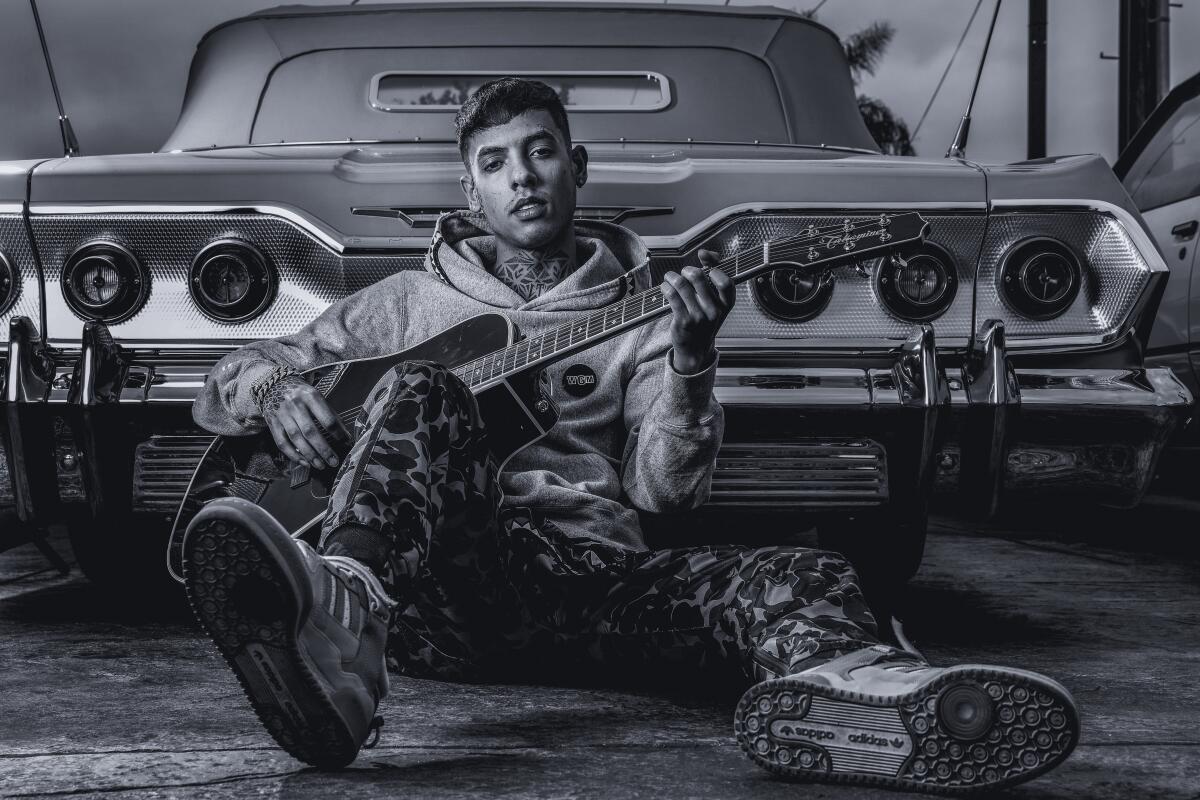
When the 21-year-old Cano cobbled together his first corrido tumbado — a regional Mexican guitar ballad, sung with a hard-nosed, hip-hop bravado — he inadvertently spawned a mass movement of streetwise singer-songwriters in the genre, eager to integrate their love for trap music into their folky heritage sound. As a transplant to Los Angeles from Hermosillo, Mexico, Cano rose up the ranks of the Billboard charts while signed to local label Rancho Humilde — then, one Bad Bunny collab, a Coachella debut and several hit songs later, he launched his own boutique label, Los CT, on which he released his 2022 electro-trap album, “NataKong.” Featuring guest stars Steve Aoki, Junior H and Lil Mosey, the album makes for a formidable declaration of Cano’s independence. — S.E.
Linda Yvette Chávez, showrunner-writer-producer
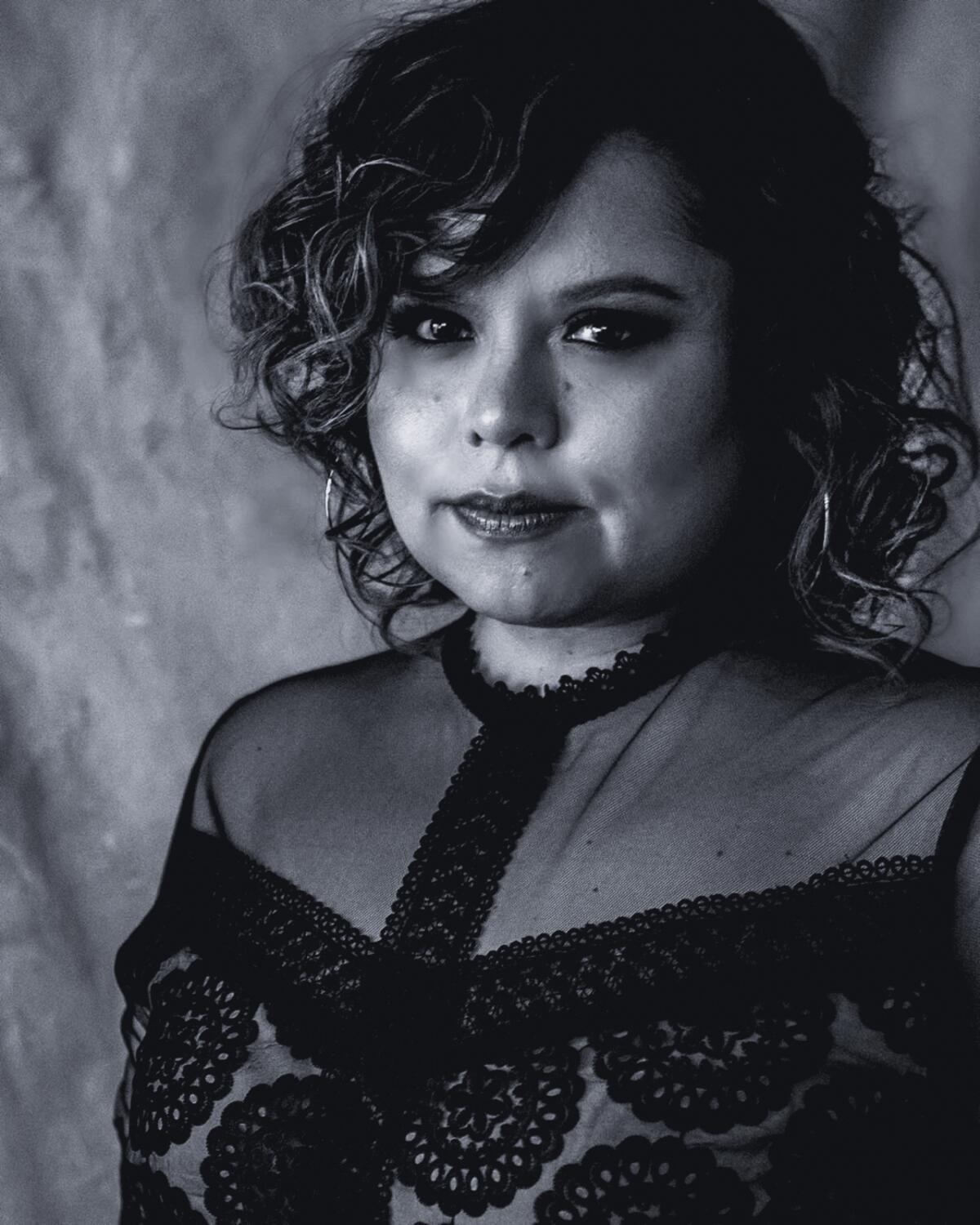
Chávez has already proved herself to be an artist undaunted by the hurdles of a career in show business. Shortly after signing a multiyear overall deal with 20th Television, the executive producer, co-creator and co-showrunner of Netflix’s “Gentefied,” about a multigenerational Mexican American family from East Los Angeles, saw the critically acclaimed series canceled — not without controversy — after just two seasons. But she’s not slowing down in the slightest. Chávez has adapted the bestselling novel “I Am Not Your Perfect Mexican Daughter” for a feature that will mark the directorial debut of America Ferrera, and has also written the screenplay for “Flamin’ Hot,” about Richard Montañez, the Frito Lay janitor who is reputed to have developed Flamin’ Hot Cheetos. The film, directed by Eva Longoria, is set for release in 2023. — Greg Braxton
Culture Clash, performance troupe
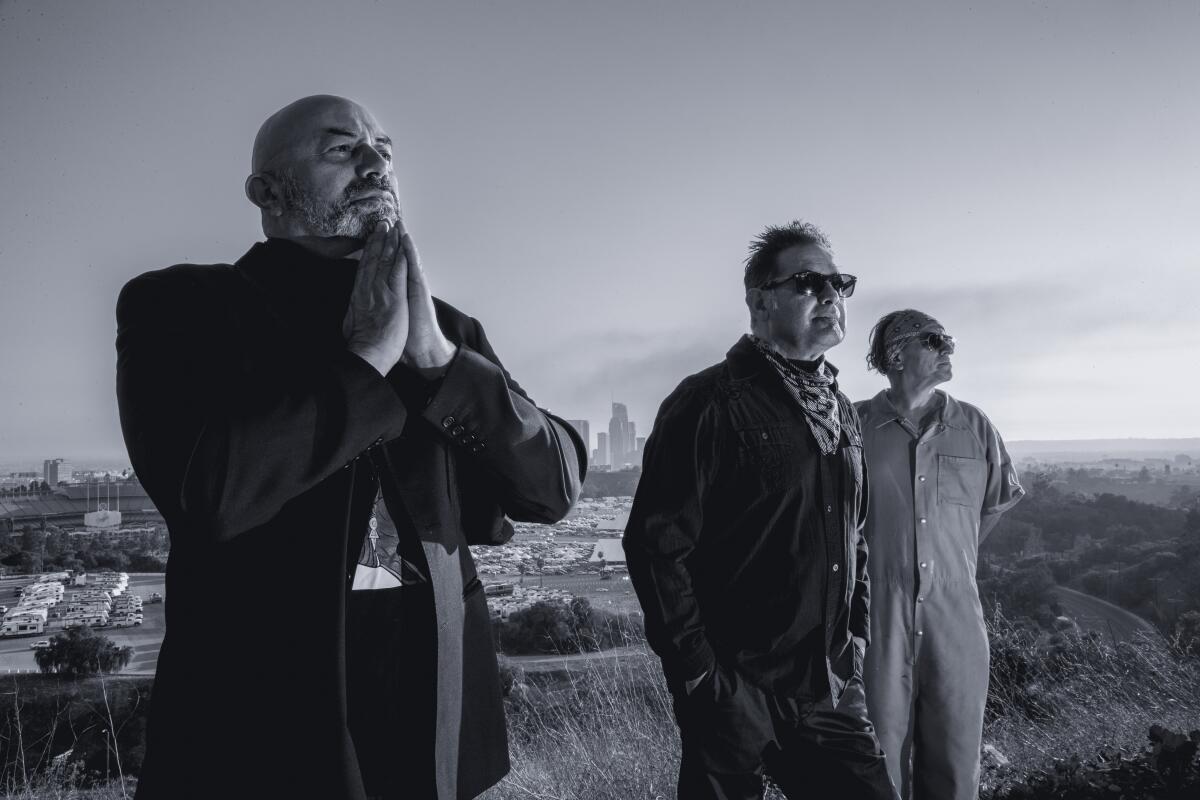
This satirical performance troupe has been dishing out comedy, cutting sociopolitical commentary, art and activism since 1984. Composed of Richard Montoya, Ric Salinas and Herbert Sigüenza, Culture Clash dives deep into issues unique to the experiences of Latinos of all ages, ethnicities, genders, sexual orientations and economic stratas. Never content with surface questions or easy answers, the group is known for presenting difficult — sometimes painful — documentary-based material with humor, tenderness and empathy, including “Chavez Ravine” and “Culture Clash in AmeriCCa.” Culture Clash has evolved over the years, bringing time-worn material with it and updating popular sketches to fit the ethos of current times. Its shows (there have been at least seven at Center Theatre Group alone) teach audiences, again and again, that transformative change is not easily won and that when it comes to social justice, there is much work still to be done. — J.G.
Cristina Ibarra and Alex Rivera, filmmakers
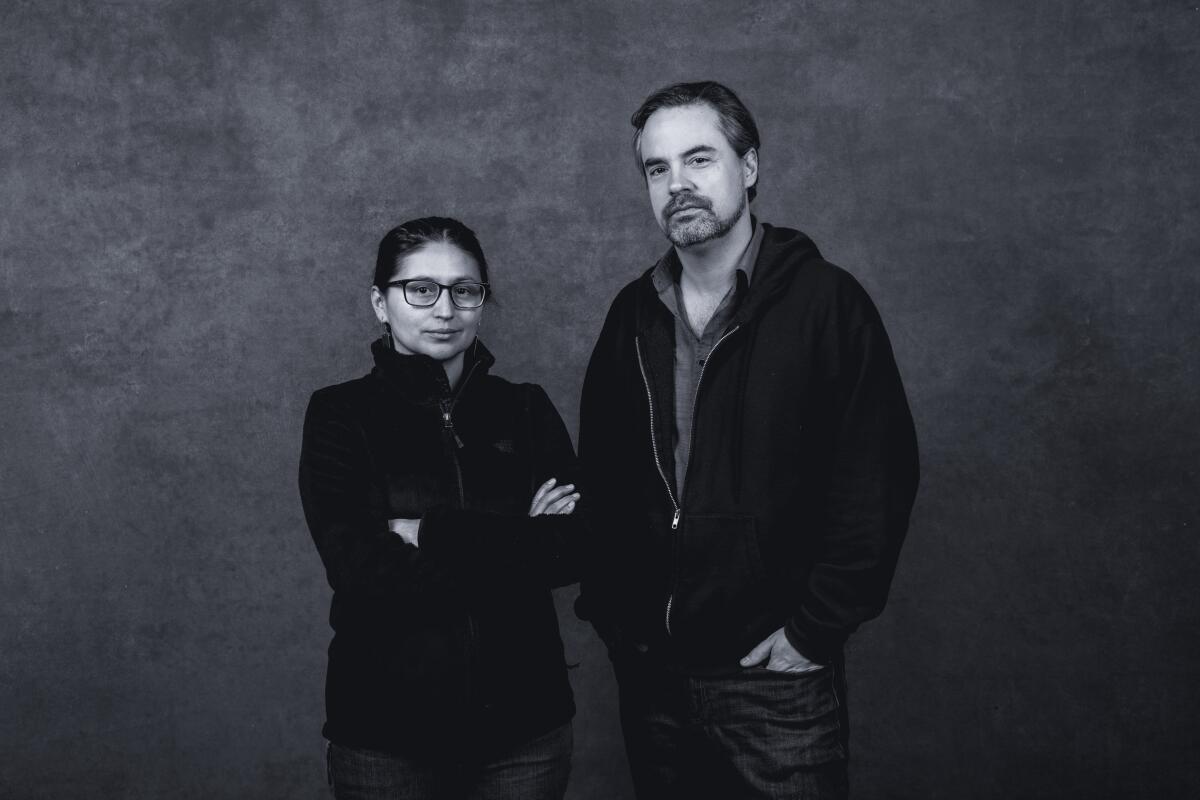
The socially driven works of Sundance award-winning duo Ibarra and Rivera put both filmmakers on the map, even before their eclectic parallel paths converged into partnership behind the camera. El Paso-born-and-raised Ibarra documented contemporary stories anchored along the Texas-Mexico border in her films “Las Marthas” (2014) and “The Last Conquistador” (2008). New York native Rivera made his own debut with the 2008 cyberpunk sci-fi parable “Sleep Dealer,” using genre to explore timely themes of globalization, migration and technology. In 2019, they released their first cinematic collaboration: the documentary-fiction hybrid “The Infiltrators,” about undocumented “Dreamer” activists who infiltrate a Florida Immigration and Customs Enforcement detention center in order to help free others from the inside. The film, which won two prizes at the Sundance Film Festival, has “the energy of a crime thriller crossed with the urgency of a social-issue documentary,” wrote the L.A. Times’ Mark Olsen. In 2021 the Pasadena-based Ibarra and Rivera, who wed in 2018, became the first married couple to each be awarded a MacArthur “genius” grant in the same year, allowing both to continue building their respective canons of independent, activist cinema. — J.Y.
Meztli Projects, artists-activists

The murder of George Floyd may have catalyzed the movement to topple statues of Confederate leaders and Christopher Columbus across the country, but the Los Angeles-based arts and culture collaborative Meztli Projects was way ahead of the curve. The Native- and Indigenous-focused group focuses on “centering Indigeneity into the creative practice of Los Angeles,” and one of its first public activations centered on the 2018 removal of a Columbus statue in L.A.’s Grand Park. For Meztli Projects, the day wasn’t just about Columbus coming down; it was about creating a space for Native and Indigenous community members to come together. Look for more on Meztli Projects in LA Vanguardia later this week. — Eva Recinos
Guadalupe Rosales, artist
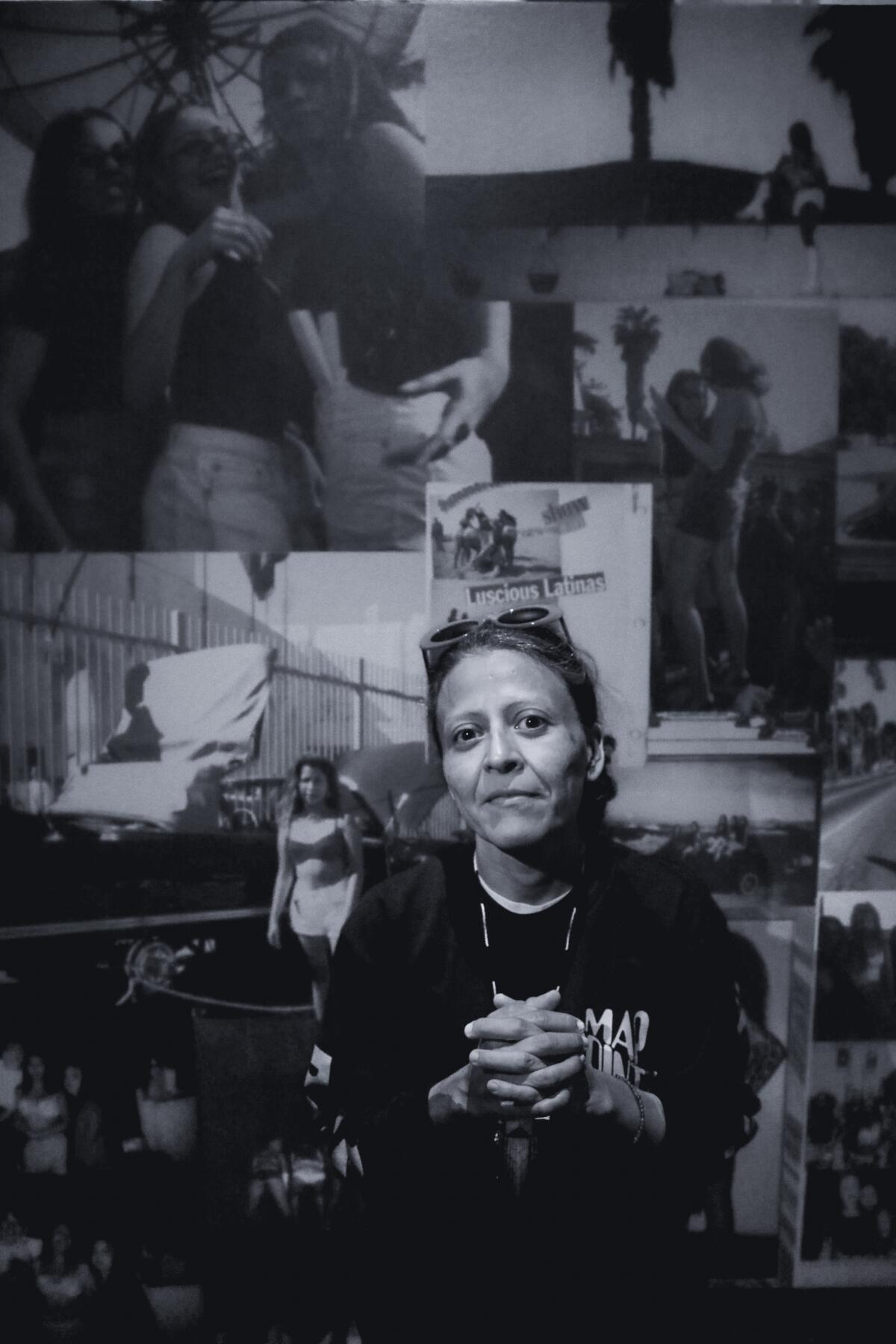
If the SoCal of the ‘90s were depicted as a teenager, the trope would be a sunny blond on a beach. Likely left out of the picture would be the signifiers of the city’s Latino life: Eastside party crews and gauzy “star shots” bearing young Chicanas in architectonic hairdos. Artist Rosales brought those images into view with “Veteranas and Rucas,” her wildly popular Instagram account, launched in 2015, which began as personal reminisce before evolving into influential community archive. That account — currently at 273,000 followers and counting — has inspired many others like it. It has also inspired Rosales’ art. There was a temple-like installation at the Vincent Price Art Museum in 2018 that paid tribute to a cousin lost to gang violence. This year, the Whitney Biennial featured her spare yet elegant photographic chronicles of the L.A. haunts of her youth, shown in the ghostly hours of night. As others sleep, Rosales documents, and expands the ways in which the world sees L.A. — C.A.M.
La Santa Cecilia, musicians
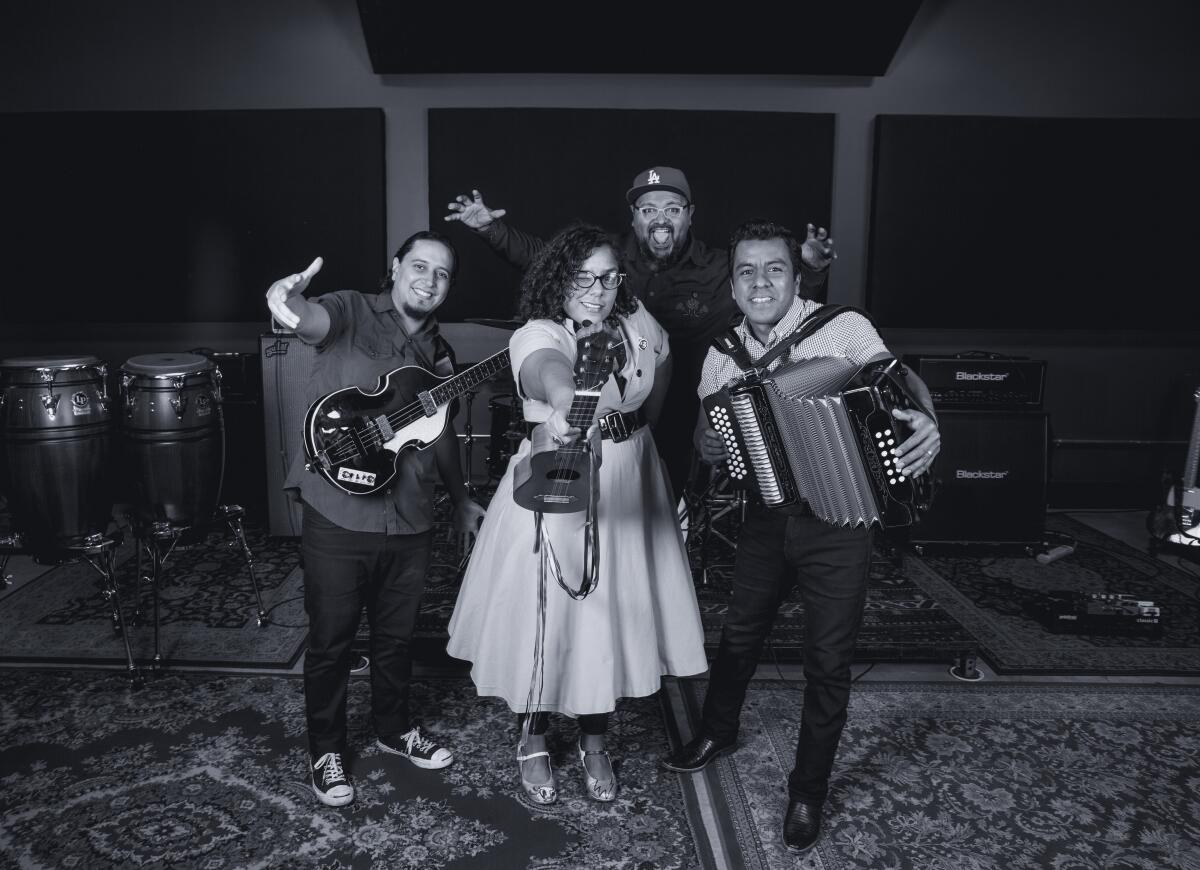
The Grammy-winning quartet La Santa Cecilia may be loud-and-proud Angelenos, but their sound knows no borders. By integrating influences like American wild child Janis Joplin, Afro-Cuban diva Celia Cruz and Chicano rock icons Los Lobos, the pan-Latin group has crafted modern folkloric songs that reflect the finest elements of their multicultural upbringing, fortified by rousing messages of empowerment for immigrants. They first convened in 2007, busking on Olvera Street in downtown Los Angeles. They won a Grammy for Latin rock, urban or alternative recording in 2014, and their music has graced such films as “The Book of Life” and the Oscar-winning “Coco.” This year, La Santa Cecilia will compete at the Latin Grammys, where its 2021 LP “Quiero Verte Feliz” is nominated for cumbia and vallenato album. — S.E.
The Linda Lindas, musicians
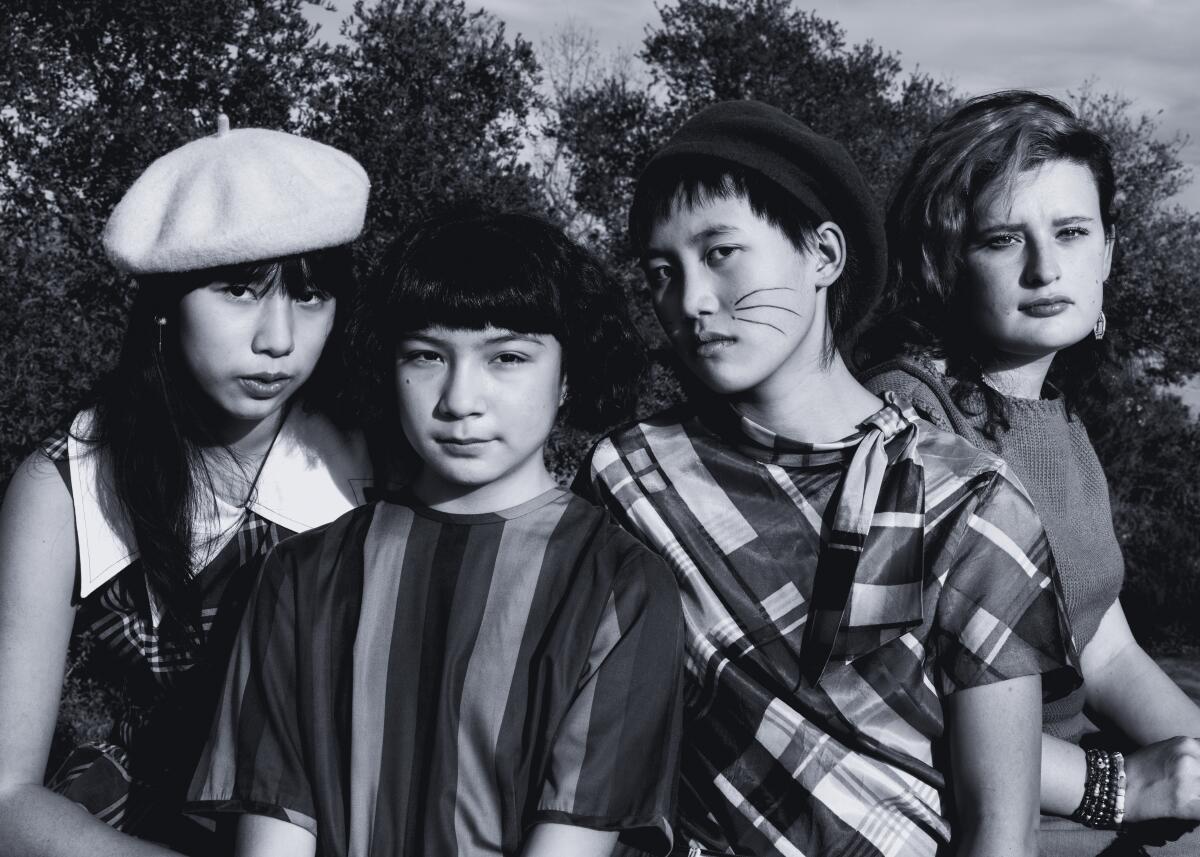
This teenage punk foursome broke out in May 2021 when a video showing the L.A. band performing its protest jam “Racist, Sexist Boy” at a public library in Cypress Park went viral online. (How viral? In 72 hours the clip racked up around 4 million views on Instagram.) A year and a half later, the Linda Lindas — Bela Salazar, 18, Mila de la Garza, 12, and Lucia de la Garza, 15, all of whom identify as Latina, along with 15-year-old Eloise Wong, who’s of Asian descent — have played music festivals and late-night TV, made fans of Flea and Kid Cudi and released their debut LP, the rowdy yet polished “Growing Up,” through the storied SoCal indie label Epitaph. “We can take turns taking the reins,” they sing over a classic three-chord stomp in the title track — a reminder that old tools can find fresh use in the right hands. — Mikael Wood
Mayan Lopez, actor/producer/writer

Lopez is making history with her first major project, NBC’s “Lopez vs. Lopez.” Later this fall, she appears alongside her real-life father, comedian George Lopez, in the first network series starring a Latino father and daughter. Mayan Lopez is also a producer on the series, which is inspired by her strained relationship with her famous pops, returning to prime time 15 years after “The George Lopez Show.” Angered by his infidelity, she did not speak to her father for several years after her parents divorced in 2011, but the parent/child pair started to reconnect in the past few years, and Mayan Lopez has said the series will explore some of the emotional issues that she and her father are still grappling with. Not too shabby for one’s first major acting role. — G.B.
Adrian Molina, animator/filmmaker
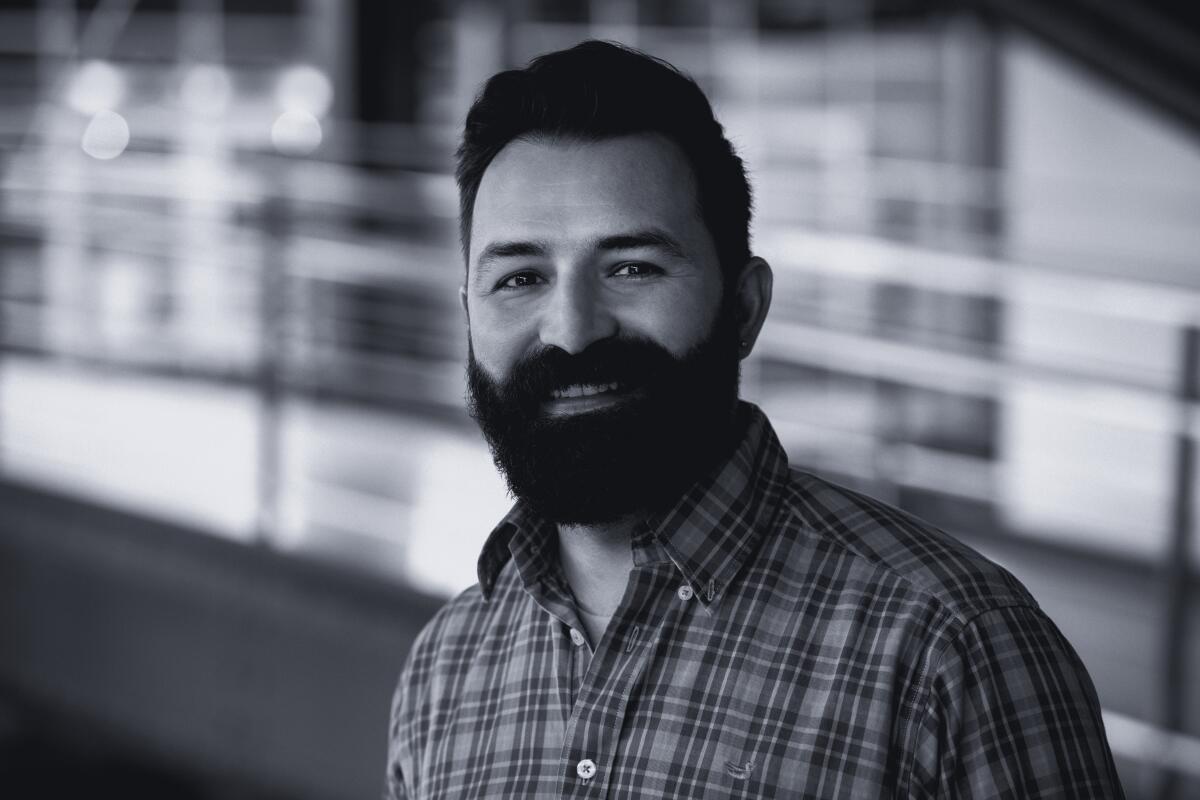
A second-generation Mexican American who grew up in Northern California, Molina spent years working his way up the ladder at Pixar before breaking into the big leagues by co-directing 2017’s Day of the Dead-inspired smash “Coco.” Grossing more than $800 million worldwide, “Coco” proved a soothing balm for Latino audiences and offered Molina a chance to explore his own family heritage. “I wanted the characters to reflect the diversity of the people I knew growing up and the people we met in Mexico,” he told The Times in 2018. With his next Pixar project “Elio,” slated for release in 2024, Molina turns his gaze to the stars for his first solo directing effort with the story of an 11-year-old boy who accidentally becomes the intergalactic ambassador for planet Earth. — J.R.
Dailyn Rodriguez, showrunner
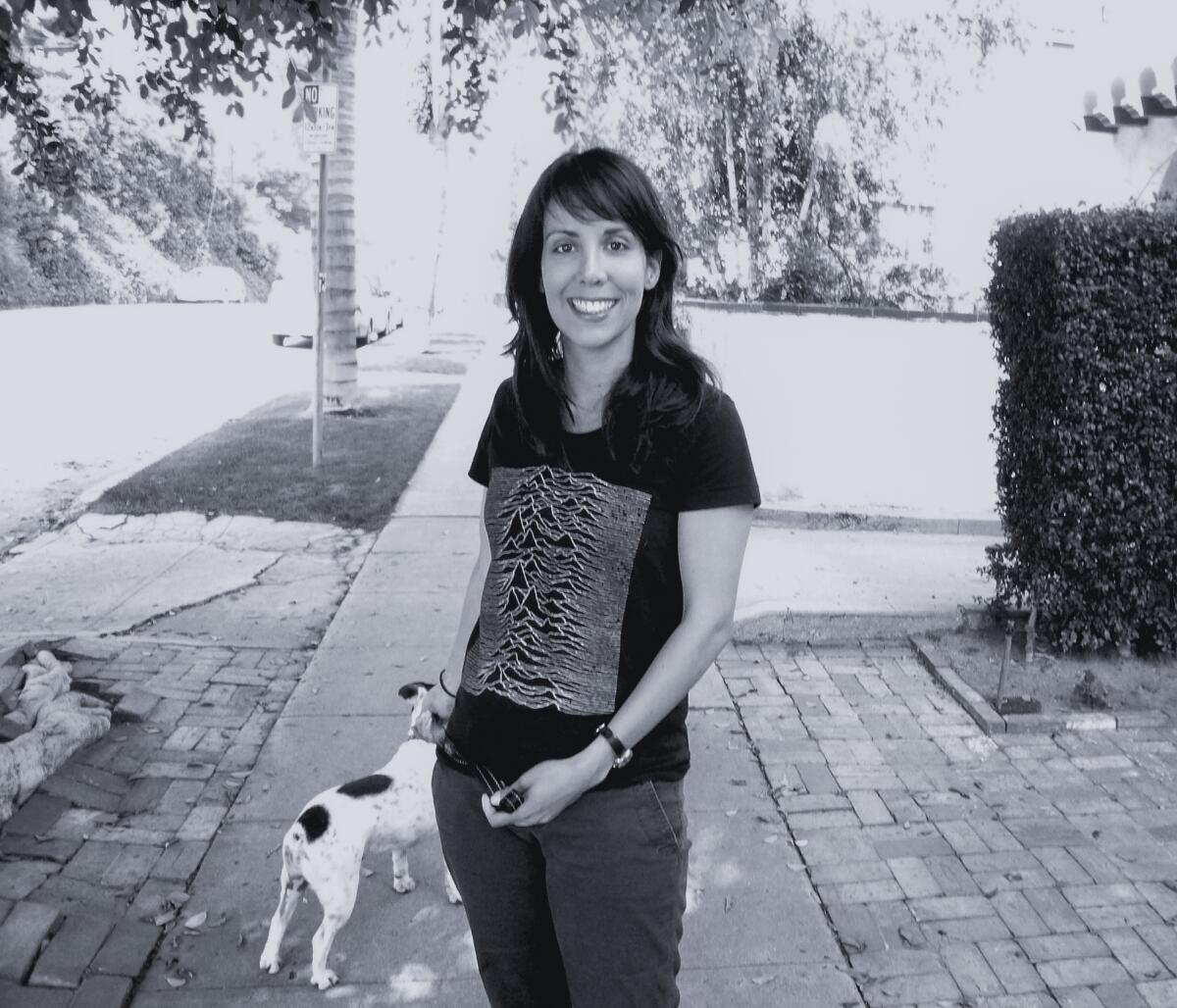
Rodriguez has been described as a “unicorn.” Best known as one of the showrunners and executive producers for the latter seasons of “Queen of the South,” Rodriguez is an experienced writer who worked her way up through the television ranks — a path notoriously difficult for Latinas and other writers of color, who have historically been overlooked for promotions even after getting staffed. Born to Cuban immigrant parents in the Washington Heights neighborhood of New York, she grew up in New Jersey before attending New York University’s Tisch School of the Arts. Her dream of working in TV led to Rodriguez’s move to Los Angeles for a writing fellowship through Walt Disney Studios, which helped her land her first TV job on “George Lopez.” Rodriguez has been frank about Hollywood’s shortcomings when it comes to Latino representation and the limited (and often stereotypical) tropes and stories that make it to the screen. So even within the framework of a cartel story, Rodriguez helped steer “Queen of the South” — about a Mexican woman who builds her own drug empire — into a nuanced series that explores its characters’ humanity as well as the systemic issues that allow the black market to thrive. Most recently, Rodriguez has joined “The Lincoln Lawyer” Season 2 as co-showrunner and executive producer. — Tracy Brown
Yesika Salgado, poet influencer
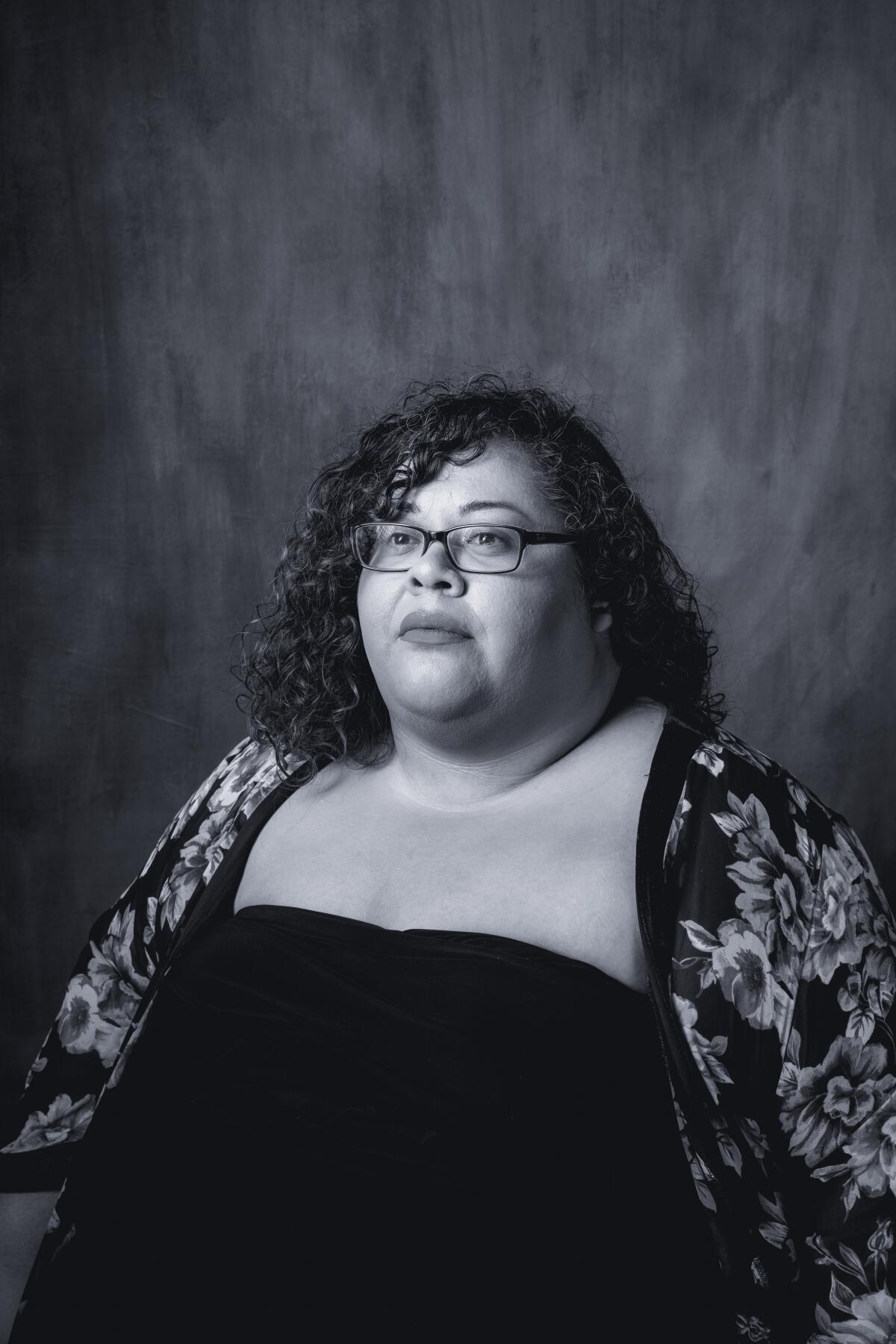
“Fat, Fly and Brown.” That’s how poet Salgado describes herself. The Silver Lake-raised Salvadoreña is among the most beloved poets on Instagram, where she posts affirmations, poems and screenshots calling out toxic masculinity for her 145,000 followers, mostly Latina millennials, whom she lovingly dubs her “mangos.” A two-time finalist for the National Poetry Slam and winner of the 2020 International Latino Book Award in poetry, Salgado brings body positivity and brown-girl love to her followers and work. She is the author of three best-selling poetry collections — “Corazón,” “Tesoro” and “Hermosa” — focused on love, family, culture, the city that raised her and her “fat brown body.” With the Latina feminist poetry collective Chingona Fire, Salgado helped create visibility and safe spaces for women of color to perform their work across L.A. “Yesika created a lane that did not exist, paved with a voice which guides her readers through winding familial and personal journeys from El Salvador to Los Angeles and back,” said Mala Muñoz, writer and co-founder of Locatora Productions. “[Her] work fills giant holes on shelves, and her words fill readers with a new appreciation for themselves and their own depth.” — D.P.
Snow Tha Product, rap artist

To freestyle in one language is already a feat — but to spit bars in two? Welcome to the breakneck bilingual wordplay of L.A.-based rapper Snow Tha Product. Born into a family of mariachi singers in San Jose, the queer Chicana firebrand, whose real name is Claudia Feliciano, turned to rap to blaze her own musical path. In 2016 she won the MTV Video Music Award for “Best Fight Against the System,” thanks to her feature in “Immigrants (We Get the Job Done)” from Lin-Manuel Miranda’s “The Hamilton Mixtape.” Then, in 2021, she became a Latin Grammy-nominated artist for her hip-hop-gone-house collaboration with Argentine producer Bizarrap, “BZRP Music Session #39,” in which she boasts of her prowess with the ladies and even shouts out her spiritual forefathers, norteño rockers Los Tigres Del Norte. Released Oct. 21, her new album, “To Anywhere,” presents a brilliant fusion of trap, reggaeton and R&B sounds. Although some may remember her as the gangster Lil Traviesa on “Queen of the South,” the English-language analog to telenovela “Reina del Sur,” Angelenos know her as “la Mexicana con tremendo flow.” — S.E.
Spanish Aquí Presents, podcaster
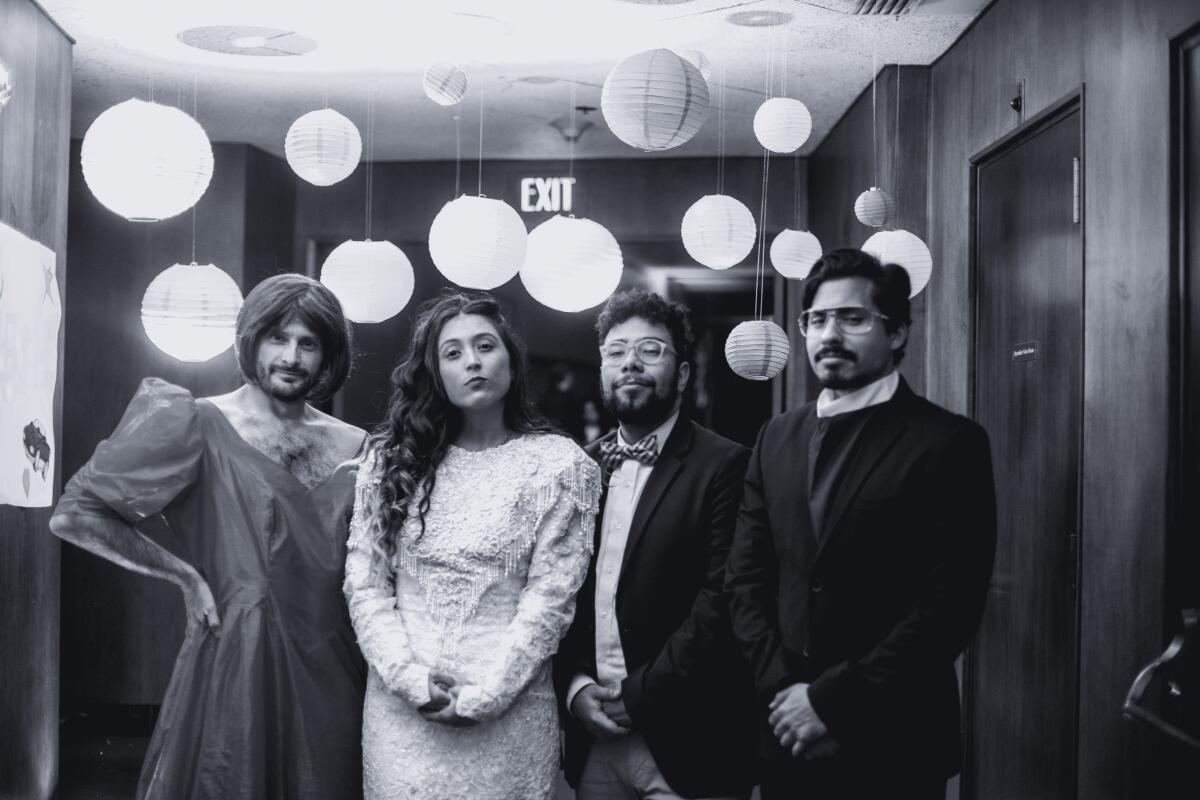
For the last five years, Spanish Aquí Presents has put its own comedic spin on all things Latinx for audiences in L.A. and beyond. Featuring members Tony Rodriguez, Carlos Santos, Raiza Licea and Oscar Montoya, the group is known for bringing plenty of hilarious bilingual banter to the Earwolf Podcast Network. Before ever turning on its microphones, SAP started as an improv troupe in 2018, packing in years of sold-out shows at L.A.’s famous Upright Citizens Brigade Theater. Blending pop culture, politics, trending topics, guest interviews and improv, the show’s format makes it feel like you’re watching them perform at one of their improv shows. Sadly, the group announced in late September that the current podcast would be shutting down for the sake of pursuing other SAP projects and of course, more great opportunities for its hosts. Since starting the show, all of their profiles continue to grow thanks to the visibility of Santos, who became a lead cast member on the Netflix hit show “Gentefied,” and Montoya’s recent role on the 2022 HBO Max series “Minx.” Despite the Hollywood success of this crew, SAP is still for the people. You can catch the group doing live shows onstage at the Paramount in Boyle Heights on the first Friday of every month. — Nate Jackson
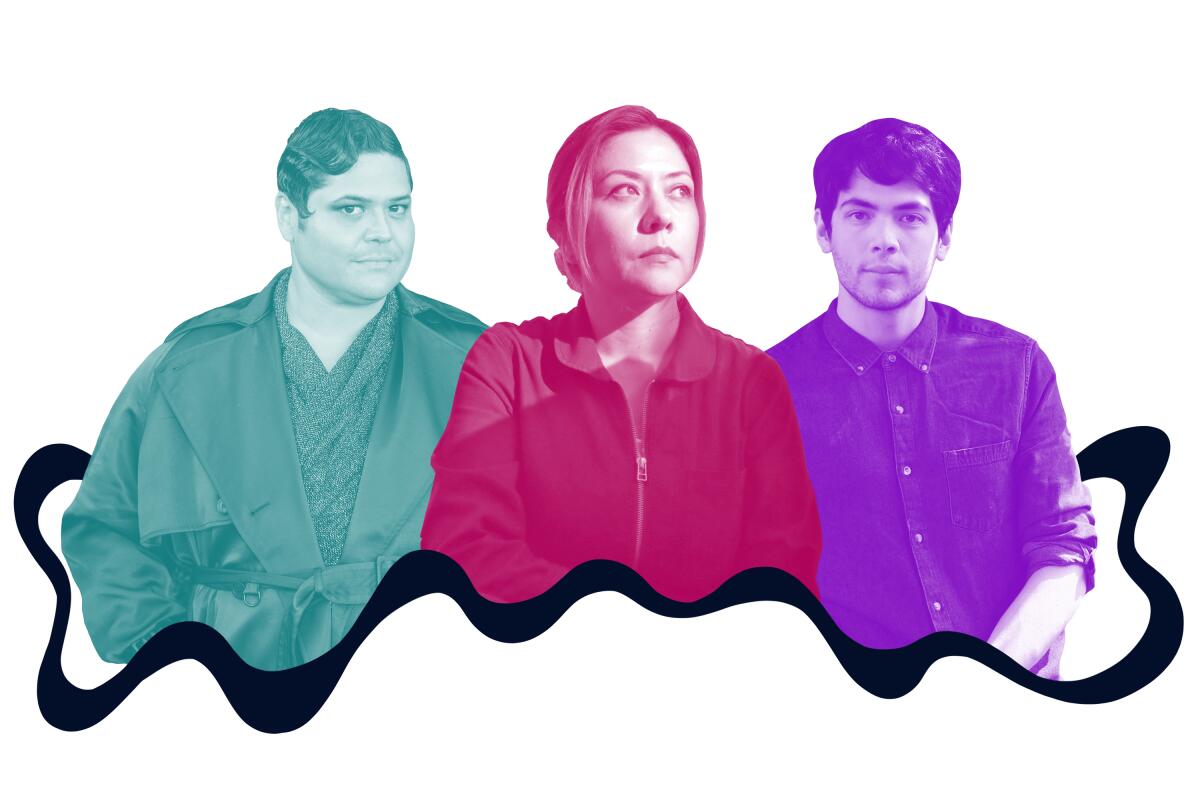
Mike Alfaro, Millennial Lotería creator

A few years ago, Alfaro was looking through cards for Lotería — the Bingo-style Mexican card game — and thought the folksy, decades-old imagery from the classic Don Clemente edition seemed outdated. Versions of the game have been around for centuries, and Alfaro, who emigrated from Guatemala and took up marketing work in Mar Vista, decided to give it a 21st-century spin. Alfaro’s contemporary take, Millennial Lotería, launched from his Instagram account in 2018, riffed on old-fashioned cards like “La Calavera” and “El Soldado” with ironic updated titles “El Gluten” (illustrated with a skull) and “El Internship” (soldier in a helmet holding a coffee pot). Alfaro “created this project to break outdated immigrant stereotypes and to represent a new generation of Latinos in a modern world,” he writes on his website, and Millennial Lotería remains the top-selling item in the trading-card game category on Amazon today. Recently, Alfaro has been putting out other versions (Gen Z Lotería has cards like “El ASMR” and “El Apology Video”) and cutting comedy videos on TikTok at @millennialloteria. — Matt Pearce
Omar Apollo, musician
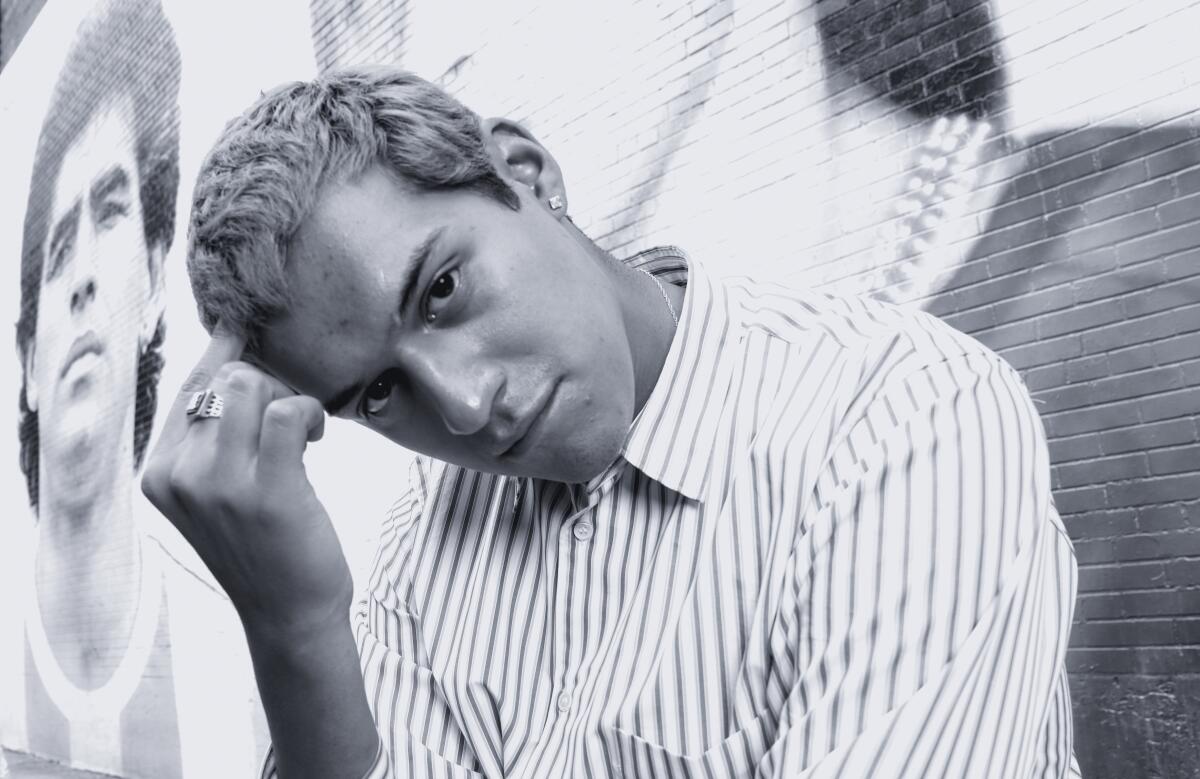
After blending funk, soul, pop and R&B across three EPs, Apollo took listeners on a dreamy ride on his debut album. “Ivory” finds Apollo, an L.A. transplant by way of Indiana, stretching his talents while singing of his love for another man, largely crooning in English but also connecting on a traditional Mexican ballad in “En El Olvido.” The first edition of the album was scrapped, and Apollo had to postpone a scheduled tour this spring to finish the final version. If you want to know if it worked, just look to “Evergreen (You Didn’t Deserve Me at All),” a dusty ode to a broken love that went viral on TikTok and has since become his first Billboard Hot 100 hit. Still need more proof? Ask Tyler, the Creator, who loved the single “Tamagotchi” so much he hopped into Apollo’s DMs to bully him into giving the “banger” the promotion it deserved. — K.D.
Adria Arjona, actor
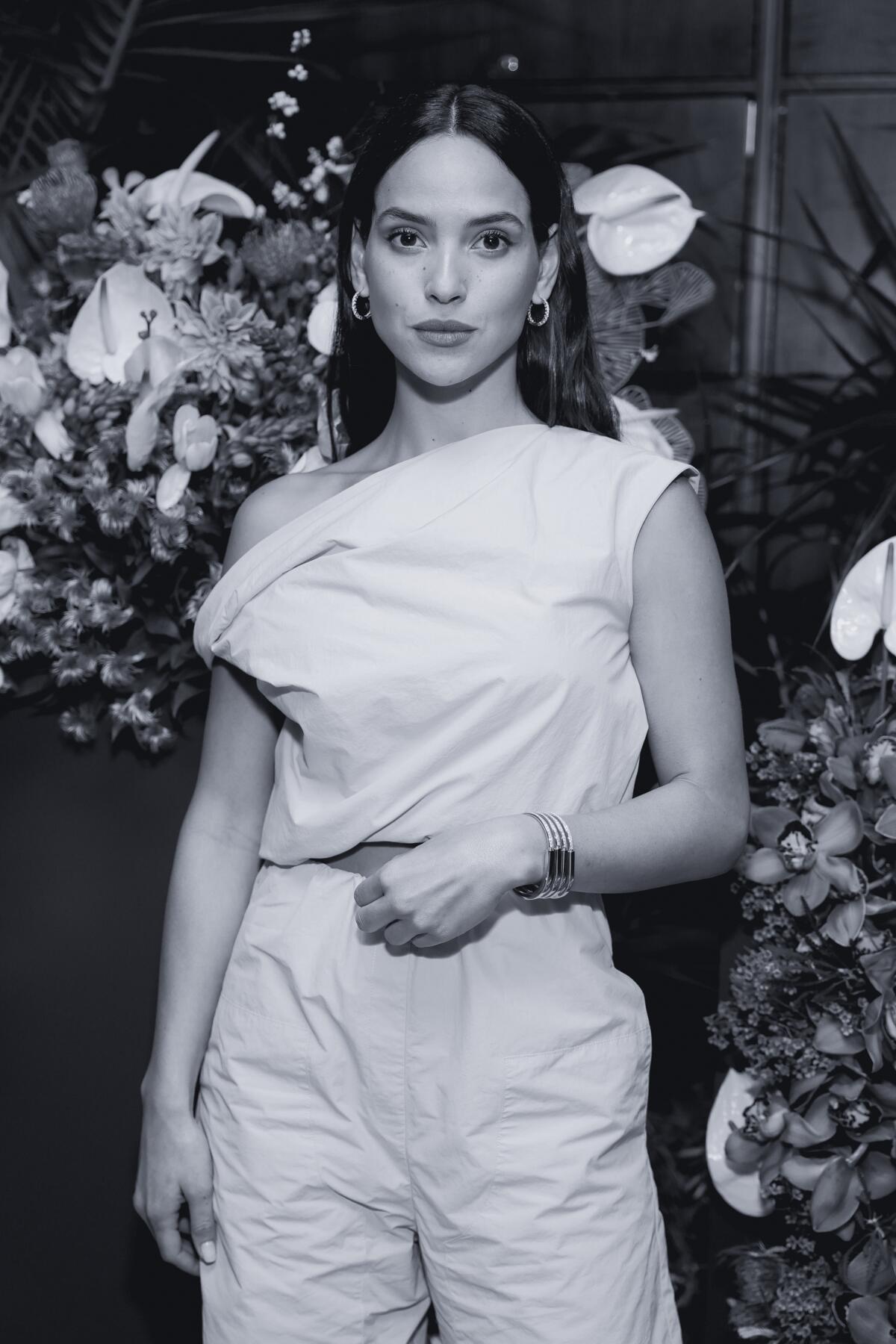
Arjona has been hard to miss lately, with appearances in “Morbius,” “Father of the Bride,” “Irma Vep” and now “Andor” this year alone. She has three more projects already queued up, including working with director Richard Linklater and with Zoë Kravitz in her directorial debut. The Puerto Rican-born daughter of Guatemalan recording star Ricardo Arjona is a dedicated environmentalist who grew up in Mexico City. She also lived in Miami and New York City before moving to L.A. and making splashes as Dorothy in “Emerald City” (2017) and in prominent roles in “Good Omens,” “Sweet Girl” and “6 Underground.” — Michael Ordoña
Melissa Barrera, actor

Barrera burst onto the U.S. entertainment scene as co-lead Vanessa in the film adaptation of Lin-Manuel Miranda’s “In the Heights” (2021). Before that, she had made literally hundreds of episodes of the telenovelas “Siempre tuya Acapulco,” “Tanto Amor” and others before appearing in Netflix’s first Spanish-language series, “Club de Cuervos.” She has since become the face of the reborn “Scream” franchise and recently turned in a gritty starring turn in Netflix’s survival drama miniseries “Keep Breathing.” She hit the festival circuit as the lead in Benjamin Millepied’s buzzy film version of “Carmen” and produced her next vehicle, the supernatural thriller “Bed Rest.” The Mexican-native singer-dancer-actress even had a Top 10 single in her home country in 2013 (“Mamma María,” as part of the duo Melissa y Sebastian). — M. Ordoña
Benjamin Benne, playwright
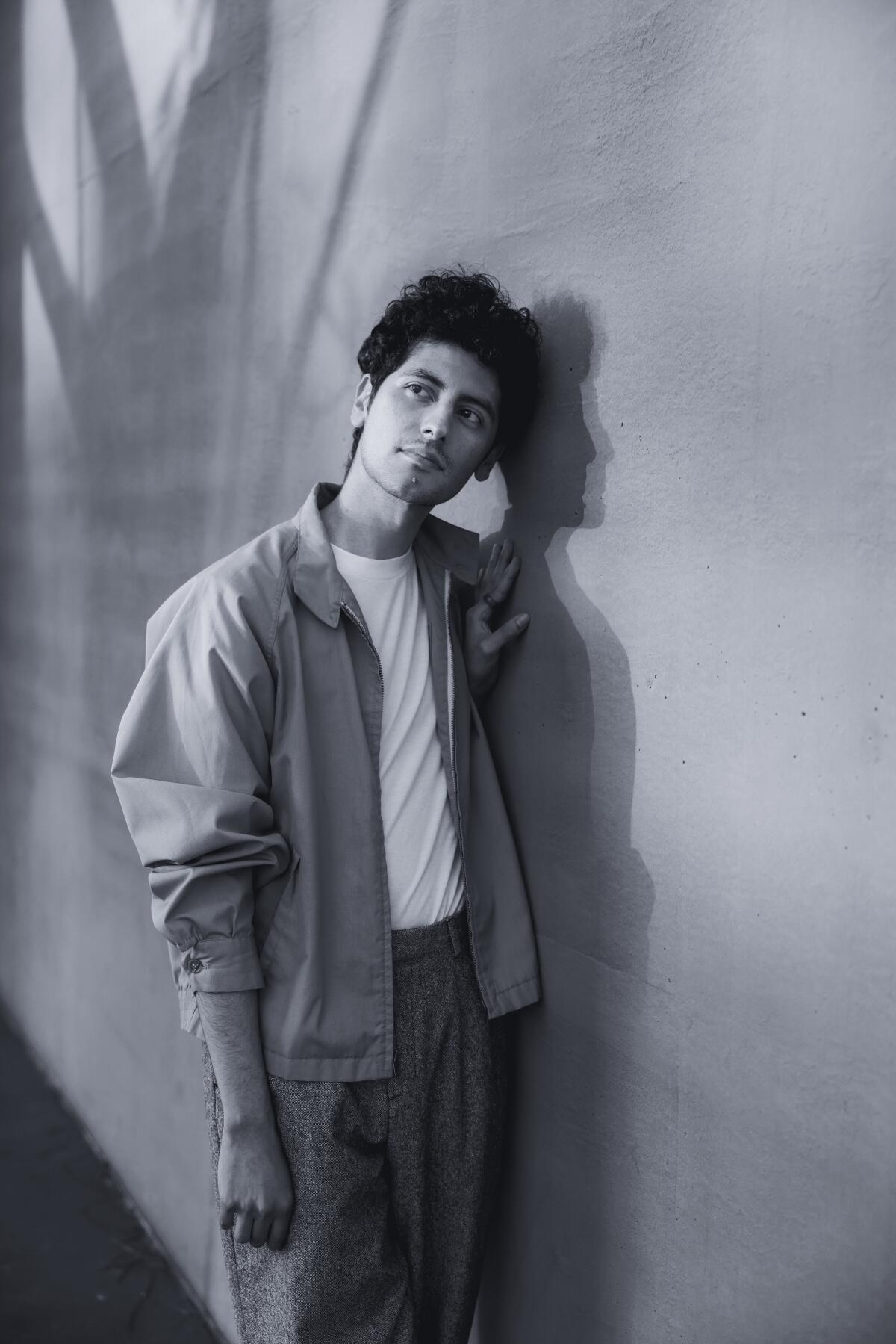
Before he even graduated from the David Geffen School of Drama at Yale University, Benne was already the talk of Center Theatre Group. Associate artistic director Luis Alfaro could barely contain his excitement with this talent, born and raised in L.A. County and honing his craft at the same institution that produced such game-changing dramatists as Tarell Alvin McCraney and Jeremy O. Harris. In March, Benne’s play “Alma” had its world premiere at the Kirk Douglas Theatre. Set in a cramped La Puente apartment, the play is a bilingual duologue between Alma, an undocumented immigrant, and Angel, her American-born daughter. Winner of the 2019 National Latinx Playwriting Award, “Alma” offers a granular look at how the American dream is falling further out of reach in a nation increasingly willing to sacrifice its storied ideals for partisan warfare. Alfaro said that CTG should be investing in playwrights whose major awards are still ahead of them. Benne is a shrewd bet for the future. — C.M.
Diana Burbano, playwright
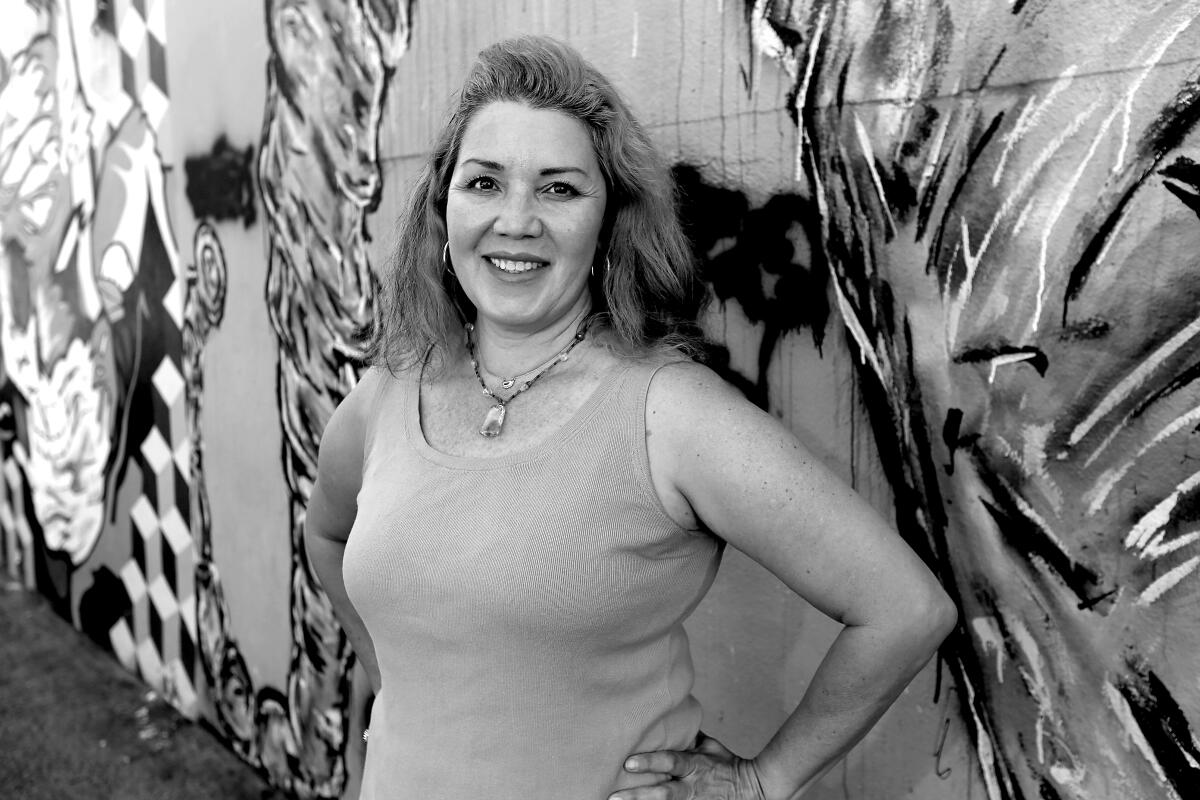
Burbano’s first published play, “Ghosts of Bogotá,” premiered in 2020. It follows three Americanized siblings as they journey back to Colombia to clean out their grandfather’s apartment after his death. It’s a troubling mission; their grandfather sexually abused them. The siblings grapple with their family history as the ghosts of their grandfather and grandmother — who failed to protect the kids — appear before them. “How do we forgive her? And do we forgive him? I mean, do we have that capacity?” Burbano asks. “We have this tradition of a big matriarchy. And yet we keep all these secrets, male secrets, really painful secrets.” Burbano says her family pushed down uncomfortable truths while doing its best to fit in in the States, and she would eventually turn to her art as a way to lay those truths bare. “As a Latinx woman, I want to show people that you’re allowed to be really angry, and you can be messy, and you can be not a nice person,” Burbano says. “And that’s totally fine.” Look for more on Burbano in LA Vanguardia later this week. — J.G.
Diego Calva, actor
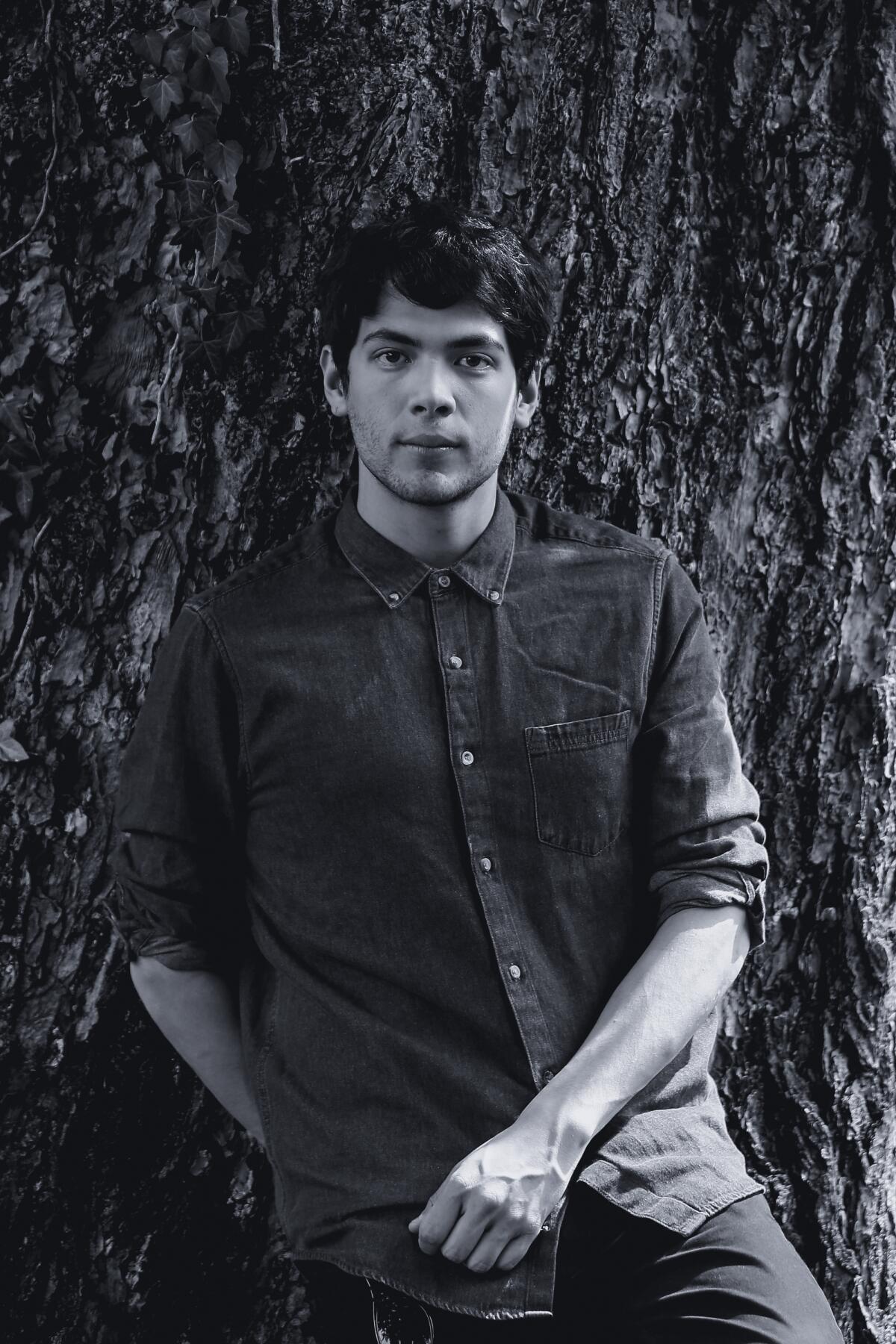
When the trailer dropped for Damien Chazelle’s upcoming Golden Age of Hollywood extravaganza “Babylon,” we glimpsed a host of familiar stars — Margot Robbie, Brad Pitt, Jean Smart — and one face we didn’t know, a young Mexican seen snorting coke with Robbie and propping up Pitt the morning after a bender. The actor is Calva and he’s playing Manny Torres, son of Mexican immigrants, aspiring actor, an outsider looking for a way in. The Mexico City-based Calva won the role after spending a year sending Chazelle videos of himself in different scenes. Chazelle recommended studying Al Pacino, and when it came time for Calva’s in-person read with Robbie, the director played the theme from “The Godfather” to help him get into character. Now after a steady career working in Mexican and Argentine films and a key role in “Narcos: Mexico,” Calva has a movie that might do for him what “The Godfather” did for Pacino: make him a star. — Glenn Whipp
Ivan Cornejo, musician
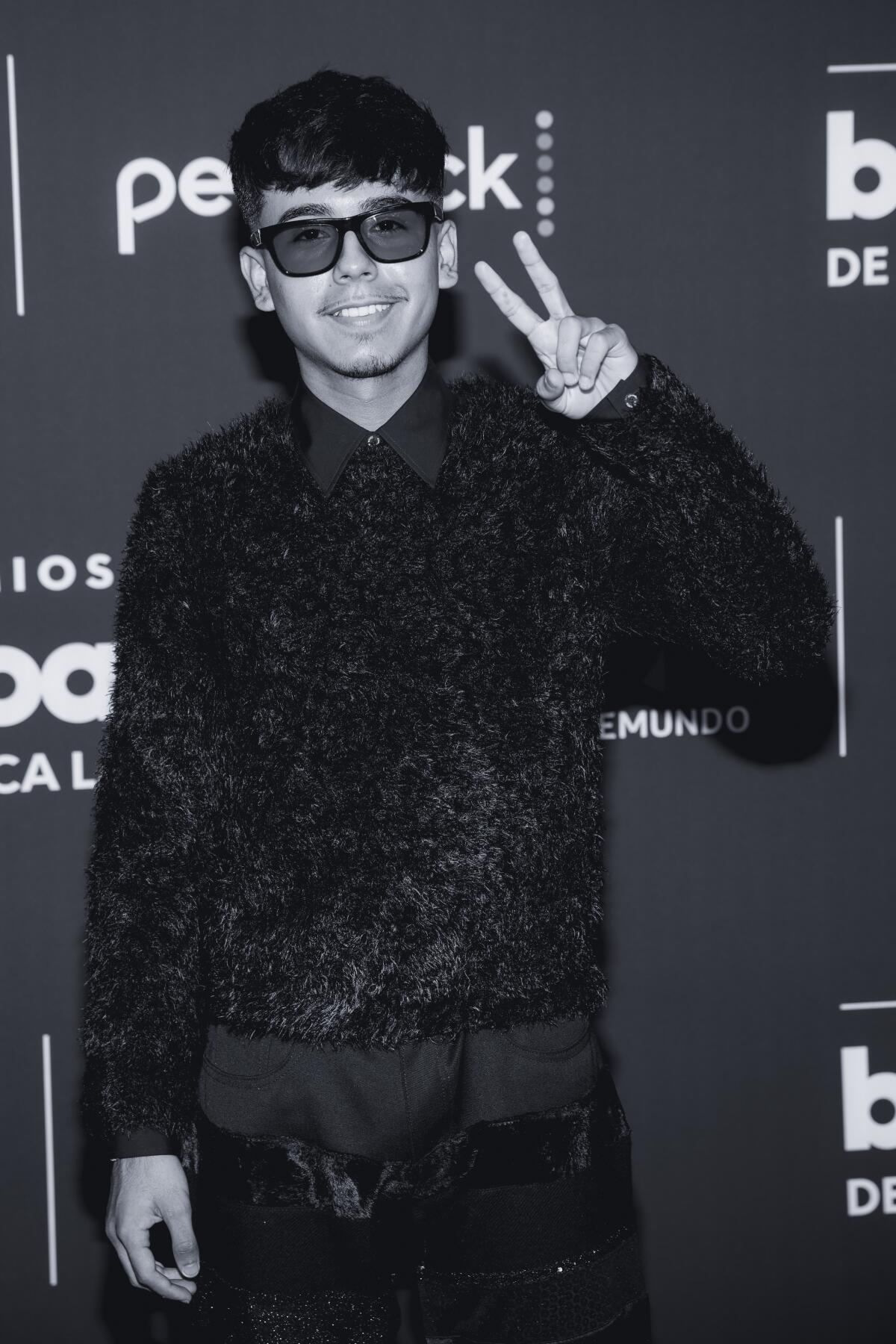
Named new artist of the year at the 2022 Billboard Latin Music Awards, 18-year-old Riverside native Cornejo is haunting regional Mexican music with the gothic romance of his “sad sierreño” ballads. At the age of 8, he learned guitar at home via YouTube tutorials, starting with Ritchie Valens’ 1958 classic “La Bamba.” By 17, he’d released his moody 2021 debut “Alma Vacía,” or “Empty Soul,” which landed him at No. 2 on the Billboard Regional Mexican Albums chart. He raised the stakes in 2022 with his equally melancholic sophomore album, “Dañado,” or “Damaged,” which resulted in his first No. 1 on the same chart. — S.E.
Chris Estrada, comic
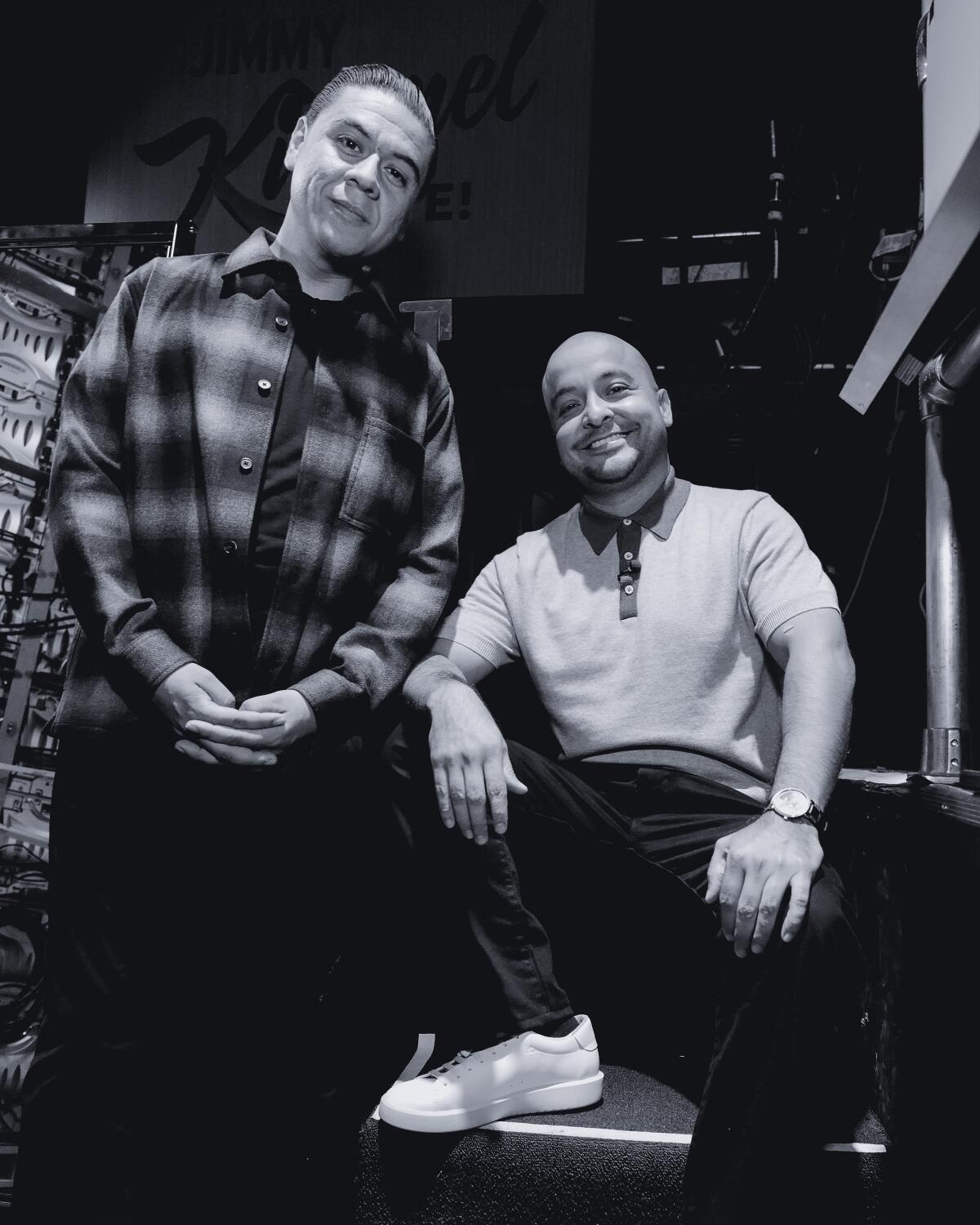
Mexican American comic Estrada is best known for his starring role as Julio Lopez on Hulu’s “This Fool,” of which he serves as writer, star, co-creator and executive producer. Produced by Fred Armisen, the loosely autobiographical series is based on Estrada’s upbringing in South L.A. juggling a burgeoning comedy career while battling codependency within his family. Estrada was voted one of L.A.‘s “comedians to watch” by Time Out L.A. in 2018 and was an Up Next performer at Comedy Central’s Clusterfest the following year. He’s also appeared in the satiric Comedy Central series “Corporate” and HBO’s Latino stand-up special “Entre Nos.” — Sonaiya Kelley
Carribean Fragoza, writer-curator
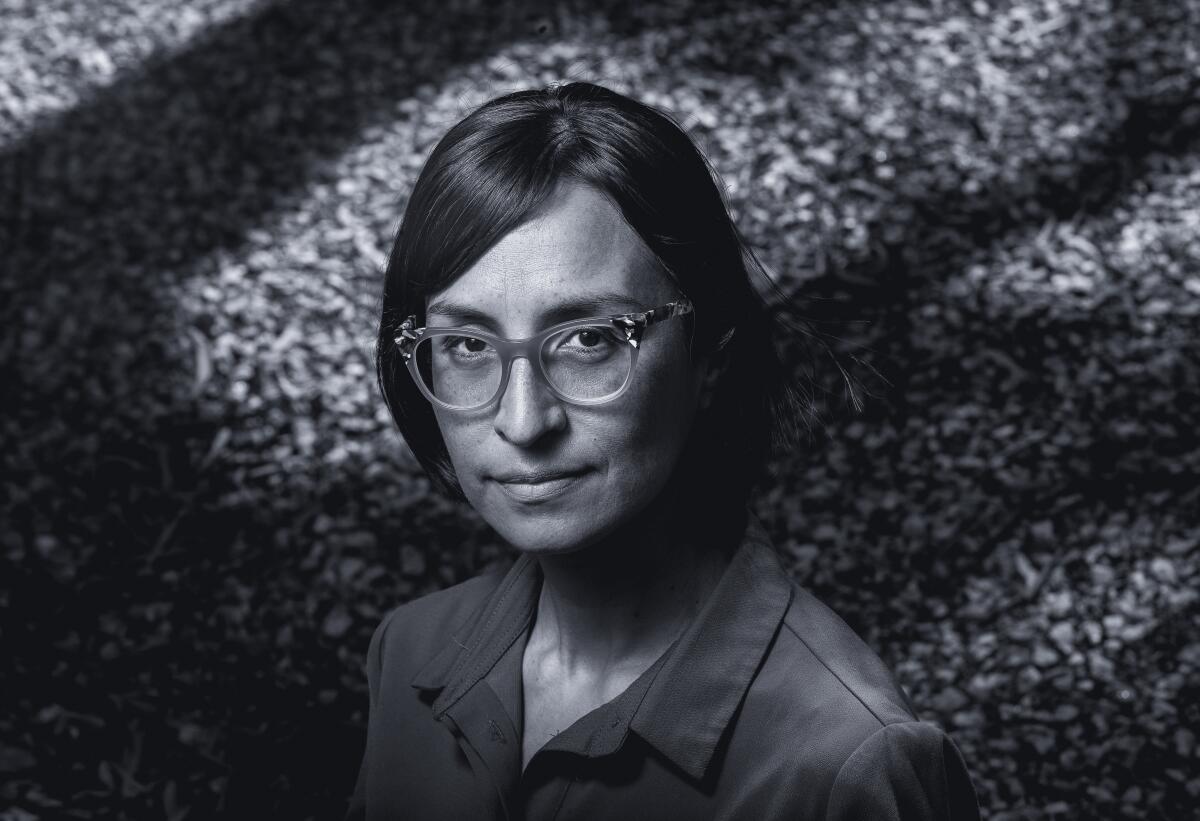
Fragoza has been reinventing Latino tropes one project at a time. In her work as an author, editor, journalist and artist, she’s dedicated to telling stories ignored in dominant historical narratives. Just last year, her debut short-story collection, “Eat the Mouth That Feeds You,” about Latinas navigating a male-dominated world, established Fragoza as an essential new voice in American fiction. But her editing work — at Huizache and at Boom — has been further seeding the landscape with the fruit of emerging Latino writers. Fragoza co-edited the radical essay collection “East of East: The Making of Greater El Monte,” which traces more than 300 years in the history of her hometown — where she intends to open a physical art space in the near future as co-director of multidisciplinary collective the South El Monte Arts Posse. But her original work is equally vital, pushing back against machismo across cultures. Poet and activist Vickie Vértiz credits her “dangerous and creative” stories with “challenging the tropes of the virgin-whore dichotomy, which is still in so much of our literature and culture in the United States — and that as Mexican Americans we are still struggling with or pushing back against.” — D.P.
Germaine Franco, composer
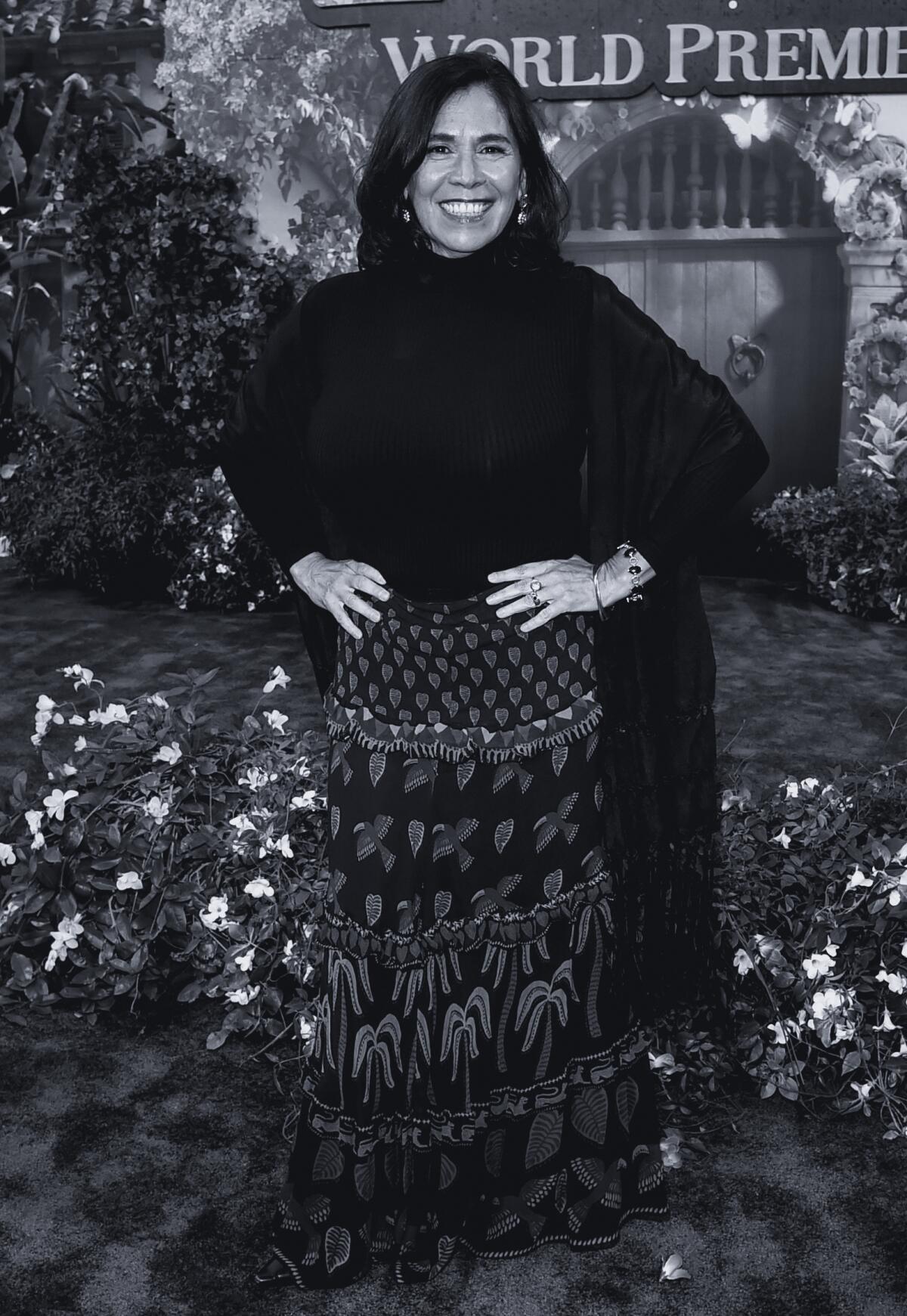
The first woman to score an animated Disney movie — and the first woman of color to be nominated for an Academy Award for original score — Franco composed the music for 2021’s smash “Encanto,” the charming magical-realist tale of the enchanted Madrigal clan in rural Colombia. Franco, who was raised in a Mexican American family in the ’70s in El Paso, found a place in the Disney universe with her work on Pixar’s 2017 film “Coco”; it was her songs, about a young Mexican musician, that drew the interest of Lin-Manuel Miranda, who wrote tunes for “Encanto,”including the Hot 100-topping “We Don’t Talk About Bruno.” A percussionist (and Stevie Wonder fan) since childhood, Franco has long counted on a kind of internal groove. But for “Encanto,” the composer, now based in L.A., did extensive research on Colombian music to get the score’s rhythms just right. — M.W.
Isaac Gómez, playwright
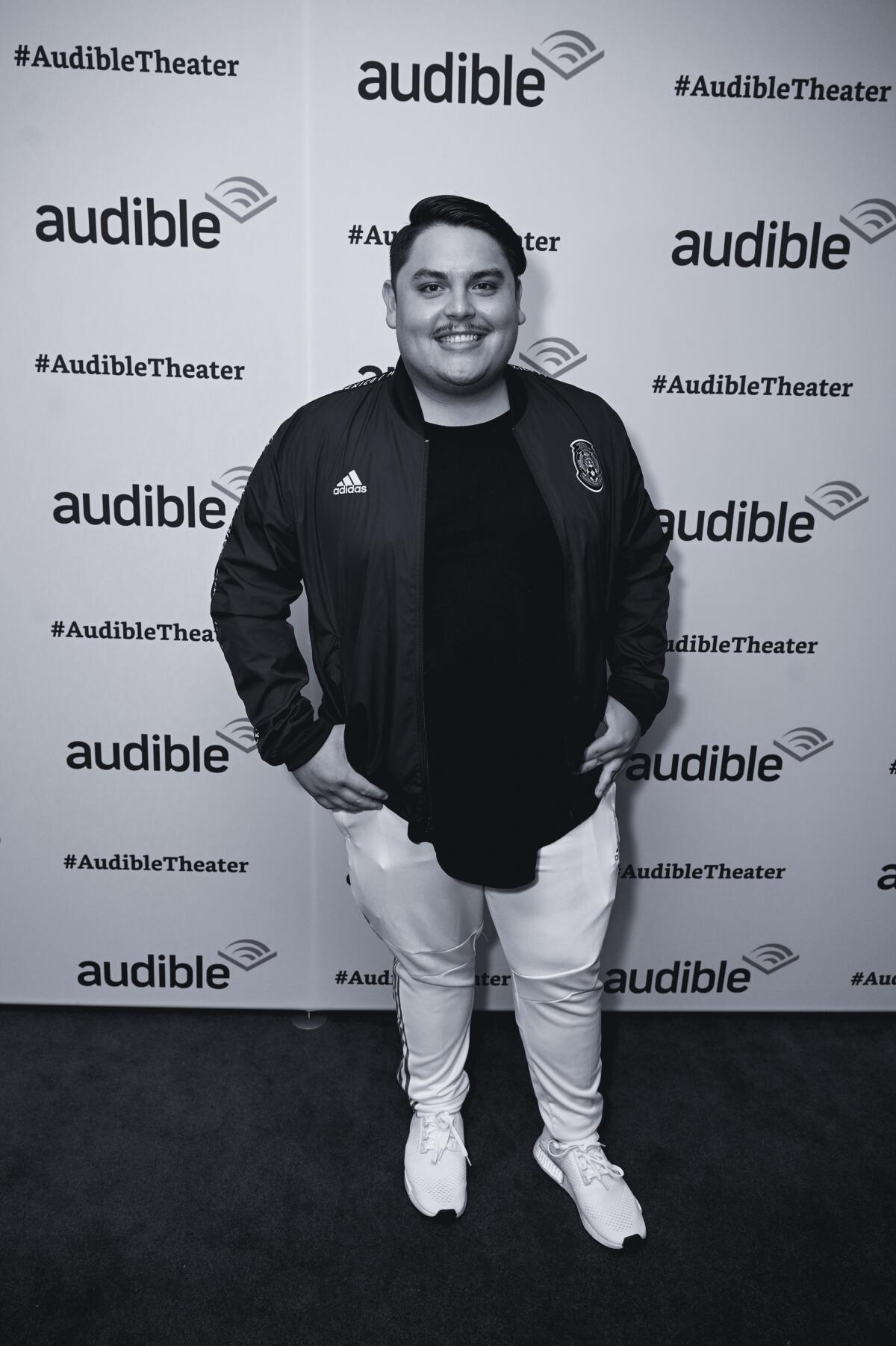
While attending the University of Texas at Austin as an undergraduate, the Chicago- and Los Angeles-based playwright took a Chicana feminism course that delved into the femicides in Ciudad Juárez, Mexico. As someone originally hailing from the border of El Paso, Texas, and Ciudad Juárez, Gómez became particularly dedicated to learning more about the activism surrounding the missing and slain women from the area. After traveling to the region and speaking with Mexican women who had been impacted by the violence, they wrote two gripping plays rooted in residents’ real testimonies: “La Ruta” — which saw its world premiere at Chicago’s Steppenwolf Theatre Company in 2018 — and “the way she spoke,” a one-woman show that premiered off-Broadway in 2019. Since then Gómez has also adapted Erika L. Sánchez’s novel “I Am Not Your Perfect Mexican Daughter” for the stage, and written for TV shows including “Narcos: Mexico.” — Steven Vargas
Lina González-Granados, L.A. Opera resident conductor
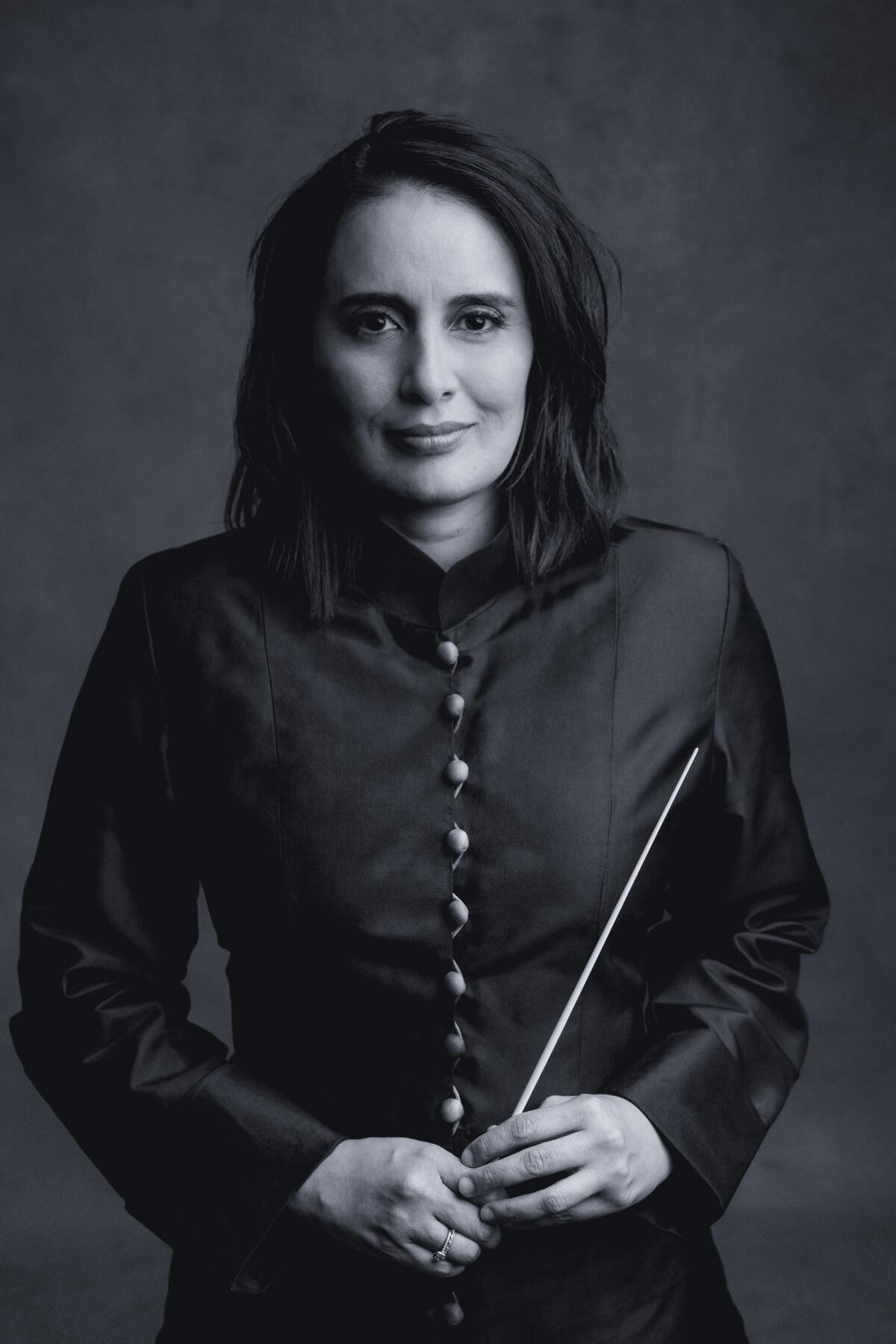
When conductor González-Granados was a little girl, she joined a traditional Spanish “tuna” in her hometown of Cali, Colombia. She dressed in an elaborate cloak, wielded a guitar and castanets and, when it was her turn to step into the center of the group and dance, did her best to master complex choreography. She also learned that music-making is joyful, communal and physical — and that she had talent and a good ear. Today, the 36-year-old González-Granados still makes music with her peers in a uniquely physical way. She joined L.A. Opera as its new resident conductor in September, opening its season with a bold production of Donizetti’s “Lucia di Lammermoor,” winning over audiences with a robust, fluid conducting style. “Opera belongs to all of us,” she says, adding that she is interested in bringing a major Latin American opera to the stage in L.A. — Catherine Womack
Harvey Guillén, actor
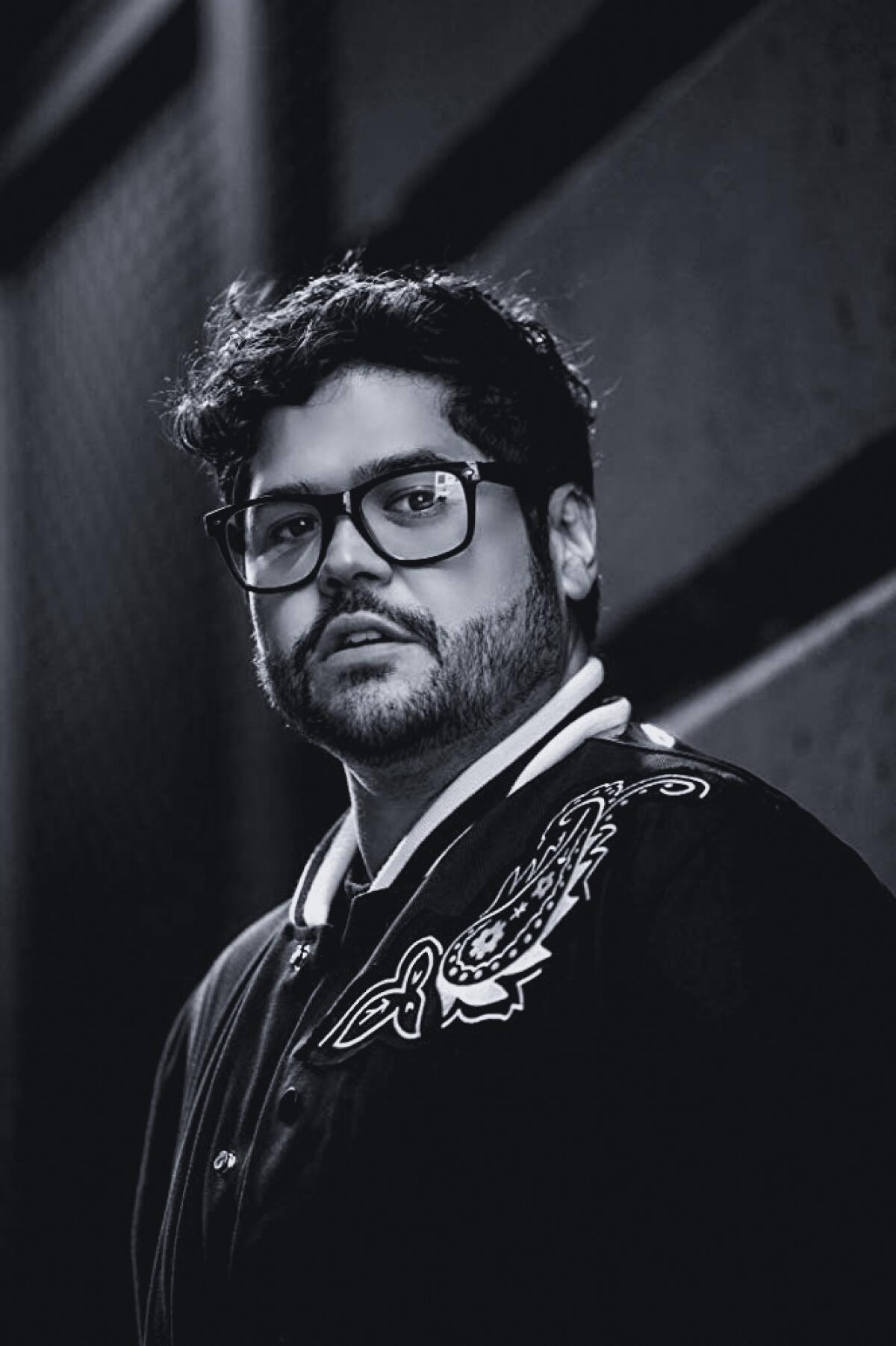
Guillén has become a familiar face thanks to his breakout role in the critically acclaimed “What We Do in the Shadows,” where he plays the lovable, relatable lone human among a group of vampire housemates. And just as audiences have been charmed by his character, Guillermo — while learning there is more to him than even he was aware of — Guillén has also endeared himself to fans for proudly embracing all aspects of who he is. The queer Mexican American actor knew from a young age that this was a career he wanted to pursue. Keenly aware that plus-sized, queer Latino men have been a rarity on mainstream TV, he has mentioned encounters with teachers and agents who were discouraging before his breakthrough. But with a résumé of roles on shows such as “Huge,” “Eye Candy,” “The Thundermans” and “The Magicians,” Guillén has kicked doors open for himself and has been vocal about keeping them open so the next generation of queer Latino kids can claim their own spaces and stories too. —T.B.
Jorge Gutierrez, artist and filmmaker
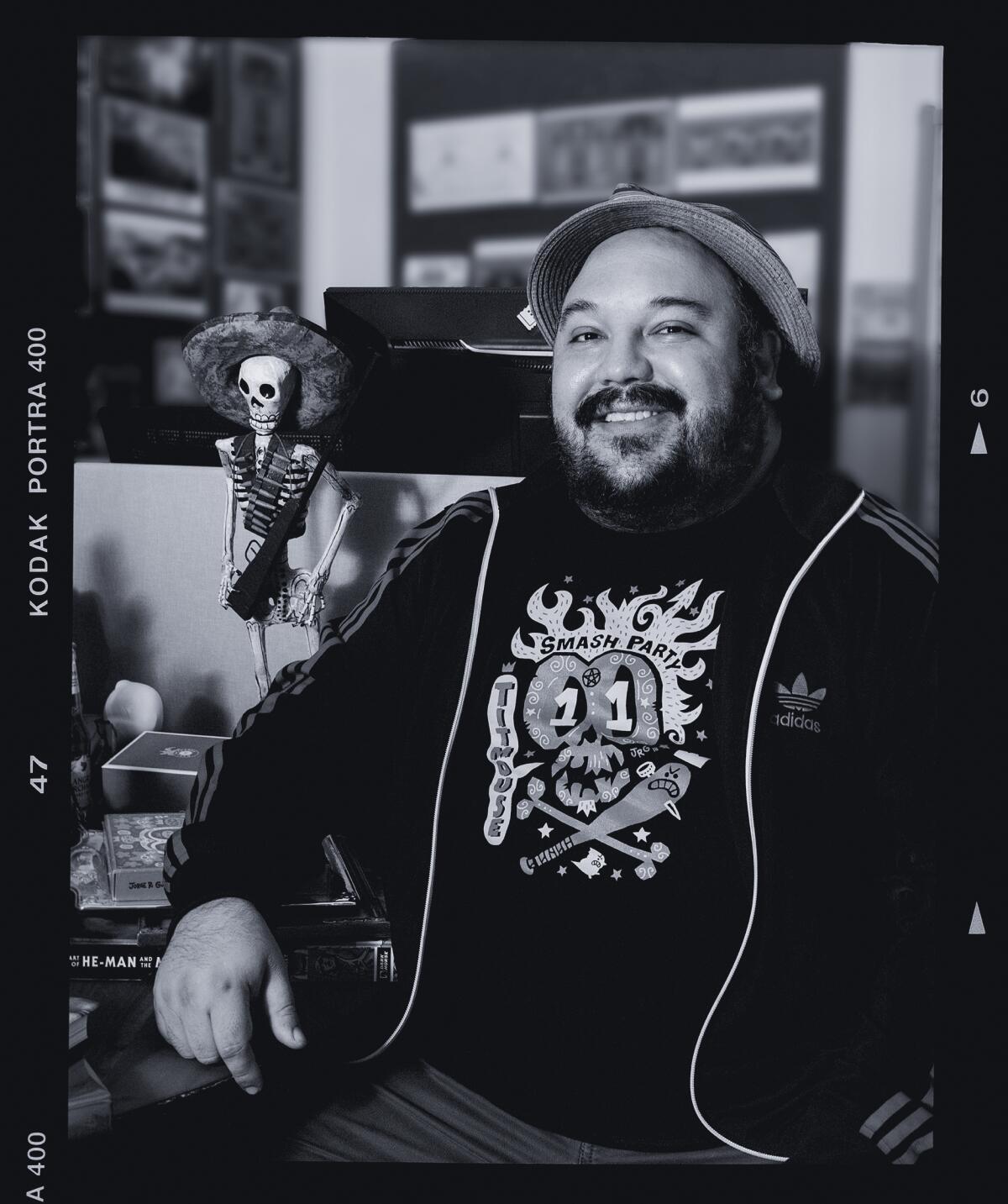
Known for his 2014 Golden Globe-nominated film, “The Book of Life,” animator-filmmaker Gutierrez is also an accomplished painter. The CalArts graduate’s first solo exhibition, “Border Bang,” debuted at Chinatown’s Gregorio Escalante Gallery in 2016 — but these days, he primarily shows online at Saatchi.com and on his Instagram account. He often uses the latter to promote other artists. Gutierrez, who grew up in Tijuana and traveled to San Diego every day for school, is passionate about boosting emerging Latin American artists and “helping the culture on both sides of the border,” he says. Often, when Gutierrez is excited about an artist, he shares their imagery with fellow Hollywood directors and showrunners or hires them to work on his own projects: He was smitten with Paraguayan sculptor Esteban Pedrozo Alé’s digital maquettes and commissioned him to work on “Maya and the Three” before the project sold to Netflix. Next up: Gutierrez’s animated Netflix feature, “I, Chihuahua,” starring comedian Gabriel “Fluffy” Iglesias. And scouring the internet for new emerging artists to champion. “People gave me a shot,” Gutierrez says, “so I want to pay it back.” — D.V.
Scott Mescudi, actor-producer-director
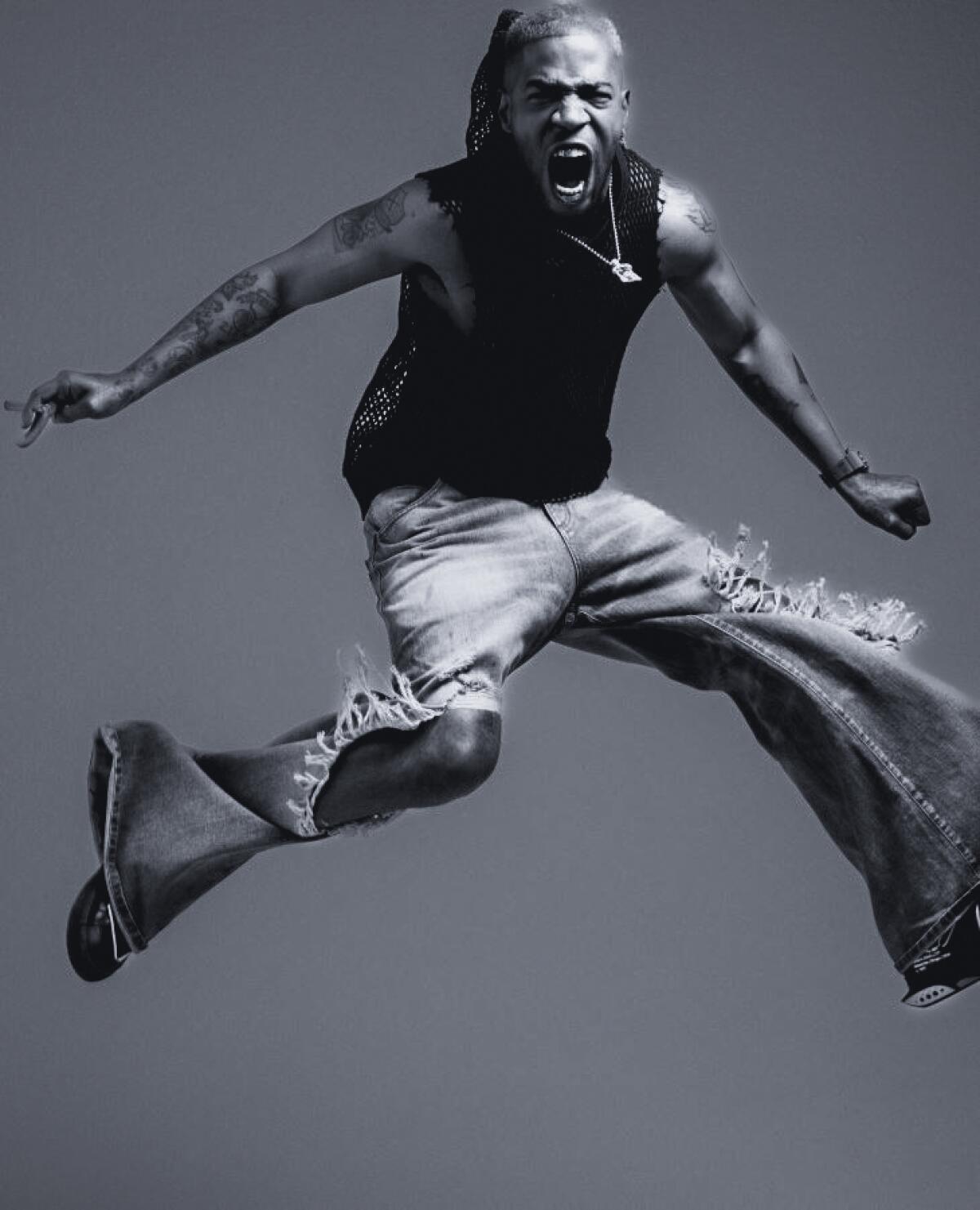
If you’re skeptical of Mescudi’s inclusion on this list, fair enough: As Kid Cudi, the Grammy-winning, multiplatinum artist has already firmly established himself as one of the most respected figures in pop music, collaborating with everyone from Kendrick Lamar to Michael Bolton. But as an actor, producer and director, the biracial Mescudi, whose father is Mexican American, is still coming into his own. Since appearing in HBO’s much-missed comedy “How to Make It in America” back in 2010, Mescudi has embraced an ever-widening array of roles, from chamber dramas (“James White”) to slashers (“X”), culminating in his piercing performance as a lieutenant colonel with a genderqueer child in Luca Guadagnino’s luminous “We Are Who We Are.” Now, with Netflix’s animated romantic comedy “Entergalactic” and his forthcoming directorial debut “Teddy,” Mescudi is bringing his voracious, exciting cultural appetites behind the camera. Lucky us. — M. Brennan
Vanessa Ramos, writer-producer

Ramos got her start in the business on “Comedy Central Roasts” writing barbed zingers about the likes of Roseanne Barr and Justin Bieber. But the writer-producer, who has a deal at Universal Television, has since moved into big-hearted workplace comedies like “Brooklyn Nine-Nine” and “Superstore.” Next up is “Blockbuster,” which she created. The sitcom follows employees at the last Blockbuster store in America, played by Randall Park and “Brooklyn Nine-Nine” alum Melissa Fumero (among others), as they seize the opportunity “to rekindle the human connections they lost to the digital age,” according to Netflix, where it arrives Nov. 3. (Irony noted.) — M. Blake
ReggaetonLandia, party promoters

Reggaeton music may have roots in the tropics, but it has inspired the hottest party in downtown L.A.: ReggaetonLandia. Hosted by Dominican MC Rickstarr and mixed by Ecuadorian Colombian DJ 2Deep — a recent sign to Steve Aoki’s label Dim Mak En Fuego — this club night has become a destination for scenesters looking to break a sweat to the latest Bad Bunny hits and energizing fusions of Latin trap, dembow and house. ReggaetonLandia is also the name of the collective, which aims to put on its own festival one day. “Our goal is to create a unique space within the event industry by genre-bending EDM and reggaeton,” says creative director Leslie Fuentes. Recent guests include Jhay Cortez and De La Ghetto; the buzzy D.R. rapper Tokischa headlined at the Novo on Oct. 21. — S.E.
Aida Rodriguez, comic
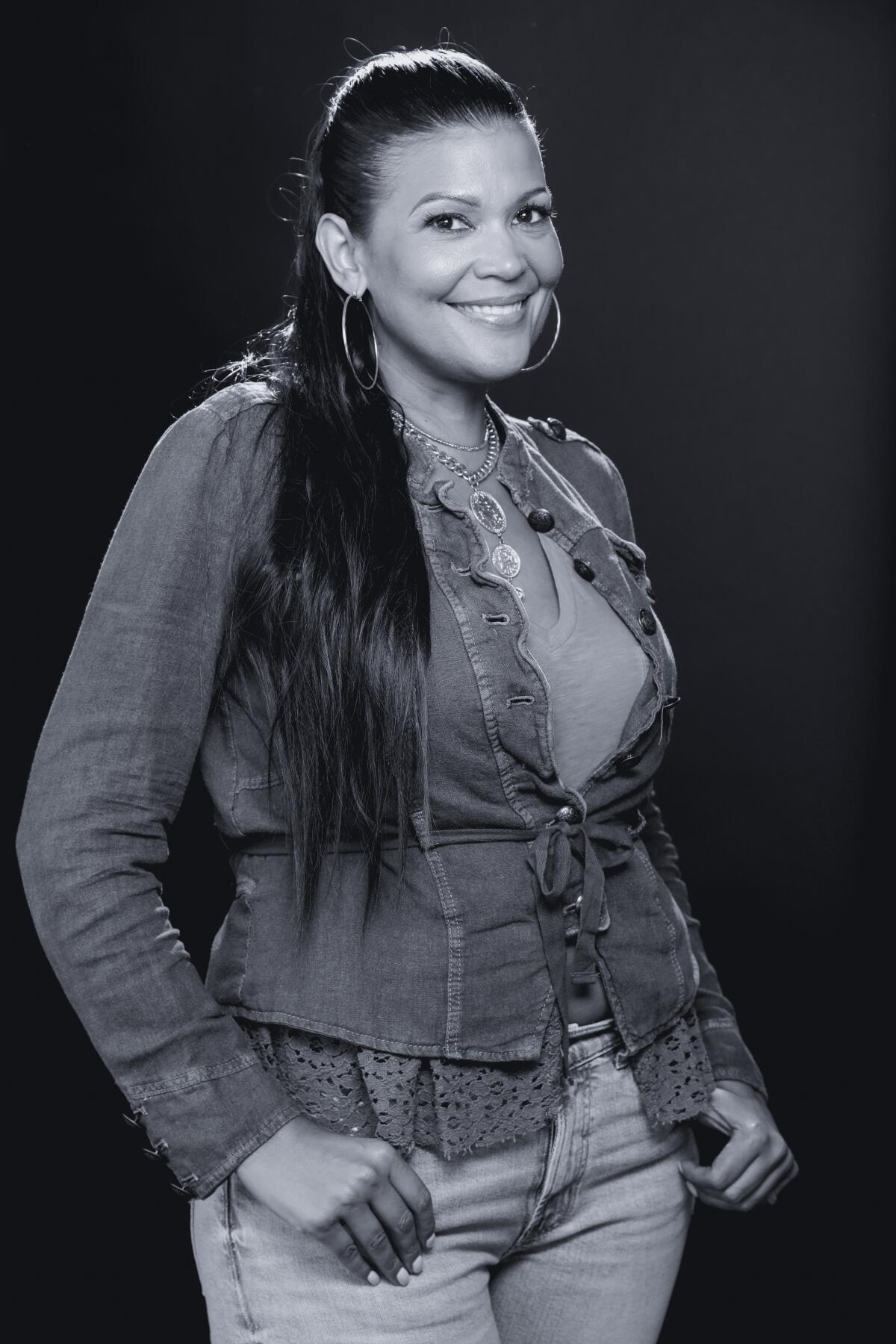
Since landing her first hourlong stand-up special “Fighting Words” for HBO Max in 2021, comedian, writer and actor Rodriguez has been busy. The Puerto Rican and Dominican comic currently has her own semi-autobiographical half-hour comedy series in development for the streamer, which will touch on pivotal moments in her life including surviving two kidnappings, sexual abuse and battling homelessness as a single mother raising two teenagers. She also recently signed a deal for an animated series for ITV, hosts her own podcast, “Truth Serum,” and is a guest writer for Buzzfeed. In the past, Rodriguez has headlined HBO’s Latino stand-up special “Entre Nos,” Netflix’s Tiffany Haddish- and Wanda Sykes-produced “They Ready” and Showtime’s “Shaquille O’Neal Presents: All Star Comedy Jam,” one of just four women to do so in the series’ 15 seasons. Since being named a finalist on NBC’s “Last Comic Standing” in 2014, she has been featured on Comedy Central’s “This Week at the Comedy Cellar,” HBO’s “Pause With Sam Jay” and TBS’ “Tournament of Laughs.” — S.K.
James Rojas, urbanist
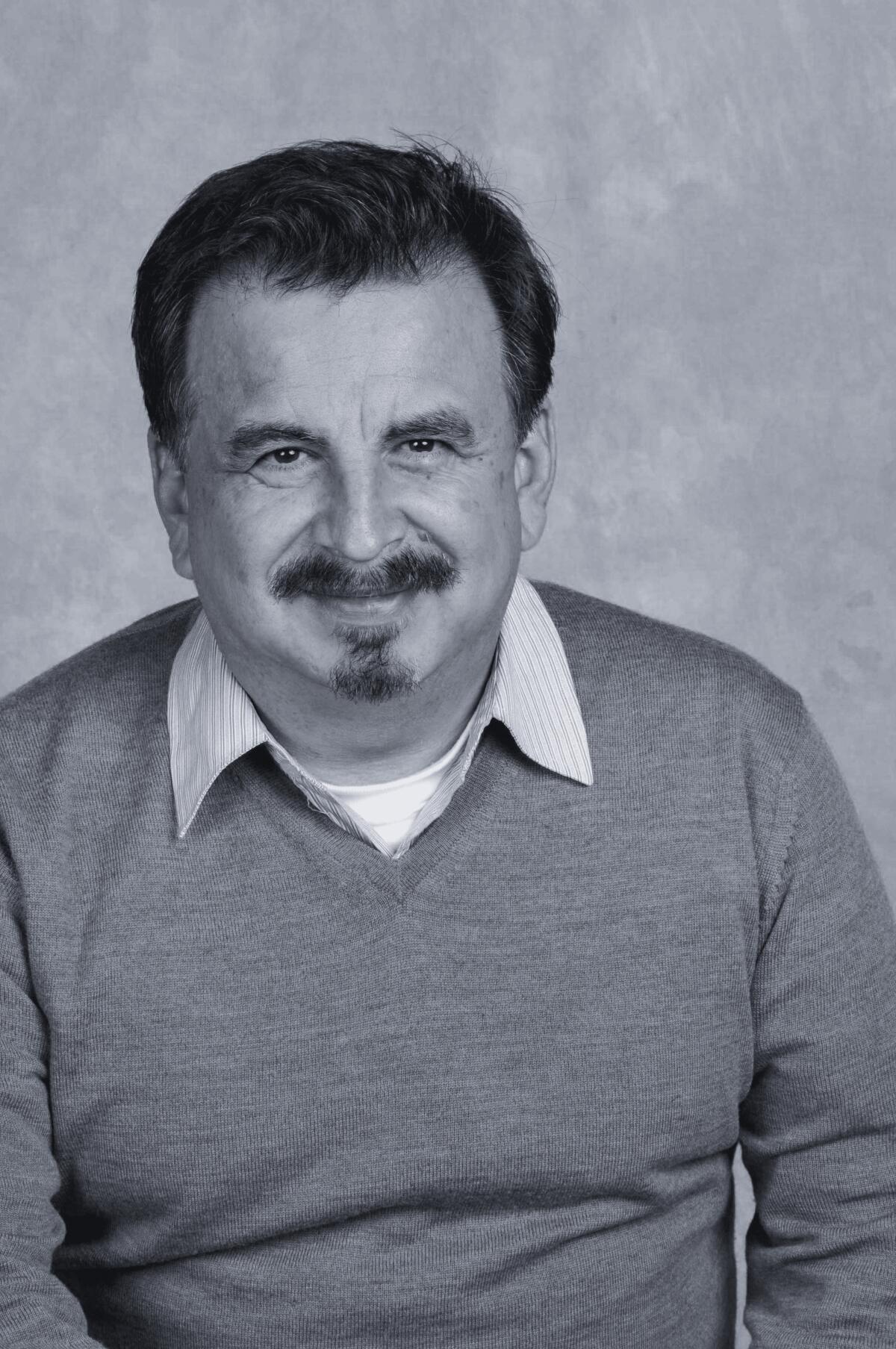
A vendor plies bacon dogs on a side street. A family sells clothes from a fence that encircles their yard. A garage functions as informal dry goods shop — the sidewalk out front, a site of impromptu conversation. The ways in which Latin American immigrants use public space is something that motivates the work of urban planner Rojas. Raised in East L.A., Rojas has been a pioneer in the study of Latino Urbanism, the ways in which Latinos mold “hostile auto-centric streets” into “sensory-rich urban places.” These ideas are at the heart of his recent book, “Dream Play Build,” written with fellow planner John Kamp. They are also at the heart of planning workshops he leads with Kamp, which bring a sensory approach to what is generally a very dry process. His work has defined new areas of study. It’s also a reminder that Los Angeles is Latino not just in name, but in the very character of its streets. — C.A.M.
Shizu Saldamando, artist
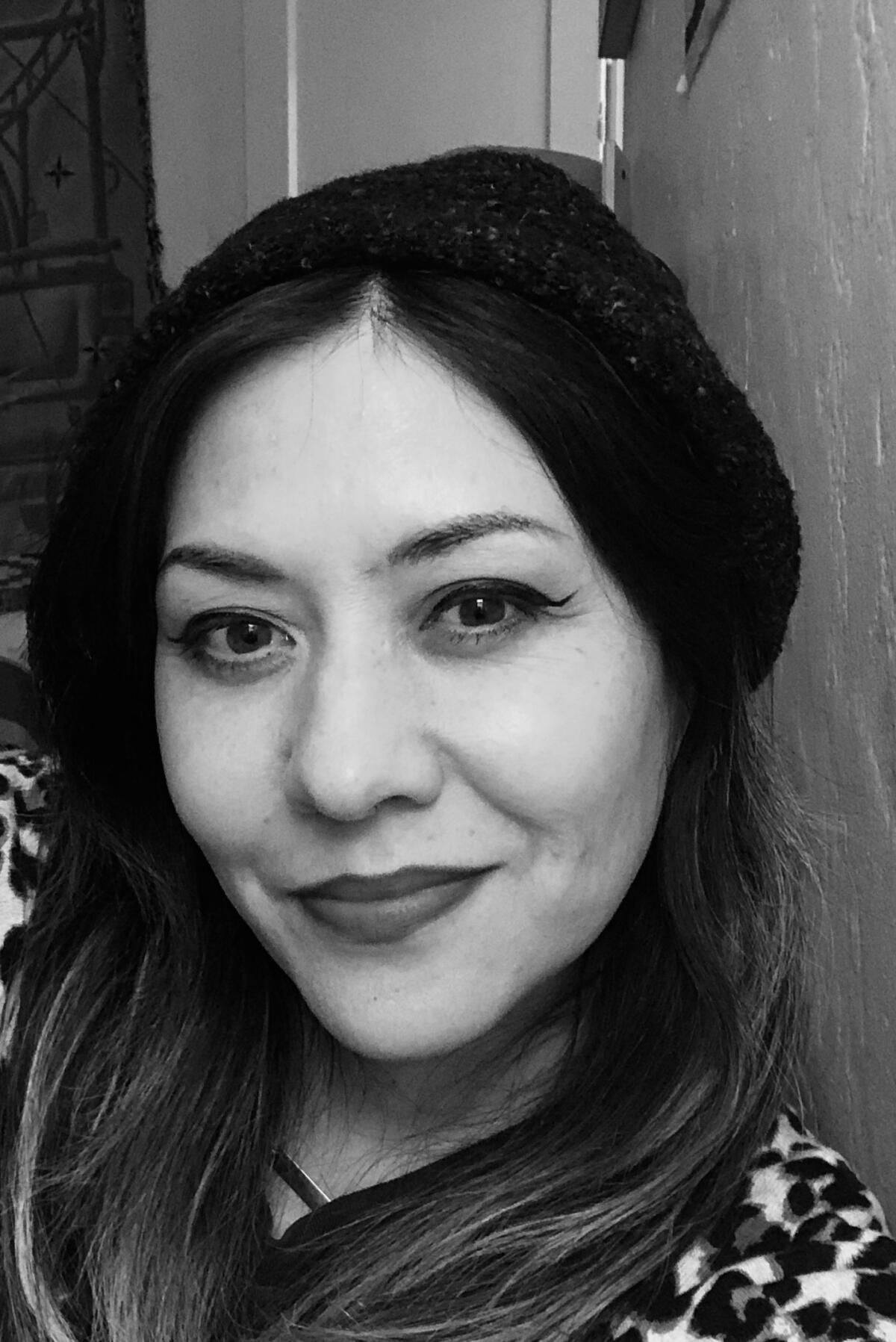
The East L.A.-based, San Francisco-born Japanese Mexican artist Saldamando has spent the last two decades creating intimate portraits of friends, artists, activists and others in L.A.’s Latino community. One of her portraits features performance and installation artist rafa esparza, a close friend, in profile; his arm tattoo, “Mi Unico Amor,” is featured prominently. In another piece, painter Patrick Martinez, who helped nurture Saldamando’s career, is pictured wearing a Dodgers cap in his Highland Park backyard, lush vines dangling around him. Individually, the portraits address disparate identities and subcultures. Together they converge into a hand-rendered archive documenting generations of Latino creatives. Saldamando, who also works with mixed media, sculpture, video and tattoo art, among other mediums, has shown at the likes of 2008’s “Phantom Sightings: Art After the Chicano Movement” at the Los Angeles County Museum of Art and the National Portrait Gallery. — D.V.
Angel Manuel Soto, filmmaker
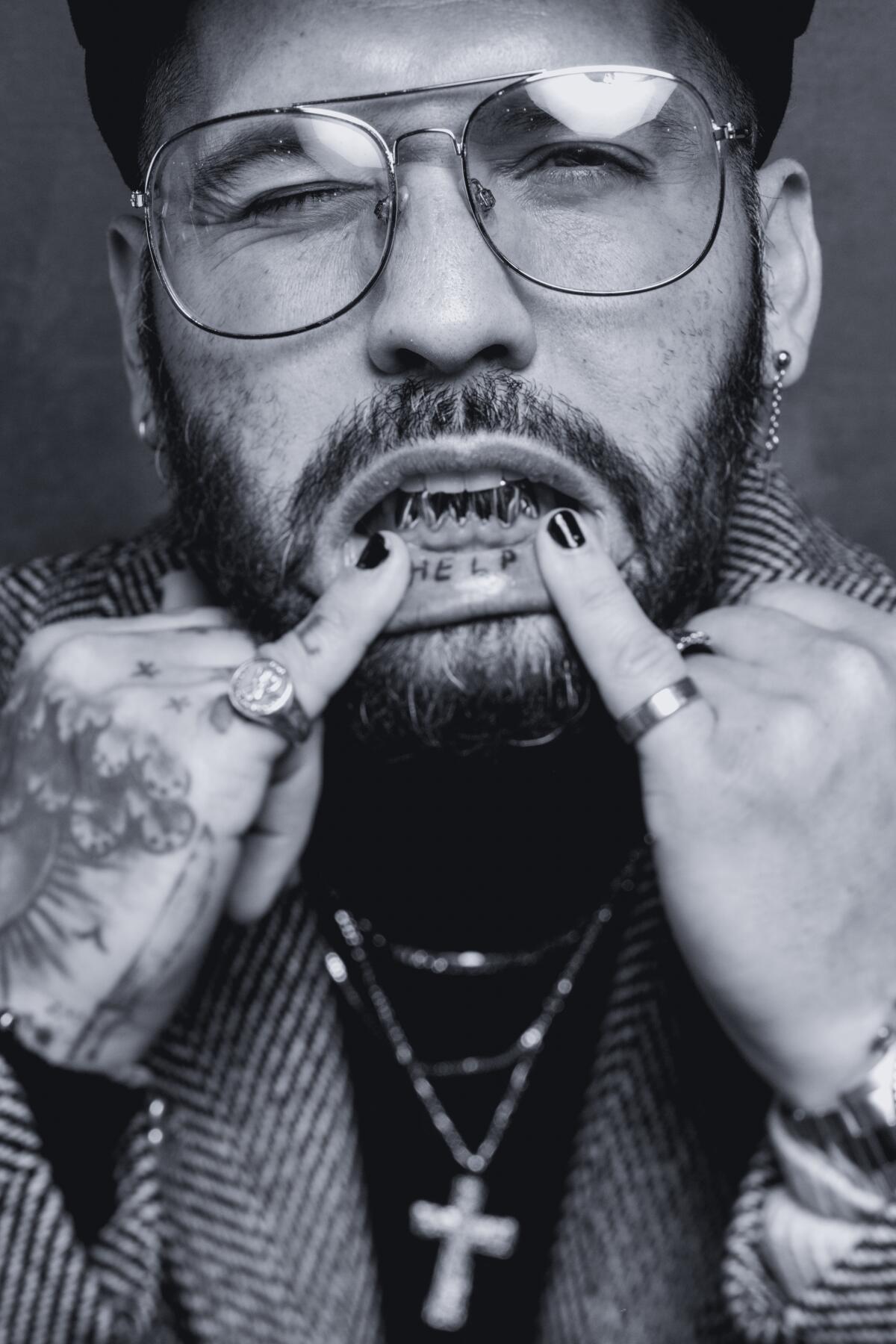
Puerto Rican filmmaker Angel Manuel Soto’s pitch to direct “Blue Beetle,” the first DC Extended Universe movie to feature a Latino superhero, was passionate and to the point. Soto wanted to make a comics adaptation that centered on a superhero who championed the people, specifically a Latino population possessing a culture prioritizing family. Soto earned the job, and “Blue Beetle,” which will arrive in theaters in August, has the potential to be a landmark film for Latino representation. It’s a meteoric rise for Soto. His last movie, “Charm City Kings,” a winning drama centered in the Baltimore dirt bike subculture, won a special jury prize for its ensemble at the 2020 Sundance Film Festival and then got lost in the first year of the pandemic. That’s not likely to happen with “Blue Beetle” — or Soto, who was also recently tapped to help revive the “Transformers” franchise as a director. — G.W.
Stillz, creative director
Can’t get enough of Bad Bunny’s music videos? You can thank the Miami-born, L.A.-based creative director known as Stillz. Born Matias Vasquez, the 23-year-old has worked with the Puerto Rican superstar since 2019, when he directed the dimly lit visual for “Vete.” Stillz has a hand in all things visual for Bad Bunny and has helped elevate his brand to global status. Stillz’s résumé goes beyond the “Un Verano Sin Ti” hitmaker too — he’s also directed videos for Lil Nas X, Rosalía and fellow LA Vanguardia honoree Omar Apollo. — K.D.
Walter Thompson-Hernández, writer-director
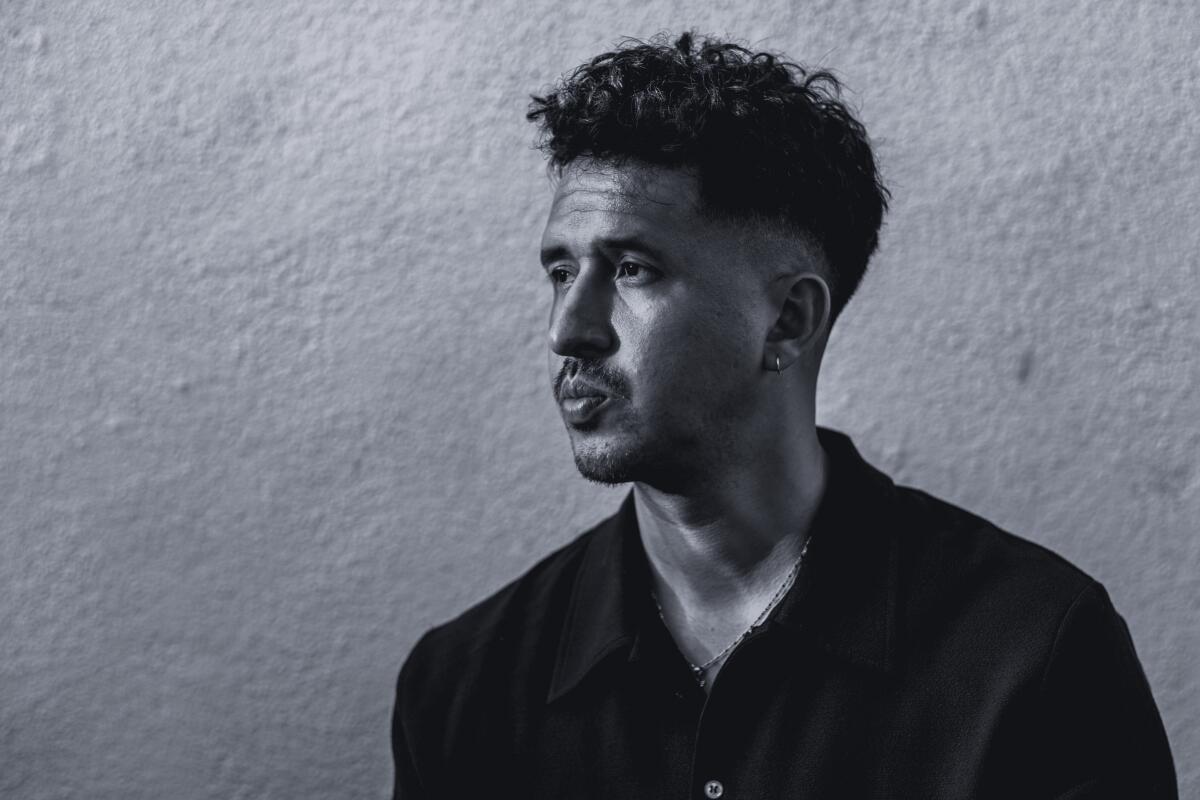
Thompson-Hernández’s fictional short film “If I Go Will They Miss Me,” set at the Imperial Courts housing project in Watts, won a Sundance award this year — yet another reason why he needs to update his personal website. The earnest copy that the writer-director crafted a few years ago still describes him as a “multimedia journalist, exploring the world, asking what it means to belong.” It’s an artifact of his days covering culture for the New York Times, a job that took him to Rio de Janeiro, Japan, the Dominican Republic and Oaxaca, Mexico. “I’m like, wow, that was the lane that I was in, and now it’s almost a completely different lane,” the El Sereno-based writer-director, 37, said in a recent interview with The Times, which previously covered his 2020 book on the Compton Cowboys. Thompson-Hernández’s old lane focused a lot on identities: In a 2015 essay for BuzzFeed, he wrote, “I first learned I was a Blaxican from a DJ on Power 106 FM, a Los Angeles hip-hop station. ... It changed the way I, the son of an African-American man from Oakland and a first-generation American from Jalisco, Mexico, self-identified forever.” Now tis trajectory from journalist to artist includes five visual projects and a book in development. Look for a longer LA Vanguardia conversation with Thompson-Hernández later this week. — M.P.
Kali Uchis, musician
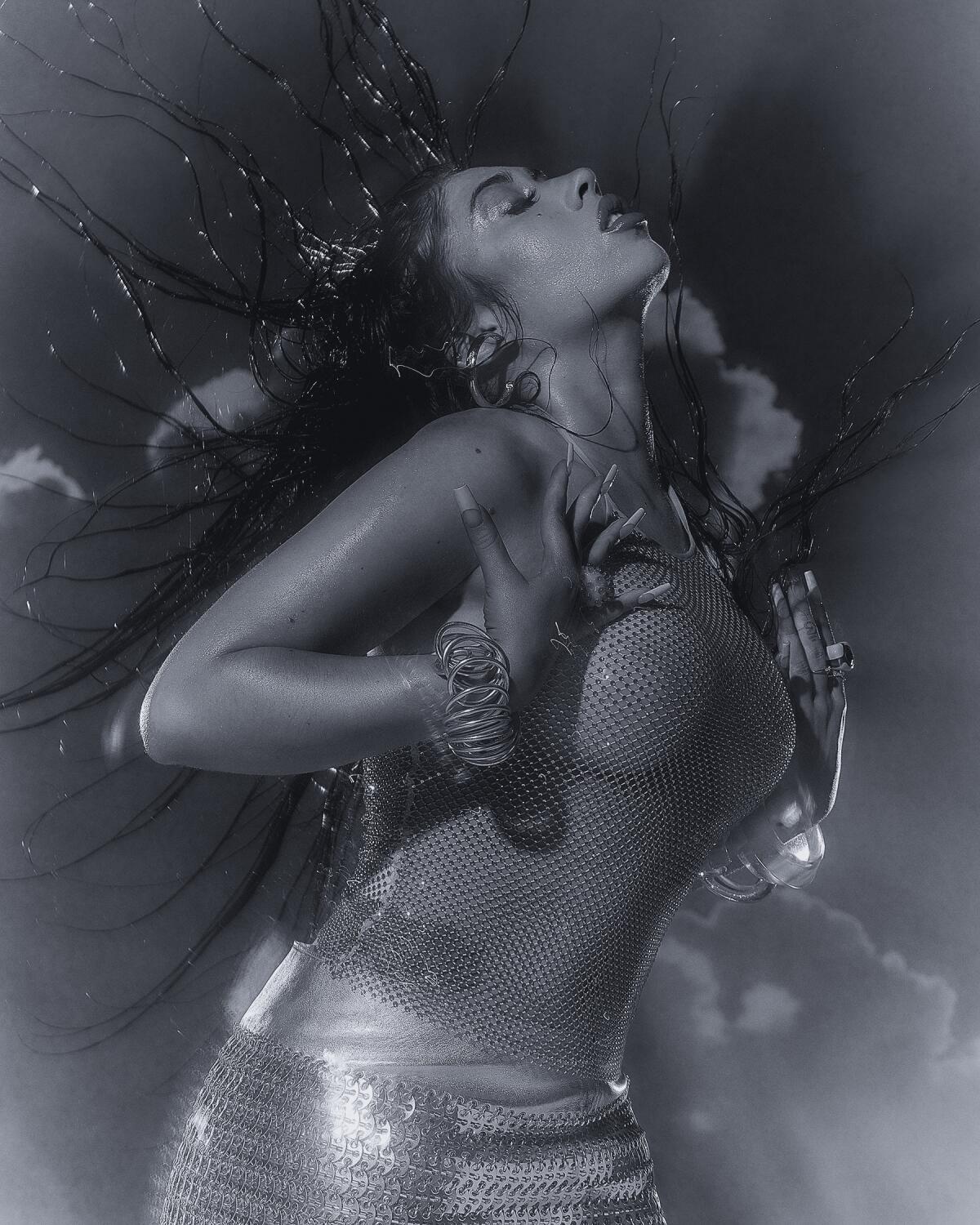
Born in Virginia to Colombian immigrants, Uchis grew up bouncing between the U.S. and Colombia before settling in L.A. around 2015. Yet in her polyglot music, the 28-year-old singer and songwriter has never stopped roaming: “Isolation,” her 2018 full-length debut, moved easily between glossy psychedelia and crinkly old-school soul, while 2020’s Spanish-language “Sin Miedo (del Amor y Otros Demonios) ∞” — a “dream space,” per Uchis’ description, where she can sound “like some type of otherworldly creature” — took in reggaeton and the classic boleros she heard as a kid. Last year her single “Telepatía” blew up on TikTok then found a home on Top 40 radio; this year she toured arenas with Tyler, the Creator and covered “Desafinado” for the latest “Minions” movie. — M.W.
María Zardoya, musician

As lead vocalist of L.A. lounge-pop romantics the Marías, Puerto Rican singer-songwriter Zardoya has suffused SoCal’s music scene with her enigmatic, Spanglish-language cool. Following the success of the Marías’ 2021 debut, “Cinema,” Zardoya and multi-instrumentalist Josh Conway were tapped by Boricua superstar Bad Bunny to write “Otro Atardecer” — a spellbinding indie-pop highlight on his Grammy-nominated album, “Un Verano Sin Ti.” Zardoya has since joined Bad Bunny on multiple dates of his stadium tour, amplifying her own Caribbean heritage with a touch of alt Hollywood glam. — S.E.
Sabina Zúñiga Varela, actor
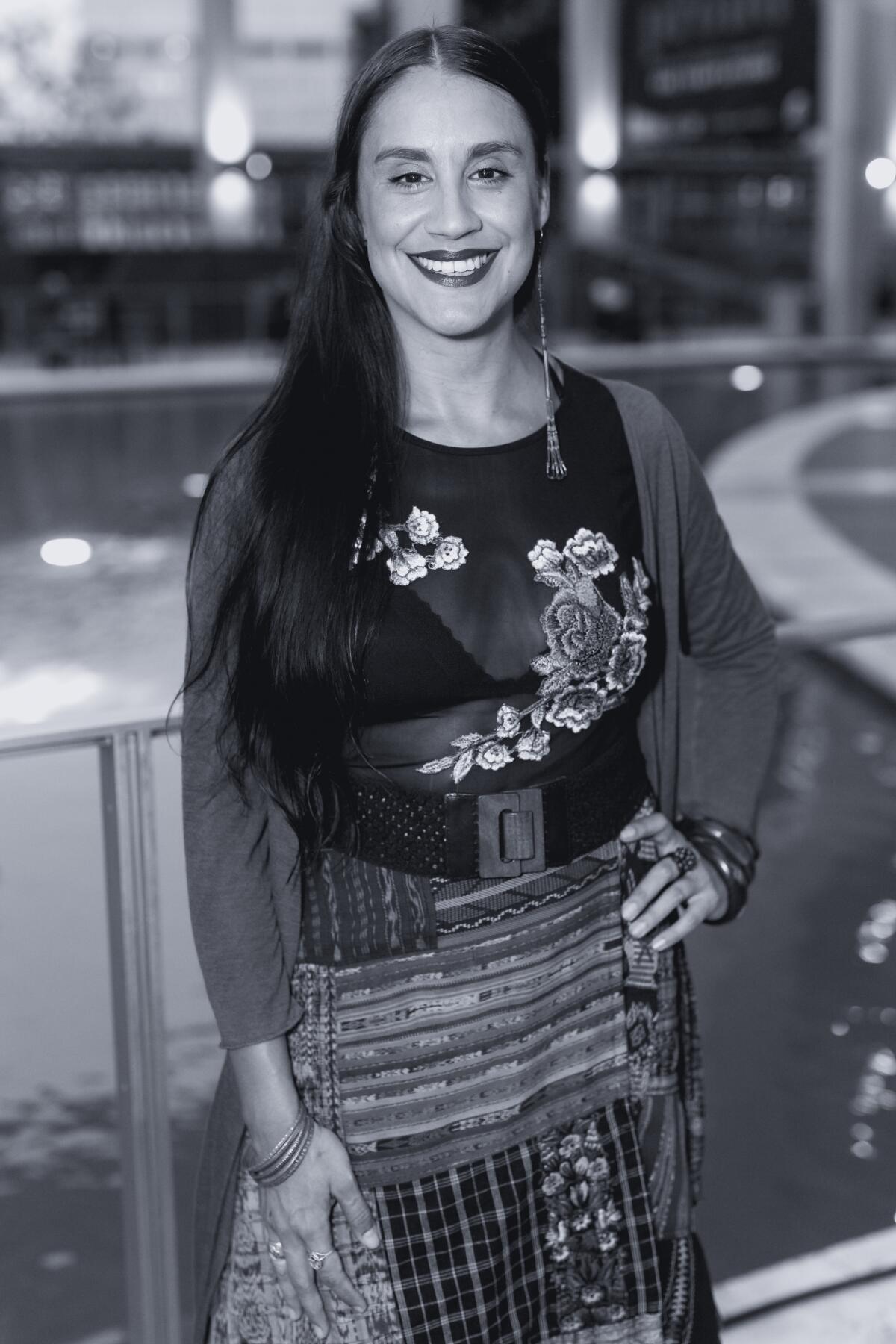
The light that Zúñiga Varela radiates in her acting comes from a luminous intelligence. Her characters are quick to take in subtleties others miss. A renowned acting teacher at USC, where she received her MFA, Zúñiga Varela was born and raised in New Mexico. The daughter of a civil rights activist and a Vietnam veteran, according to her website bio, she “was raised on red and green chili, elk meat, jazz, and Cat Stevens.” A stage actor who has anchored updated versions of Culture Clash’s “Chavez Ravine,” Zúñiga Varela transforms whatever she touches. In Luis Alfaro’s “Mojada: A Medea in Los Angeles,” she lent an aching new reality to the vengeful wife who was reimagined as a hardworking Boyle Heights seamstress. Zúñiga Varela, whose TV appearances include a recurring role a few seasons back on “Madam Secretary,” brings a soulful timelessness to her theatrical work that bridges historical eras and cultural backgrounds. — C.M.

Colman Domingo, actor
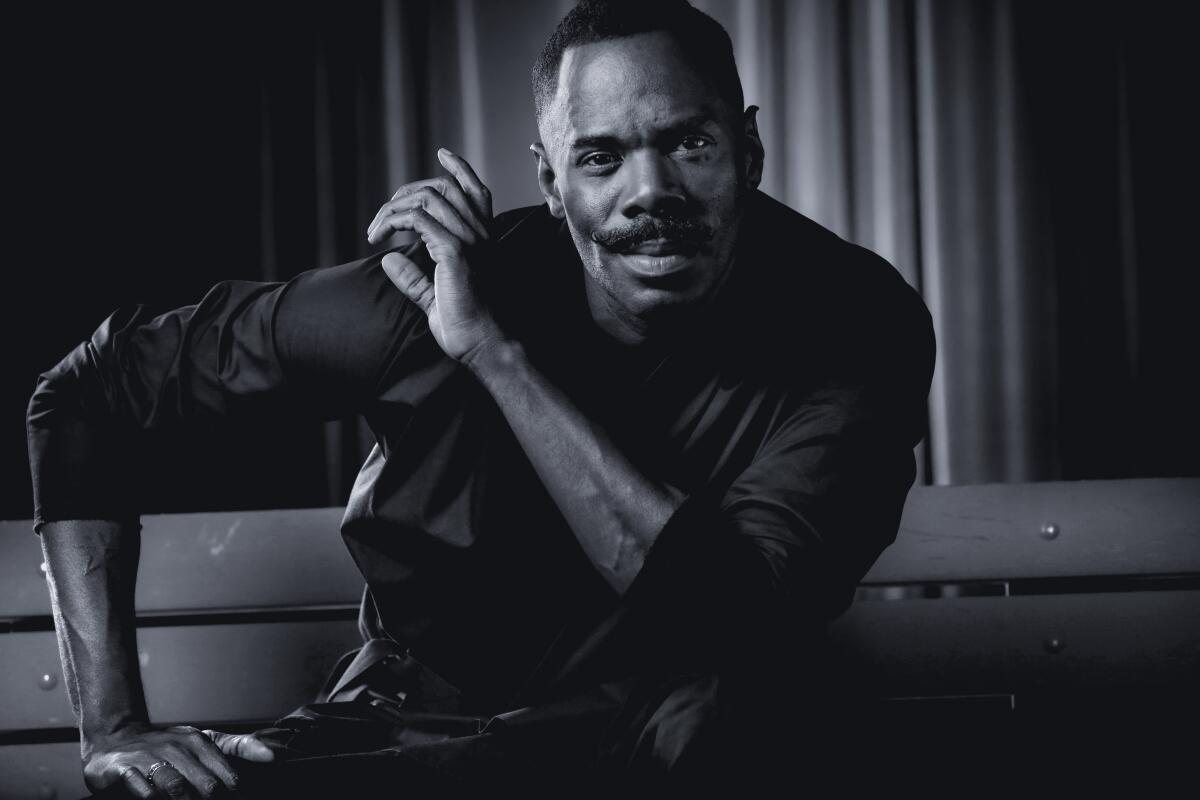
After breaking out in the acclaimed New York stage show “Passing Strange” and earning Tony and Olivier Award nominations for his performance in the musical “The Scottsboro Boys,” Domingo delivered impossible-to-ignore supporting performances in ensemble movies like “If Beale Street Could Talk,” “Ma Rainey’s Black Bottom” and “Zola” — and that’s all while filming seven seasons of AMC’s spinoff series “Fear the Walking Dead.” Earlier this year, he won an Emmy for his guest role in “Euphoria” as Ali, a recovering drug addict and ever-patient sponsor to Zendaya’s character, Rue. Next year, Domingo — who is also an acclaimed playwright, director, producer and teacher — is stepping into the spotlight: In addition to his recurring TV roles, he is set to portray gay civil rights activist Bayard Rustin in the biopic “Rustin” and sing in the star-studded adaptation of the Broadway musical “The Color Purple,” both due in 2023. — A.L.
Erick Galindo, writer, documentarian and podcaster

Self-described Mexican American redhead and Downey native Galindo has already left his mark all over the L.A. media scene, and his star is still rising. He’s been a managing editor at the bootstrapping indie outlet L.A. Taco; a columnist at LAist/KPCC; and a podcast creator with KPCC, Futuro Studios and Sonoro. Earlier this year, he co-hosted the eight-episode podcast “Ídolo: The Ballad of Chalino Sánchez,” which tells the story of the real-life “godfather of narcocorridos,” who was slain in 1992 in Culiacán, Mexico, and left a long shadow on both sides of the border. “Chalino lived a few blocks away from where we lived when I was a kid,” Galindo, whose family emigrated from Sinaloa, told The Times earlier this year. “His music captured this microcosm of L.A. during that time, the same way Biggie Smalls did for Brooklyn.” Galindo’s 2020 essay for the New York Times about Downey, “The Mexican Beverly Hills,” got picked up by CBS last year for development as a family comedy, with Galindo writing and executive producing. — M.P.
Josefina López, foundational playwright
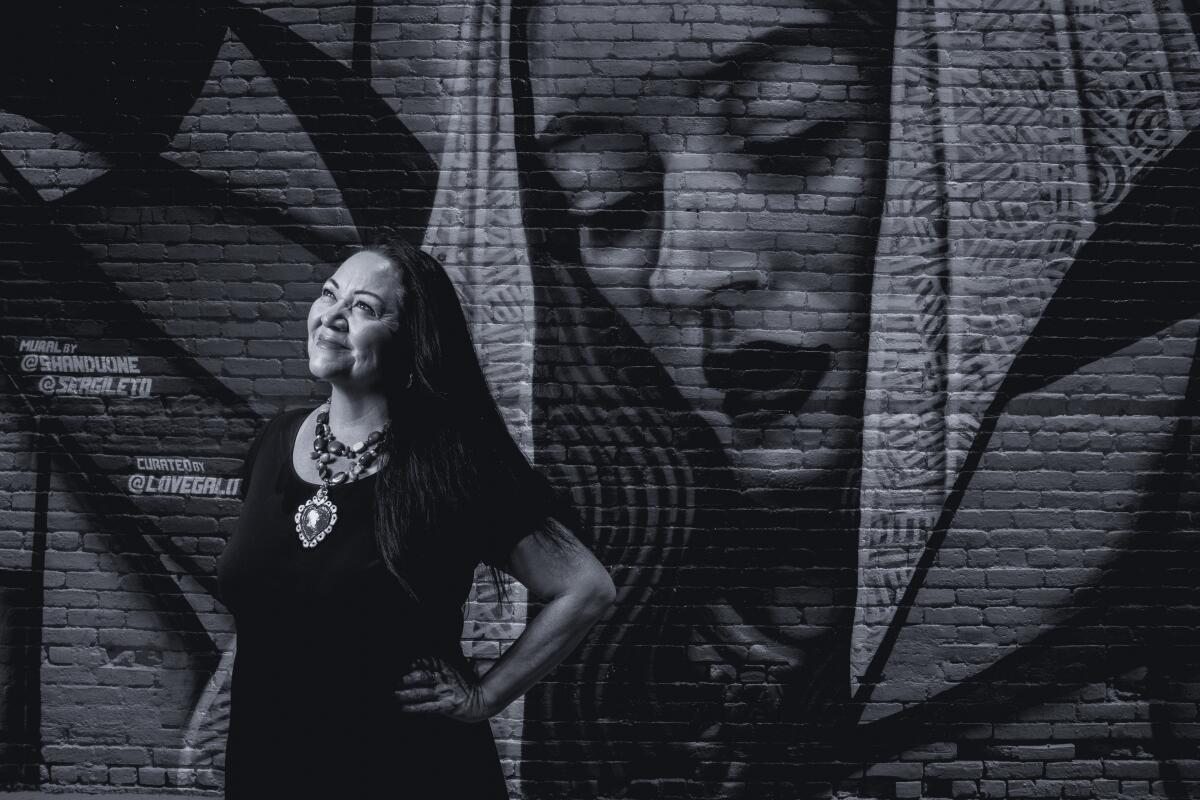
Perhaps best known as the author of the play “Real Women Have Curves,” López has worked throughout her career to bring more Latinos to theater and TV. For one very concrete example: The 2002 movie adaptation of her play, which she co-wrote, became the first Latina-directed project in the Library of Congress’ National Film Registry. As the founding artistic director of Casa 0101 Theater in her hometown of Boyle Heights, López has nurtured local Latino artists and their work on women and the Latino diaspora for 21 years. Her plays — on topics ranging from immigration to a retelling of the La Llorona myth — have been produced dozens of times across the country. “A lot of her work is centered on giving representation and voice to very strong, articulate, intelligent Latinas and Chicanas,” said J. Ed Araiza, professor and theater department chair in the UCLA School of Theater, Film and Television. “A theme in much of her work is that you can desire and strive for success without letting go of who you are, your self identity and your culture, and that’s a really huge thing.” — D.P.
Viktor Manoel and Lorena Valenzuela, dance organizers
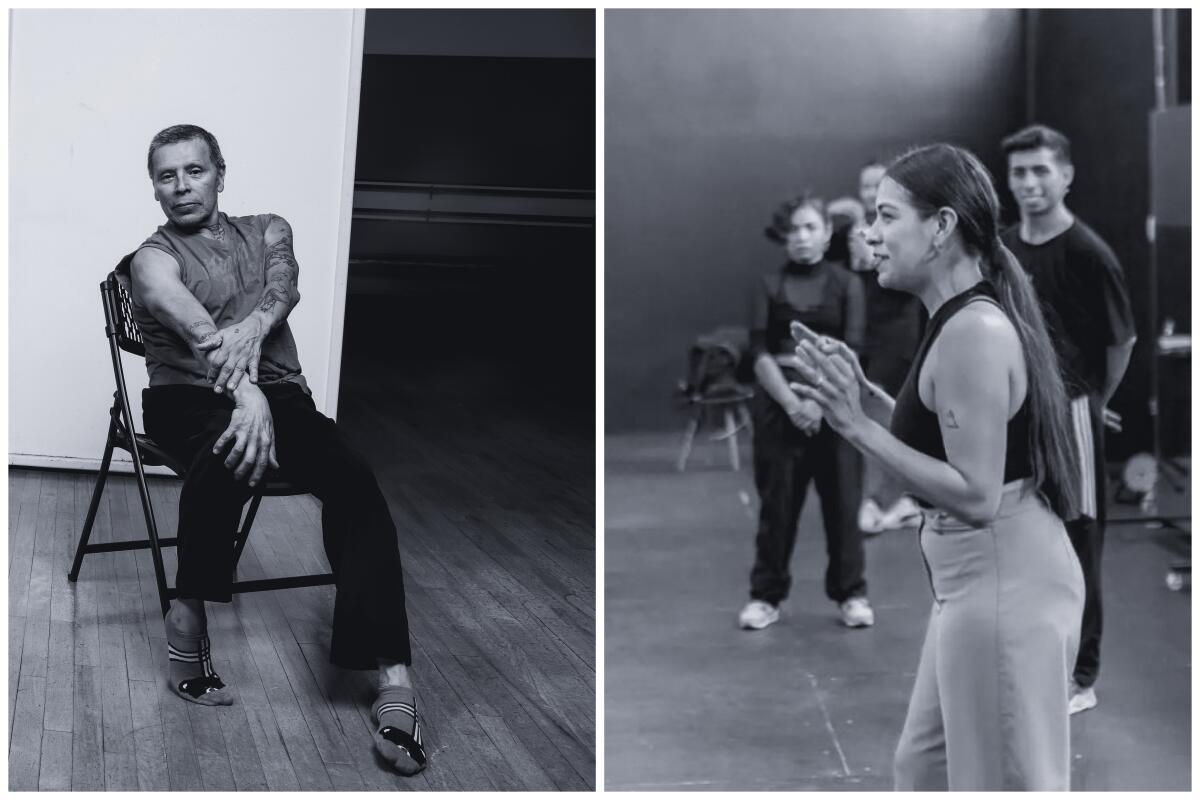
The dance style of punking — a sharp, fast series of expressive movements that makes use of exaggerated looks and body language inspired by the likes of cartoons and celebrities — emerged in underground Hollywood clubs during the mid-1970s, when gay men flocked to the safe space of the dance floor to find community and themselves. Punking and another style of dance called whacking became more mainstream, and by 2009, when early punking scene figure Viktor Manoel began to teach punking to new generations, he realized how much of its history had been lost. “I’m still fighting for that truth that needs to be told,” he says, “because the gay culture cannot be forgotten.” Enter Lorena Valenzuela, one of the whackers trying to preserve the history of the movement. She became a mentee of Manoel’s, and she shared his frustration over the loss of a sense of community. Valenzuela went on to found Strike With Force, a whacking festival in Los Angeles. She invited dancers from around the world to the festival’s first iteration in 2018, and she went on to produce other Strike With Force festivals in Italy and Mexico. Smaller gatherings began popped up as the community started growing. The goal of the festival is to “empower kids and make them feel safe,” Manoel says, “and make them feel like they belong, because this dance belongs to them.” LA Vanguardia will have more on Manoel and Valenzuela later this week. — S.V.
Luis J. Rodriguez, literary lodestar

The trajectory from gangbanger in South San Gabriel to city poet laureate and bestselling author would have been dramatic enough. But over his decades of work, Rodriguez has also become a mentor to thousands and, as co-founder of the Sylmar-based Tia Chucha’s Centro Cultural and Bookstore, the creator of a cultural oasis in the San Fernando Valley. His 1993 breakthrough memoir, “Always Running,” about his youth as a gang member and the counselor who changed his life, was followed by more than a dozen published works — including children’s books, poetry collections and the memoir, “It Calls You Back,” a National Book Critics Circle Award finalist. Rodriguez has given back the better part of himself to the communities he came from — modeling the path of socially conscious art and cultural leadership for the generations that followed. He has taught writing workshops in California prisons and beyond; he’s even run — twice — for California governor. “He’s so committed to helping folks story themselves out of one’s situation and into a better version of themselves,” said author and scholar Jason Sexton. “I can’t think of any other L.A. writer who communicates with such rigor and passion and truth and honesty the lived experience like Luis has.” — D.P.
The biggest entertainment stories
Get our big stories about Hollywood, film, television, music, arts, culture and more right in your inbox as soon as they publish.
You may occasionally receive promotional content from the Los Angeles Times.